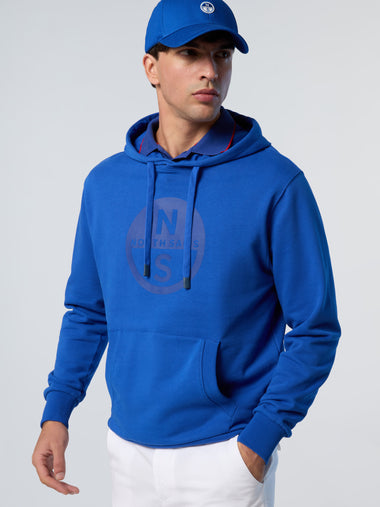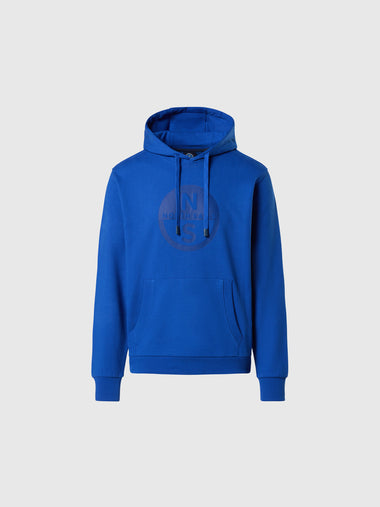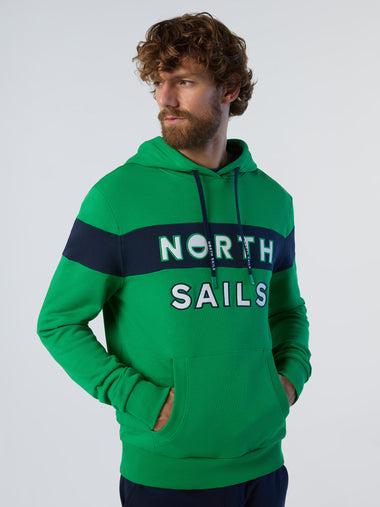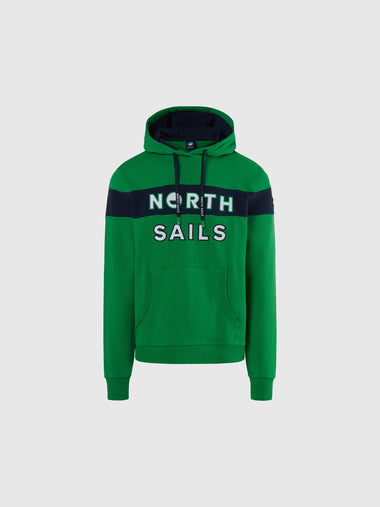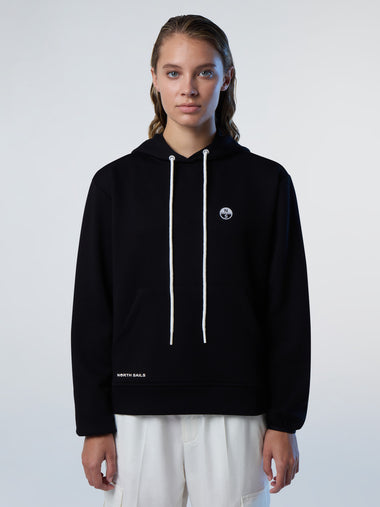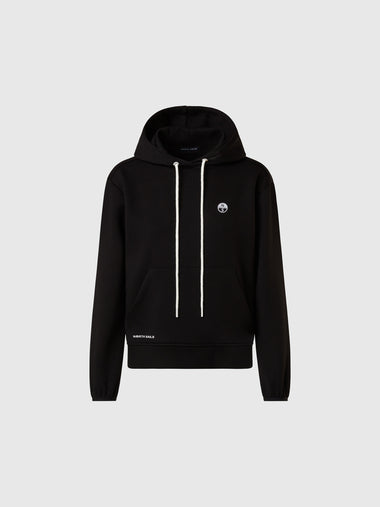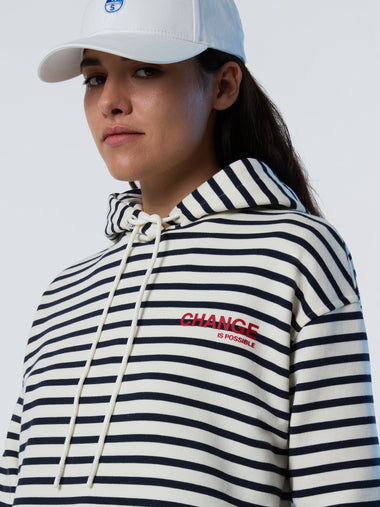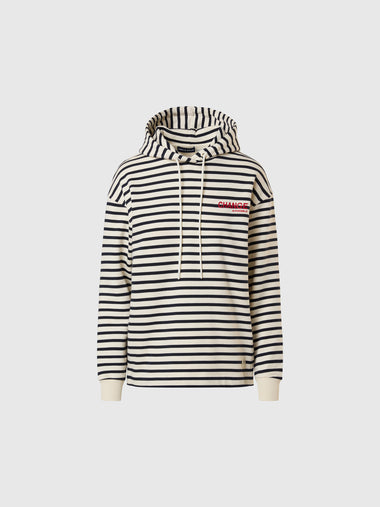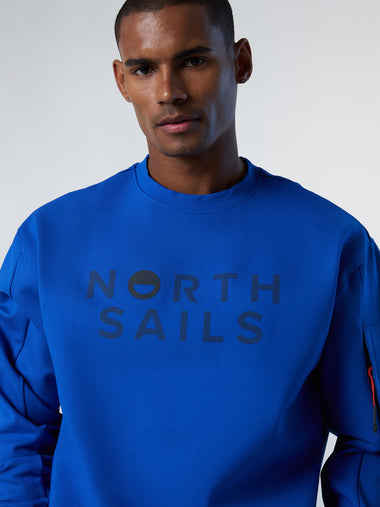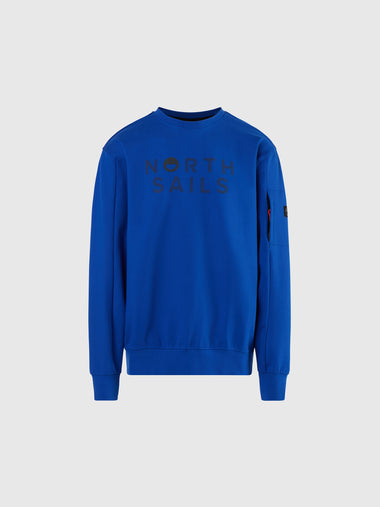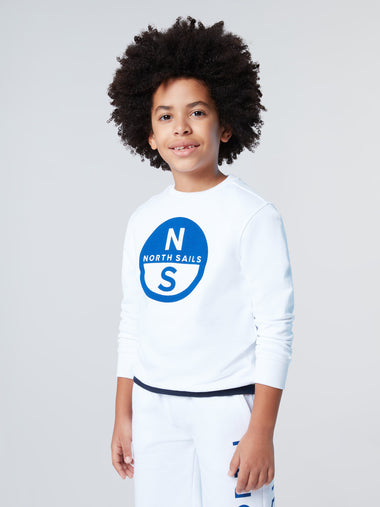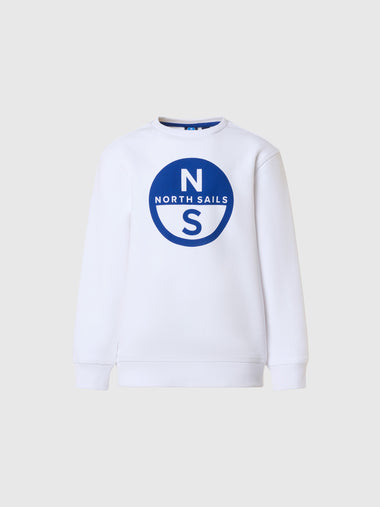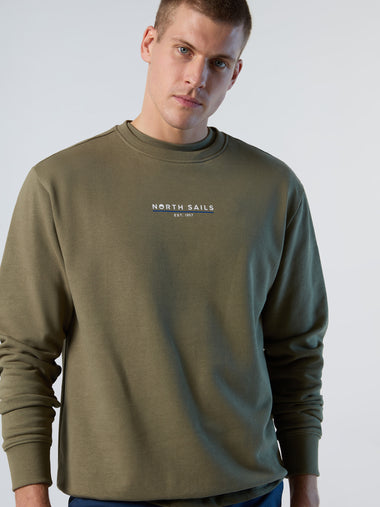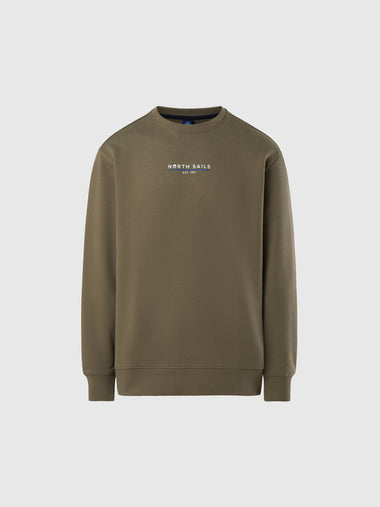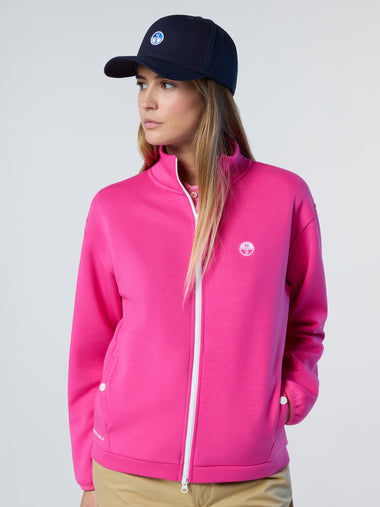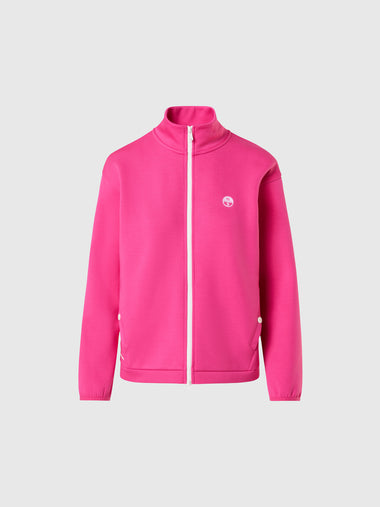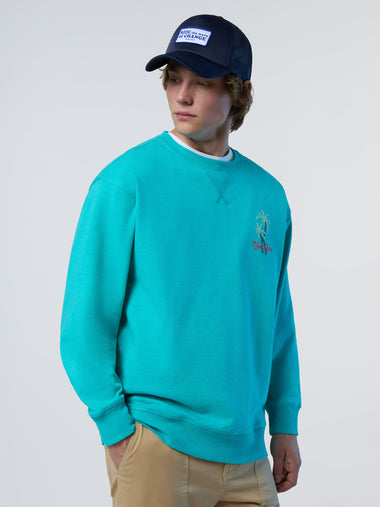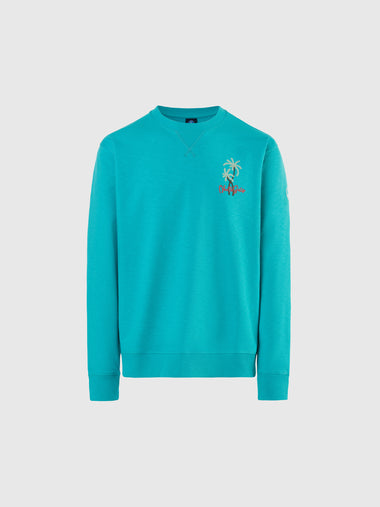NORTH SAILS BLOG
Tout
Events
Guides
News
People
Podcast
Sustainability
Tech & Innovation
Travel & Adventure
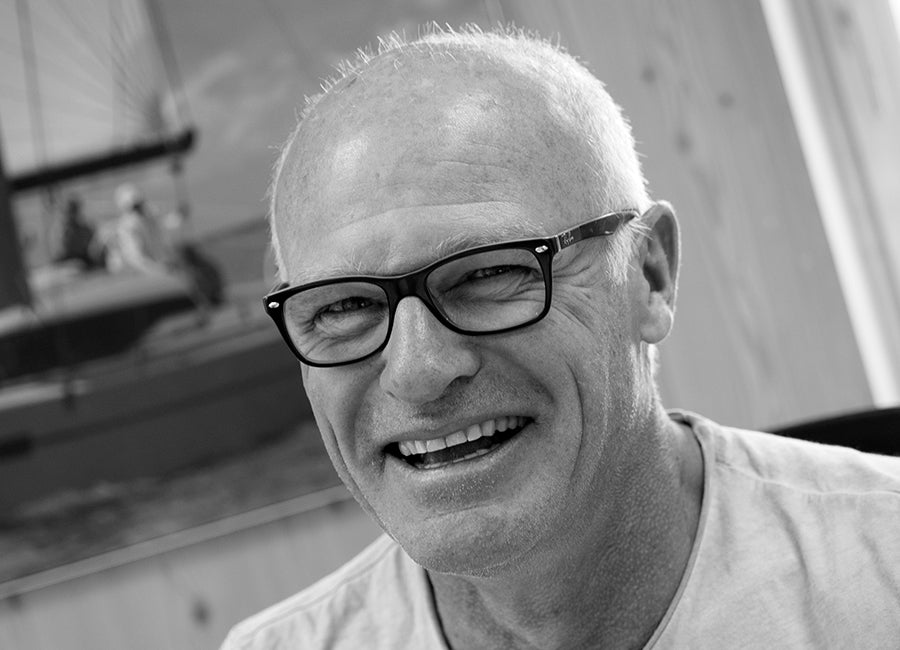
NEW HIRE STRENGTHENS SENIOR MANAGEMENT TEAM IN FRANCE
NEW HIRE FOR NORTH SAILS STRENGTHENS SENIOR MANAGEMENT TEAM IN FRANCE
Philippe Touet Joins North Sails France as General Manager
Philippe Touen
North Sails have announced Philippe Touet as the new General Manager of North Sails France. Previously the Commercial Director of Incidence Sails, Touet is now responsible for sales management and operations of the North Sails business in France. In this senior management position, Touet will work alongside Gautier Sergent who will provide strategic leadership in his expanded role as a Director of France. Philippe will join North Sails from June 17th, 2019.
“North Sails is the industry and technology leader with their constant innovation and development” Touet commented. “North Sails understands their clients’ needs, whether they be Grand Prix racers, Superyacht owners, cruisers or One Design enthusiasts. I am looking forward to working with Gautier and the entire North Sails team to continue the success the brand saw under the direction of Greg Evrard.”
“Philippe’s combined sailing and management experience make him an ideal fit for our business and company culture,” says Sergent. “His charismatic personality, as well as his deep knowledge of the industry, convinced us that he was the best candidate to help take North Sails France forward. He is well respected within the industry and we’re fortunate to have him join North Sails.”
Touet joins a strong management team based at the North Sails manufacturing and sales site in Vannes, France. Opened in 2004, this location is a sales and service resource for local sailors and an innovation hub for sailing’s most exciting offshore projects including the Ultim, IMOCA, and Figaro 3 classes.
READ MORE
READ MORE
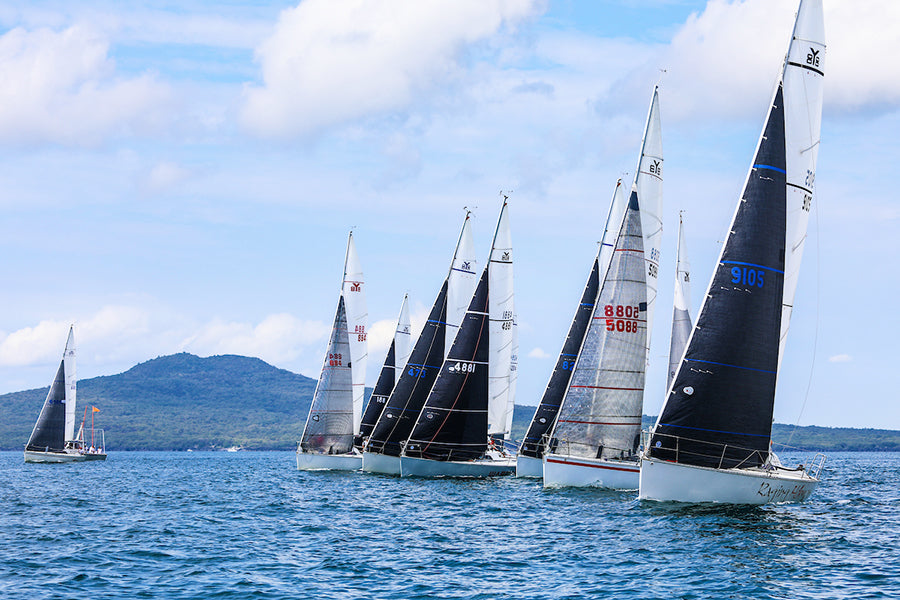
YOUNG 88'S 2019
YOUNG 88'S 2019
One of the largest fleets in recent years took part in the Young 88 national championships in March, and despite super-light conditions racing was close and competitive.
Harken Young 88 Nationals NZ 2019 📸 Live Sail Die
The title was taken out on line by defending champion Raging Hormones, this year skippered by North Sails sales and marketing manager Andrew Wills, with a crack crew including Will Tiller, Alastair Gair, Taylor Balogh, Steve Broadbent, Hugh Gallagher, and Josh Wijohn. Second on line was Mark Bond’s Slipstream, with Harry Thurston and his South Island team on Undercover taking third. Slipstream took out handicap honours, with Undercover second and Raging Hormones third. That made it a clean sweep of the podium for North, whose sails also featured prominently on boats throughout the one-design fleet.
Just five races were sailed over the two days, all of them in 9 knots or less, but that called for intense concentration, careful trimming and delicate weight distribution, with some crew spending the entire regatta down below to minimise windage.
In a five-race series, all results had to count, and the Raging Hormones crew made sure they were consistent. After a fourth in the first race, they won three of the remaining four races, and were second in the other. However, their victory was ensured when their closet rival, Undercover, was disqualified in the last race and had to carry 17 points.
Wills says the great work done by the Young 88 committee in encouraging entries and organising crew for those who needed it saw 16 boats on the start-line.
"There are some new owners and they are getting lots of people out there. The class is working hard to make the boats as equal as possible, and the racing is getting closer and closer".
Winning team onboard Raging Hormones 📸 Live Sail Die
Several other North Sails staff also sailed on other boats in the fleet, and they have put together some top tips and tricks for success in light airs:
Sailing upwind in the light, it can be hard to have much feel on the helm. Soften the rig right up to induce forestay sag and create some rake to the mast to keep some helm on. Prepare for light airs before the regatta, and note in your tuning guide the best settings for sailing upwind in little to no wind. North Sails general manager Richard Bicknell sailed aboard War Machine, which made the most of its ability to sail well in high mode in the light airs. The team spent time adjusting the rig to increase rake and improve helm.
On the downwind legs, think about crew weight distribution. Because of its hull shape, the 88 is designed to be raced with the crew in the cockpit:
"In the first race, we were getting rolled quite badly, and that was our worst result of the regatta," says Wills. "We got our crew to move their weight back a bit in the boat and that really helped. We had been sailing with the knuckle in and the stern out, so to lengthen our waterline we moved the crew back so we had a nice clean wake off the stern and the knuckle was just touching the water."
Downwind in the light, don’t be afraid to steer more aggressively:
"These are displacement boats, so it felt like I had to steer through a lesser angle to start with, between high and low mode," says Wills. "I changed to coming up more aggressively in the light to keep the kite full, and coming down more in any puffs, to build speedgain VMG as long as we didn’t kill our speed. The variance in angle between the two courses became a lot bigger and more aggressive."
When trimming on the kite, trim in the main at the same time, to keep the slot nice and open:
"If you close that up too much by just trimming on the kite, it would back into the main and the kite would collapse," says Wills. "Remember to open that gap up a bit".
New sails can make the critical difference:
"Owner Nick Gillies really noticed the improvement in downwind speed. He had good sails before, but with this new one we were passing people downwind — and downwind is where you win a regatta like this every time", says North Sails expert Matt Steven, sailing aboard Waka Huia with a brand-new kite.
READ MORE
READ MORE
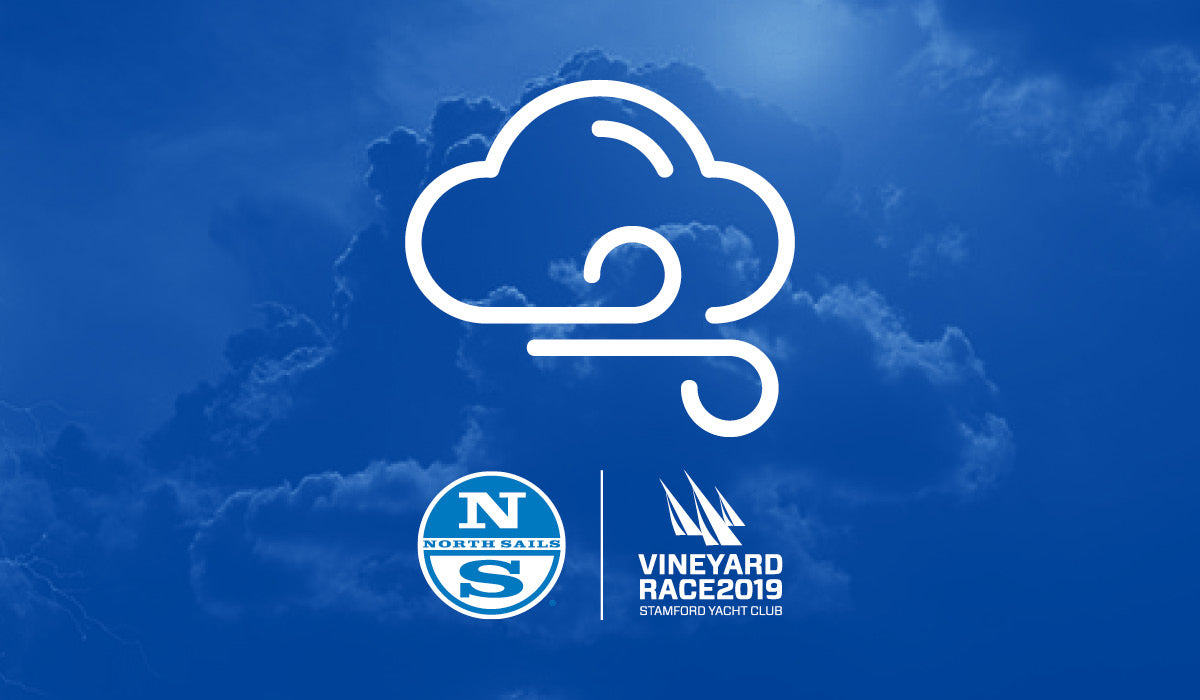
2019 VINEYARD RACE WEATHER FORECAST
2019 VINEYARD RACE
Sign Up For Your Complimentary Weather Forecasts
North Sails is proud to support the 2019 Vineyard Race. We have teamed up with our expert friends at Sailing Weather Service to provide professional weather forecasting for the event. Sign up below and have your forecast delivered right to your inbox.
READ MORE
READ MORE
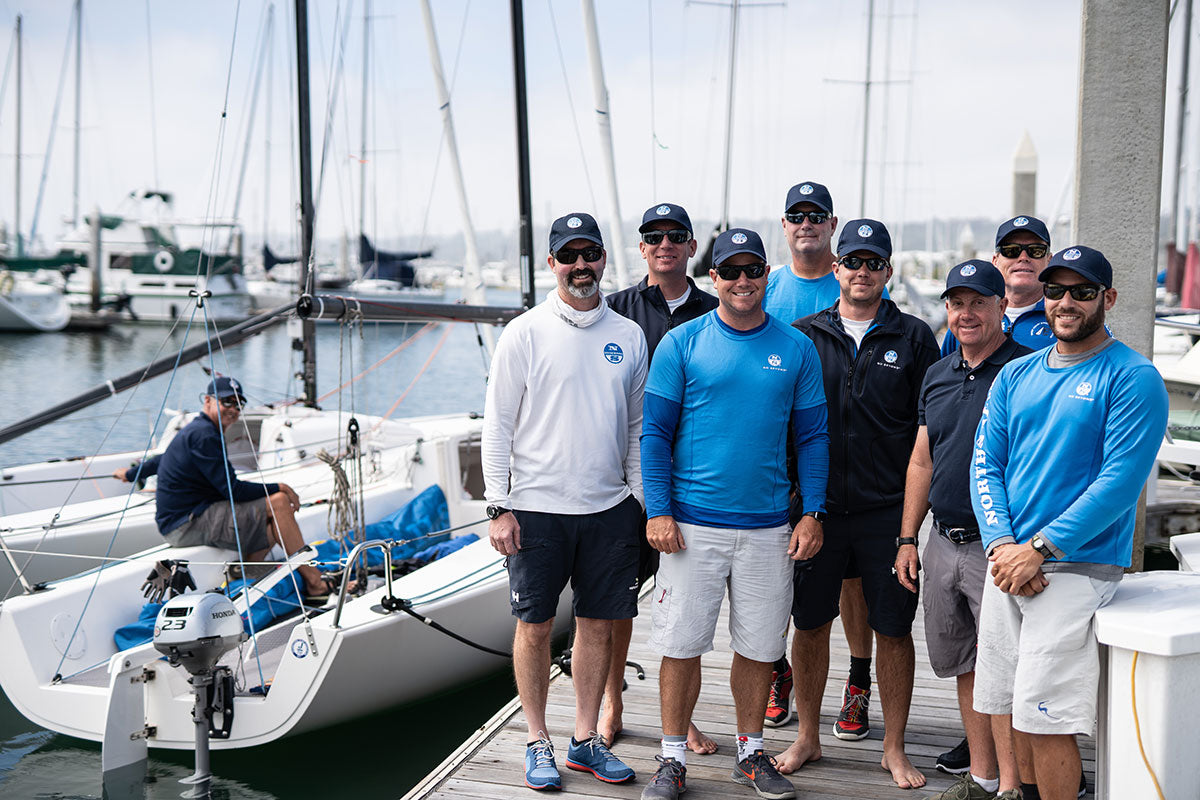
EIGHT ONE DESIGN EXPERTS PUT TECHNOLOGY TO THE TEST
EIGHT ONE DESIGN EXPERTS PUT TECHNOLOGY TO THE TEST
World Champions Team Up For J/70 Telemetry Testing
Recently in San Diego, a group of one-design champions with 11 world titles between them came together for an intensive J/70 sail-testing session. The primary goal was to quantify whether new upwind sail designs would prove faster than the existing J/70 inventory, which has been on the podium at every class world championship so far. Tim Healy, President of North Sails One Design, explains it this way: “We wanted to look at some different concepts and either prove that we’re on the right track or cross some ideas off the list, to further advance the performance of our sails.”
A secondary goal, Tim says, was to better understand the existing designs and how tuning and trim plays into performance. “A sail design can be improved, but unless you understand how to trim and tune it properly, you’re not going to get the benefit. Our current designs are very good, but we also wanted to make sure we’re really getting the most out of the sails.”
With these goals in mind, Tim invited one-design experts from a range of competitive keelboat classes to go sailing and then brainstorm ideas for improvement. Mike Marshall put his own worlds-winning drive to work as the telemetry expert, coach, and debrief leader. “My goal is to not be the most vocal person in the room,” Mike says, “but to be the person who facilitates. Trying to get the best input out of every single person.”
A sail design can be improved, but unless you understand how to trim and tune it properly, you’re not going to get the benefit. Our current designs are very good, but we also wanted to make sure we’re really getting the most out of the sails.
How It Worked
Each morning before leaving the dock, the two J/70s were tuned to the same base numbers, and teams of four were carefully combined to be within ten pounds of each other. Tim Healy and Will Welles steered. The group sailed in both the flat water of South Bay and outside in ocean swells, in breeze that ranged from five to thirteen knots.
On each of the four days Mike ran a series of five-minute telemetry runs, using the proprietary equipment he helped to develop, which has set new standards for sail testing. Running up to twenty-two tests each day built an impressively large data set of accurate VMGs for each boat. Skip Dieball, who trimmed for Tim Healy’s team, had used the telemetry to prepare for his win at the 2015 Etchells Worlds. “It was incredibly valuable in determining the fastest setup and fastest equipment combination.”
Having world champions as rail meat, Tim says, was a lot of fun. “They are so competitive! On every test, everyone was doing everything they could to try to win the test. Then in the end, Mike would tell us who beat who.”
A Potent Mix Of Personalities
After sailing, the two teams got together for a debrief to share thoughts about the results. A discussion with so many champions led to surprising insights each day, Mike explains. “Put nine competitive sailors in a room together, and you come to a lot of really good conclusions. Everyone brings their own experience. Zeke Horowitz brings his Flying Scot and his J/22 experience. Eric Doyle brings his Star experience. Will Welles brings his many years of J/24 sailing and Skip Dieball, his Etchells and many other one-design classes success. Vince Brun has 40 or 50 years in this business, and he’s always got something very valid to say as well as always being an absolute pleasure to have around. Tim Healy brings his encyclopedia of knowledge of all the things that he’s won. It’s highly beneficial to get all the different opinions and thoughts and combine the various viewpoints.” Skip Dieball was also impressed with the debriefs: “World champions everywhere! It was fun to collaborate and discuss what we felt, how we set up the various designs.”
Put eight competitive sailors in a room together, you come to a lot of really good conclusions.
Tim agrees that the wide range of perspectives helped everyone improve. “Eric Doyle, for instance, is a hands-on guy. When it comes to manufacturing, it’s always great to bounce the idea off him: ‘Hey Eric, what do you think?’ Then he says, ‘We already tried that with this class. It didn’t work.’
“Mike is the technical guy,” Tim continues. “And Zeke is more of a seat-of-the-pants guy, so it’s refreshing to hear his point of view. They all shared different experiences with sail development programs, what’s worked and what hasn’t. There were so many different talents at that table that you could always find somebody to say, ‘I can help with that.’”
What They Learned
Sail testing is all about making better sails, and Tim says that, while looking at new shapes and more user-friendly construction techniques, they took the time to drill down to the tiniest of details: the shape of a telltale window, the placement of a tack grommet, how the webbing is attached to the head of the jib. “We could talk all day about batten pocket construction and come up with examples from another class.”
Both Tim and Mike agree that if they had the four days to do over again that they wouldn’t change a thing. Eric Doyle says the telemetry was so helpful that he would never go sail testing without it again, though it falls to Mike to explain why. “We’re constantly trying to improve our sails, but at the end of the day, how do you do that? With telemetry testing, you end up with a solid, concrete answer, an indisputable fact. 85% of the time, those facts are confirmed by what people feel on the boat. When they aren’t, you can look further into why.
“Of course, I have opinions about which sail is better and why,” Mike continues. “But the two-boat testing system keeps it scientific and organized. It really pushed our development path forward, giving us answers as well as new questions to ask.”
Tim agrees that the scientific approach left him confident about their conclusions. “The bottom-line goal is to prove that we’re making a better sail. We had some good concepts that we got more data from. And we now understand the tuning and the trim even better than before.”
A three-time World Champion himself, even Tim was a bit overwhelmed by the amount of expertise they gathered together. “I know these guys. I talk to them every day. But when you stop to think about it, the knowledge base is pretty impressive.”
The bottom-line goal is to prove that we’re making a better sail. We had some good concepts that we got more data from. And we now understand the tuning and the trim even better than before.
READ MORE
READ MORE
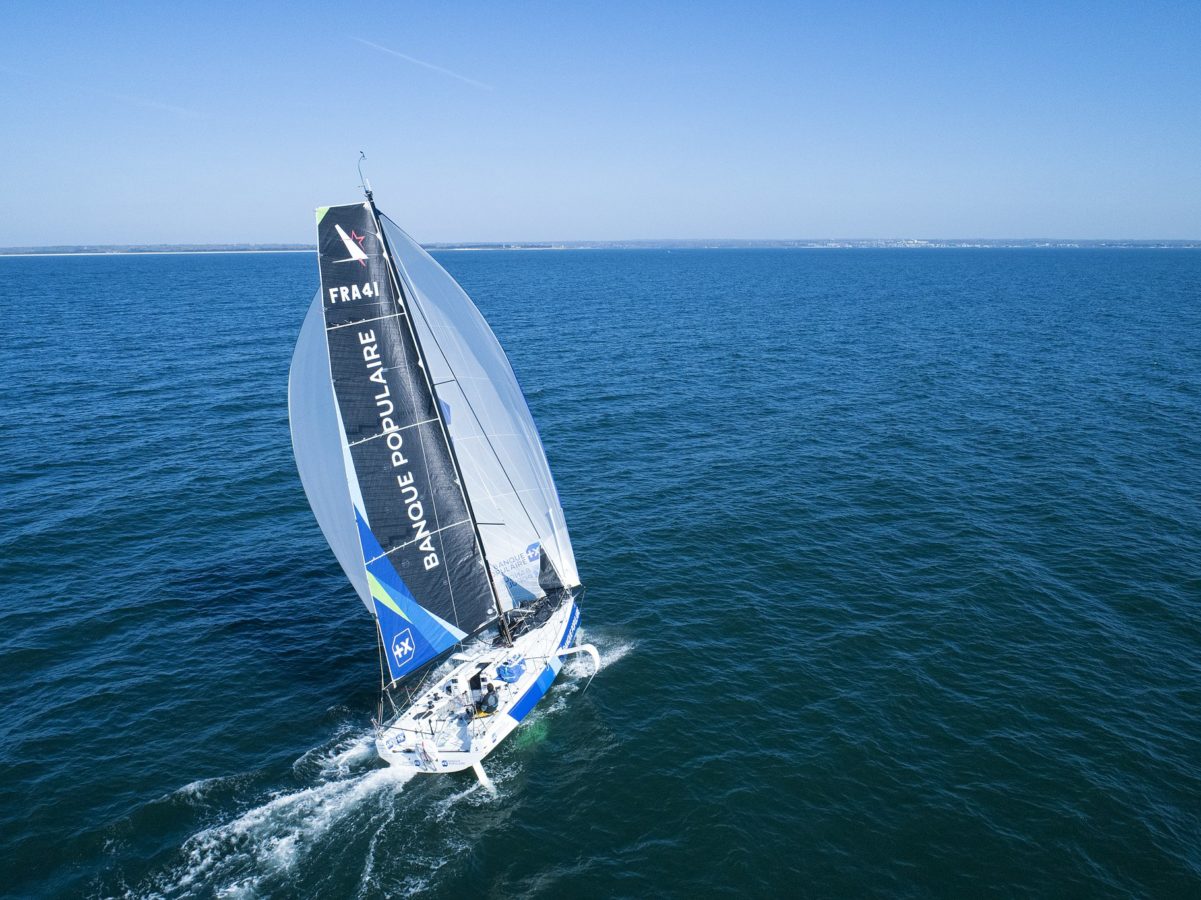
BENETEAU FIGARO 3: NORTH SAILS R&D
FIGARO 3 SAIL DEVELOPMENT: DOING OUR HOMEWORK
North Sails Head of R&D Gautier Sergent Provides Insights On the Figaro 3
Since the very first Beneteau Figaro 3 concept drawings appeared, the North Sails R&D team has been doing its homework, working alongside sailors to understand what makes these high-performance foilers tick. To learn more about the development process, we sat down with Gautier Sergent, the head of North Sails R&D, who oversees the Figaro 3 project led by Vannes-based sail designer Quentin Ponroy and segment leader Gaetan Aunette.
To date, North-powered teams have won every Figaro 3 regatta—and each event had a different winner. North’s pro-active technical approach—all that R&D homework—is really paying off.
“The whole process started really early for the Figaro 3 because of our close relationship with Beneteau and our motivation to help develop the class,” Gautier says. “The minute we had access to the design concept, we tried to imagine the possibilities: what size for the jibs, for the main, for the spinnakers. North Sails has a roster of designers who have a good understanding of how the foils work and how that impacts the sail design.”
“I have been collaborating with North Sails since the launch of the Figaro 2 in 2003. This led me to continue collaboration when I joined Team Banque Populaire with the IMOCA for the Vendee Globe in 2012, and then again in 2016 with a win and speed record. More recently we have worked together with the Ultimes BPVII, IX, and now XI which we just finished designing. Of course, we choose to work with North Sails for the Figaro 3.”
Armel Le Cléac’h, Skipper Banque Populaire
The first step to building a winning inventory was understanding how boat and rig would behave under load. Flow and Membrain allowed the North designers to design virtually, balancing wind pressure, sail shape, and rig forces. The Figaro 3 has a stiff rig, which reduces the ability to induce bend with the runners, which affects sail shape and structure.
Having North Design Services involved from day one was critical, Gautier says, adding that it was a process learned from successful projects with the IMOCAs, Ultims, AC75s, and the newly branded Ocean Race. “Before asking for our clients’ trust,” he points out, “you need to have done your prep work.”
North was the only sailmaker to complete a full set of test sails, which were ready to go in time for the launch of hull number one in 2018 and proved fast right out of the blocks. But shortly after that, the project ran into a serious setback; class rules were published that banned spread filament sails, effectively making a North 3Di inventory illegal. Gautier and his team immediately reached out to the class. “We pushed hard to explain the possible ban was bad for sailors; North sails could be faster, lighter, and last longer.”
And even before the rulemakers agreed to allow 3Di, the design team carried on building prototype sails. “It’s proof that we were not going to sit back and stop,” Gautier says. “We will show you that our sails are better. It was a long shot but it worked out. We’re here, and our sails are winning.”
The North Sails inventory for the Figaro 3 consists of a Square Top Mainsail, J2, J3, Helix Code Zero, Masthead Spinnaker, and Fractional Spinnaker.
“We use a science-based approach to create an optimized inventory from the start,” concludes Gautier. “We ask our clients to put so much trust in our recommendations, but we are confident because we have the data to back them up; we also work closely with these sailors to explain why and how we got there, get their feedback, exchange ideas, and continue the development. To be fair, we lost a few clients to start. As the boats start to sail more, the sailors who maybe thought we were arrogant in our approach are coming back around.”
“Building up to an event or during the design phase I see the North Sails experts every week,” explains Armel. “Quentin or Gaetan is on my boat or in a chase boat analyzing and making their expertise available to me. We all work together to understand the full picture and exchange ideas to keep improving.”
READ MORE
READ MORE

A EUROPEAN SEASON TUNE-UP
A EUROPEAN SEASON TUNE-UP
Six Division Wins And Podium Sweep At Palma Vela
📸 María Muiña SailingShots
North clients had great results during Sail Racing Palma Vela, winning six divisions overall and sweeping the podium in ORC 1. Palma is known as one of the best places to sail, and even better places to race, making this event a productive training session ahead of the ORC World Championships later this summer.
Arobas2 came out hot, winning five races, giving them the overall win in ORC 0. “This has been such a good regatta, commented boat owner Gerard Logel. “Our boat is versatile, and we are too.” In Mallorca Sotheby’s ORC 1 class, tactician Afonso Domingos helped guide owner Pit Finnis on his Swan 42 CS Dralion to the number one spot. “It was not easy racing in a mixed fleet ORC class, as some boats are higher and faster than you. The team sailed well, and the conditions were great. It has been a great regatta,” said Afonso.
Arobas2, Winner of ORC 0 📸 María Muiña SailingShots
North Sails has a wealth of knowledge in the Swan 42 class, with many experts worldwide that can help clients with any sail and tuning needs. North Sails expert Jesper Feldt joined Alfonso as mainsail trimmer on Dralion, while Palma based Marc Patino served as tactician on second place Pez de Abril. Jesper who has been racing Swan 42’s for the last seven years describes how the team’s onboard knowledge helped their team find success. “Our experts know a lot about the boat, how it should be set up and tuned, allowing him to focus on driving and boat speed,” Feldt explained. “The team, our 3Di sails, and conditions in Palma lived up to our expectations; winning our class was the best part.”
Patino, whose team finished just one and a half points behind Dralion also had positive feedback on Pez de Abril’s overall performance. “Our teamwork work was great, and we had a nice week of sailing. There were a variety of conditions over the course of the regatta and our 3Di jibs were a major contributor to our speed and ability to point upwind. Our headsail kept us fast through the pressure variations.”
Dralion, winner of ORC 1 📸 María Muiña SailingShots
In ORC 3, Antonio Guasch’s Vertigo Dos Texia, a Salona 37, scored four bullets out of five races, comfortably staying ahead of their competition. Scott Beattie’s J/97 E Just The Job in ORC 4 was not only consistent, but kept their score count low. With four bullets there was no need to participate in the last race, so they won the race to the dock. Client Maria Campins’ Modified First 30.5 Tres Mares took third, just four points out of second. Otto Pohlmann on Meerblick took first in the Dragon fleet, and J/80 Atila with Miquel Pujadus won their division.
“Our experts know a lot about the boat. The team, our 3Di sails, and conditions in Palma lived up to our expectations; winning our class was the best part.”
The TP52 fleet of ten had their warm-up event of the season, just prior to the Super Series kick-off later this month. Gauging from this trial event, the competition is as tight as ever. Only three points separated fourth and fifth, and second place tied. Santiago Lange, the strategist on Azzura, commented about the racing over the course of the event, and what that meant for his team going forward into the TP52 season; “We are a little bit rusty. It is tough to know where we are when you look at the start of the Super Series because it feels like everyone is going at the same speed. No one is slower, and no one is faster, so it comes down to racing well. We need to be smart and try to sail better every day.” After a year hiatus, Vladimir Liubomirov’s Bronenosec has rejoined the fleet with a new hull and talented crew additions. This first event for the team was a great shakedown, and we look forward to seeing them back in action.
TP52 Azzurra 📸 María Muiña SailingShots
Full results
READ MORE
READ MORE
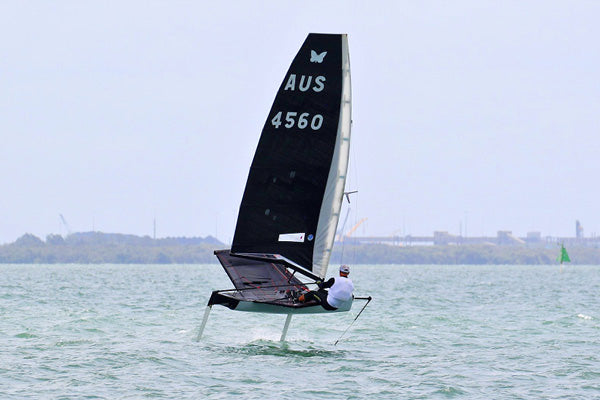
ROB GREENHALGH: GRAND PRIX VERSATILITY
ROB GREENHALGH: MOTH CLASS LEADER
Leading Expert With Grand Prix Versatility
📸 Nic Douglass / SailorGirlHQ
From Moths to Maxis to Multihulls, this pro sailor can make any sailboat go a little faster.
While Rob Greenhalgh didn’t officially join North Sails until 2018, he says the company was the first sailmaker he ever heard of. “I’ve always seen North as the biggest brand in the sport,” he says, adding, “and without a doubt, the best product in the sport. I wanted to associate myself with the best brand,” so he’s now based out of the Sydney, AUS loft.
A UK native, Rob learned to sail at age seven from his parents, who were “always into it.” The family lived in Sri Lanka for a few years, and after the Greenhalghs moved back to the UK, Rob stepped onto a 49er for the first time—just as the class joined the Olympic roster. “It was kind of a lucky year, a sort of revolution with asymmetric boats,” he explains. “49ers, then 18-foot skiffs, International 14s.” A lot of his success, he claims, stemmed from “being there in the right place at the right time.”
“Finding time to fit it all in is hard, but I’ve always been a dinghy sailor at heart. I love going back to the grassroots of some simple tactical racing, focusing on boathandling and tacking on small wind shifts and starting well.”
His big break into Grand Prix sailing came when he was invited to join the ABN AMRO team for the 2004-2005 Volvo Ocean Race. “I think we’d just won the 18-foot Skiff Worlds or something like that,” he remembers. “And I was doing a lot of other sailing. That set the scene for the next five Volvo races, and whatever else has happened in between.”
Rob’s impressively varied CV includes a string of podium finishes in various skiffs, as well as one victory and two second place finishes in the Volvo Ocean Race. Halfway through the 2011-12 VOR, he took up Moth sailing to avoid “a mental breakdown,” and he’s since racked up national and European titles in that class while maintaining a hectic racing schedule on the offshore and multihull circuits. “Obviously finding time to fit it all in is hard,” he says. “But I’ve always been a dinghy sailor at heart. I love going back to the grassroots of some simple tactical racing, focusing on boathandling and tacking on small wind shifts and starting well.”
The Moth keeps him current, Rob claims. “There’s so much going on; you’ve got the foiling, which is obviously the big fad at the moment. And the rig technology is pretty important. It’s a very good test platform for ideas and learning about the sport.” It also keeps him close to his roots. “I’m very conscious about not losing touch with being a dinghy sailor, and actually enjoying the sport, rather than just being the mercenary professional.”
A typical week finds Rob out on Sydney Harbour almost every day, in a wide variety of boats. “This last weekend it was a three day regatta on a TP52. Then Monday I did a Moth training session with the squad here. Tuesday we do a little evening racing on the Cup boats, which are Elliot 7s. Wednesday I went sailing with a grand prix client. Today I’ll go Moth sailing again, and tomorrow there’ll be sailing of some description. Then Saturday is another event in the morning, followed by Moth sailing in the afternoon.” May, he says, is “the only quiet-ish month,” because he spends much of Sydney’s off-season competing in the northern hemisphere. This year he’ll take part in the Transatlantic Race and Fastnet—another event where he’s posted a few records in both monohulls and multihulls.
Rob does make time for his favorite hobby. “If I’ve got the day off,” he says, “I’ll definitely go fishing.” But most days, he’s trying to fit in a little Moth training between his many other obligations. “It’s all sorts of sailing, with either North Sails clients or as a professional—here, there, and everywhere.”
📸 Martina Orsini
READ MORE
READ MORE
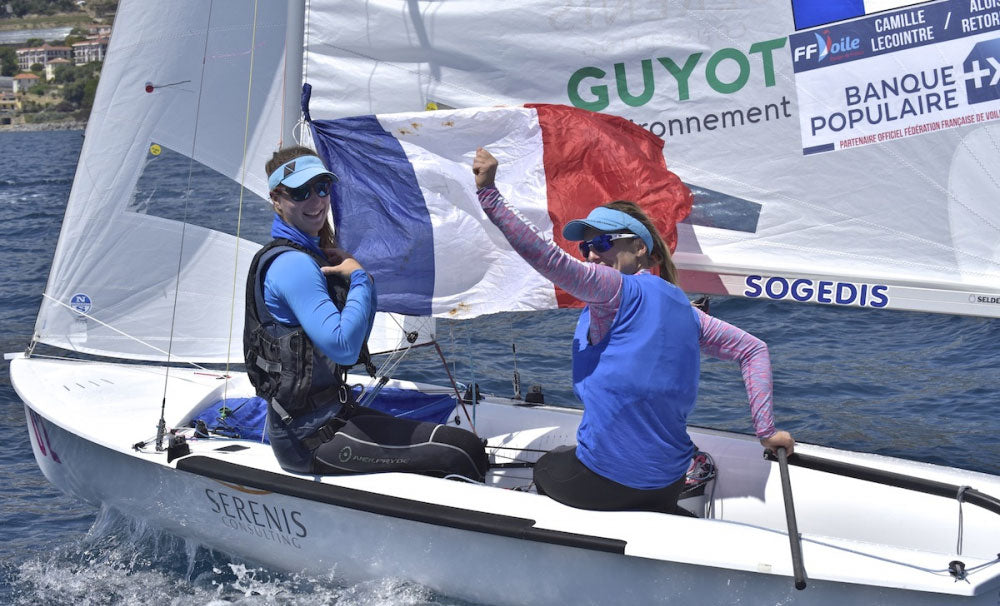
470 EUROPEAN SUCCESS IN ITALY
470 EUROPEAN SUCCESS IN ITALY
Sanremo Proved An Exciting Venue For The European Championships
Camille Lecointre & Aloise Retornaz © Gerolamo Acquarone
An exciting medal race concluded the 470 Europeans in Sanremo, Italy. With 80% of the fleet powered by North Sails, the regatta was packed full of exciting racing and continually changing results.
Tensions were high on the final day as the wind took it’s time to arrive on the race course for the medal race. By early afternoon, the wind set and enabled the Race Committee to launch the medal races on windward/leeward course. With the championship taking an open format, non-European crews raced but could not run for the European title.
The women’s medal race was first with Brit’s Hannah Mills and Eilidh McIntyre top of the leaderboard. This soon changed as France’s Camille Lecointre and Aloise Retornaz took the lead off the blocks, covering their closest rivals Afrodite Zegers/Lobke Berkhout from the Netherlands and Poland’s Agnieszka Skrzypulec/Jolanta Ogar. The British team were caught up in congested air in the middle of the fleet leaving France open to the title. France took home gold, closely followed by the British and Netherlands consecutively.
As the men’s medal race started, the wind had picked up slightly and the tension on the startline reflected the exceptionally close leaderboard; any of the boats in the top 10 could finish on the podium. Australians Mathew Belcher and Will Ryan went into the race with a five-point lead on the reigning champions Anton Dahlberg and Fredrik Bergstrom from Sweden. Spain’s Jordi Xammar/Nicolas Rodriguez and Greeks Panagiotis Mantis/Pavlos Kagialis were both at the top of the leaderboard and serious medal contenders.
The Swedes pushed hard from the pin end of the line, and the Austrians David Bargher/Lukas Maehr got a penalty. At the first windward mark, a collision between the Austrians and the Greeks resulted in a penalty for Mantis/Kagialis too, forcing the bronze medalists in Rio 2016 out of contention for the top spots, with New Zealanders Paul Snow-Hansen/Daniel Willcox showing excellent speed and guarding their second place to the finish line. The Australians managed to keep their lead and finished top of the Open results, with the Sweedish team winning the European title, ahead of the Spanish sailors. The French pair made a great comeback securing third place.
The winning women’s boat used our N12-L9B- Mainsail, S5-B4 Jib and V-2 Spinnaker. The winning men’s boat used our N14-L18 Mainsail, S5-B4 Jib and a custom Spinnaker.
New to the One Design team, North’s 470 Class Expert, Riccardo de Felice, was coaching at the event.
”The Europeans was a well-organised event with some excellent high-level sailing. We had all kinds of weather conditions in Sanremo; light, medium and heavy winds, as well as big waves at times and it was fantastic to see our sails respond to these challenges, continuing to perform well. There was even a race with more than 35 knots!”
Powering all but two of the top 10 boats in the men’s fleet and all top 10 boats in the woman’s fleet, North Sails is proud to be so involved in the 470 class and looks forward to the World Championships in Japan later this year.
Browse the 470 Shop Inventory.
Anton Dahlberg & Fredrik Bergstrom © Gerolamo Acquarone
READ MORE
READ MORE
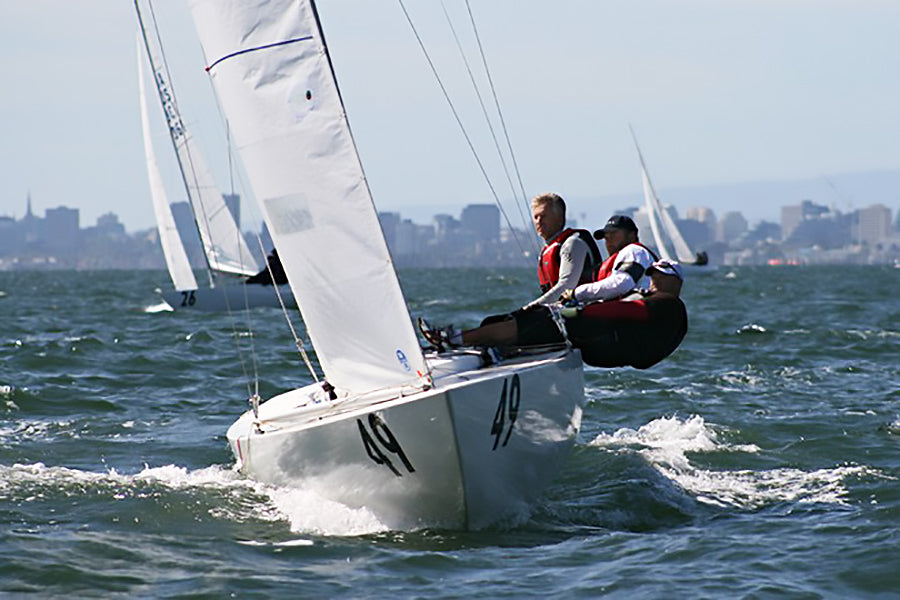
ONE DESIGN ADVICE FROM NOEL DRENNAN
ONE DESIGN ADVICE FROM NOEL DRENNAN
Experienced And Passionate sailor, Noel Drennan, Rejoins North Sails As One Design Manager
With four decades in sailmaking, Noel ‘Nitro’ Drennan knows a thing or two about sails. A lifelong passion for sailing has made this Irish-born Australian one of the world’s best one design experts, and now his desire to be part of the best one design team has brought him back to North Sails as One Design Manager at North Sails Sydney.
Nitro first started with North Sails Melbourne back in 1983, in a loft owned by sailing legend John Bertrand. He’s a familiar face on top teams across a wide variety of boats: Etchells, offshore trimarans, TP52s, A-Class cats, Skiffs, Finns, and even the America’s Cup.
"Life in One Design never stands still," Nitro commented. "As soon as you think you’ve got the best product, somebody else will come along with something faster and you are basically left in the dust. So you have to be on top of it, never ever relaxing, which is something I really thrive on."
Noel Drennan, One Design Manager North Sails Australia
Nitro is responsible for one design sales in Australia, working with class leaders on sail development while simultaneously working with customers to help them get the most out of their sails. He’s also the Etchells class leader, and he’s excited about the possibilities of working within a strong international network alongside experts with decades of experience.
"North Sails is a truly global company," Nitro says, "giving us access to so many other one design classes around the world. Quite often development in one class benefits another. When I look at the many classes we have in Australia, it is really nice to compare sails and designs used in other classes in Europe. Working for North Sails enables me to do this in a way no other sailmaker can."
Servicing such an extensive list of classes requires experience, which is why Nitro was welcomed back; there is no better person to be pushing the next phase of innovation and development in sails.
To succeed in one design, Nitro says:
"You always have to be going flat out. Things are always changing... So you have to keep yourself at the frontline at all times. I like the challenge of sailing a little bit faster than the next guy."
Welcome back, Nitro.
READ MORE
READ MORE
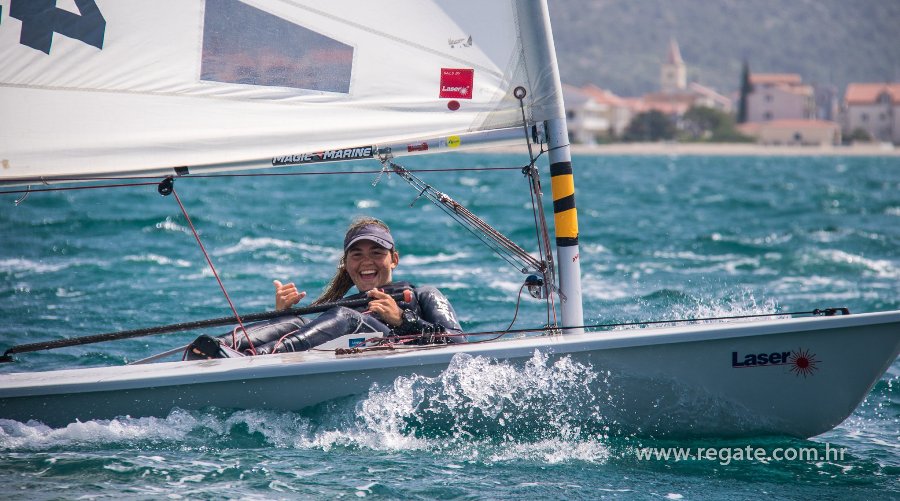
FORMIRANE SU KADETSKE I JUNIORSKE REPREZENTACIJE
Formirane su kadetske i juniorske reprezentacije
Foto: Hrvoje Duvančić - regate.com.hr
Kadeti u klasi Optimist i juniori u tri kategorije klase Laser su završili s kvalifikacijskim i izbornim ciklusima započetim u jesen prošle godine. Cilj svih održanih regata je bilo skupljanje bodova da bi se plasirali dovoljno visoko da mogu postati članovi nacionalnih timova koji će nas predstavljati na velikim kontinentalnim i svjetskim prvenstvima koja će se jedriti u idućih nekoliko mjeseci.
Ispred laseraša je čak 6 velikih natjecanja, od kojih će se jedno jedriti u Splitu, ali krenimo redom.
Prvo je na redu Europsko prvenstvo za Lasere s najmanjim jedrima, kategorijom Laser 4.7. Njima će se ovog mjeseca regata organizirati u Hyeresu u Francuskoj. Na ovoj regati će nastupiti naš najbrojniji tim. Sedam najboljih momaka i čak 9 djevojaka:
1. Roko Stipanović, YC Croatia Opatija
2. Luka Vuković, JK Labud Split
3. Antun Tomašević, JK Labud Split
4. Roni Bobovnik, YC Zagreb
5. Luka Fatović, YC Zagreb
6. Luka Hagenauer, YC Zagreb
7. Simon Starić, JK Horizont Poreč
1. Ursula Balas, JD Val Crikvenica
2. Nika Manestar, JD Val Crikvenica
3. Eleonore Borgin, JK Tijat Vodice
4. Lea Rakovac, JK Vega Pula
5. Petra Mastelić, JK Labud
6. Paola Celić, JK Vega Pula
7. Carla De Carina, JD Val Crikvenica
8. Bianka Ornik, JD VAL Crikvenica
9. Dora Gomerčić JK Uljanik, Pula
U lipnju Grci u Ateni organiziraju Europsko prvenstvo za mlade za Laser Radial. Ovaj put nam je flota dosta manja i ukupno će pod hrvatskom zastavom jedriti 6 djevojaka i momaka:
1. Roko Copić, JK VAL Šibenik
2. Bruno Gašpić, JK Split
3. Frano Šestan, JD VAL Crikvenica
1. Mare Milić, JK Horizont Poreč
2. Ivona Ercegovac, JK Split
3. Sara Mujesić, JK Tkon
Nakon Atene, u srpnju u Gdyni u Poljskoj, na rasporedu je Svjetsko prvenstvo mladih. Pravo nastupa je striktno određeno od strane World Sailinga i iz Hrvatske ide po jedan muški i jedan ženski predstavnik:
Roko Copić, JK Val Šibenik
Mare Milić, JK Horizont Poreč
Zatim u kolovozu troje juniora leti preko Atlantika. Cilj je Kingstown u Kanadi. Tamo će jedriti na Svjetskom prvenstvu klase Laser 4.7. S obzirom na troškove prethodnih prvenstava i veliku udaljenost, na put odlazi samo troje hrvatskih predstavnika:
1. Roko Stipanović, YC Croatia Opatija
1. Ursula Balas, JD Val Crikvenica
2. Nika Manestar, JD Val Crikvenica
Za to vrijeme ponovno u Poljskoj, ali ovaj put u gradu Dwiznov organizirat će se Europsko prvenstvo klase Laser Standard i Laser Radial za žene, do 21 godine:
1. Dominik Perković, JK Labud Split
2. Marko Smolić, JK Val Šibenik
3. Juraj Radačić, JK Val Šibenik
4. Bruno Gašpić, JK Split
5. Roko Copić JK Val Šibenik
1. Karmen Perković, JK Labud Split
2. Ivona Ercegovac, JK Split Split
3. Lea Kliškinić, JK Labud
Za obje ove skupine vrhunac sezone je u Splitu na Svjetskom prvenstvu klase Laser Standard i Laser Radial za žene, do 21 godine. Još uvijek se ne zna tko će jedriti u Splitu jer prijave nisu otvorene, a jedino što se zna je da ćemo regatu pratiti u listopadu.
Foto: Hrvoje Duvančić - regate.com.hr
Što se tiče naših najmlađih jedriličara, kadeta u Optimistima, njihova rang ljestvica zaključena je prošli vikend. Čak 80 najboljih dječaka i djevojčica koji su se kvalificirali na četiri izborne regate borilo se za ulazak u peteročlanu ekipu koja putuje na Antiguau na Svjetsko prvenstvo i sedmeročlani tim koji putuje na Europsko prvenstvo u Francusku.
Na sunčane Karibe na Svjetsko prvenstvo odletjeti će:
Marko Gomerčić - JK Uljanik plovidba, Pula
Tristan Tol - JK Uljanik plovidba, Pula
Tin Fike - JD Val, Crikvenica
Buba Pulek - JK Uljanik plovidba, Pula
Josip Tafra - JK Omiš, Omiš
dok će na atlansku obalu Francuske na Europsko prvenstvo otputovati:
Edo Fike - JD Val, Crikvenica
Petra Marendić - JK Mornar, Split
Grigor Pettener - JK Jugo, Mali Lošinj
Maroje Škoro - JK Split, Split
Ema Samaržija - JK Sv.Nikola, Zagreb
Tedi Leonardelli - JK Vega, Pula
Noela Petešić - JK Uskok, Zadar
U statusu rezerve su Roko Čepić-Zokić iz JK Omiš i Mija Moičinić iz JK Uljanik plovidbe.
Foto: Hrvoje Duvančić - regate.com.hr
Svim našim jedriličarkama i jedriličarima želimo puno uspjeha i s velikim zanimanjem ćemo pratiti njihove predstojeće nastupe!
READ MORE
READ MORE

STORM TRYATHALON
BLOCK ISLAND RACE WEEK 2019
Lay Day Done Right
Who said the lay day should be non-eventful? Not us. The Storm Trysail Club has decided to change things up this year, and proud partners Margaritaville, North Sails and New England Ropes jumped on board to help make this a lay day to remember. Keeping your physical and mental health in mind, our Storm TRYathalon is planned to engage your muscles and your brain.
Register below for one or all three of the events, or better yet, join as a team and take on the day for the ultimate team prize . And because we cherish Block Island, the suggested entry fee for all these events is the purchase of a BIRW raffle ticket. All proceeds of the raffle tickets go to support island services and charities.
Sailing shoes off and running shoes on, kick off the lay day with a morning 5K hosted by North Sails. Run solo, or with your TRYathalon team and get that morning run out of the way. Starting at 8:30am at the North Sails Service loft, located in the Block Island Maritime Institute, the route loops around and brings you to the finish line at the Narragansett Inn.
For those with a competitive streak, there will be North Sails Gear for the winners, ready to collect at the finish line - alongside some refreshments and snacks on North. The first 100 entrants will receive a North Sails hat, so don't wait, register now.
You can tick off your morning exercise, now it's time for Trivia. After you've showered and saw a bit of the island, grab your team and head over to the Margaritavaill Tent at the Narragansett Inn at 1pm for the first ever Block Island Race Week Trivia, presented by Margaritaville. Questions will cover all things BIRW, Block Island, and your partners, so bring your A-Game.
Finally, pull your determined team together to fight it out in the New England Ropes Tug-O-War. Wander down to the beach by the regatta tent at the Narragansett Inn at 3:30pm and test the strength of your crew against the rest. Make your way to the finals and win the day.
READ MORE
READ MORE
STORM TRYATHALON REGISTER
REGISTER FOR THE STORM TRYATHALON
Block Island Race Week Lay Day 2019
READ MORE
READ MORE
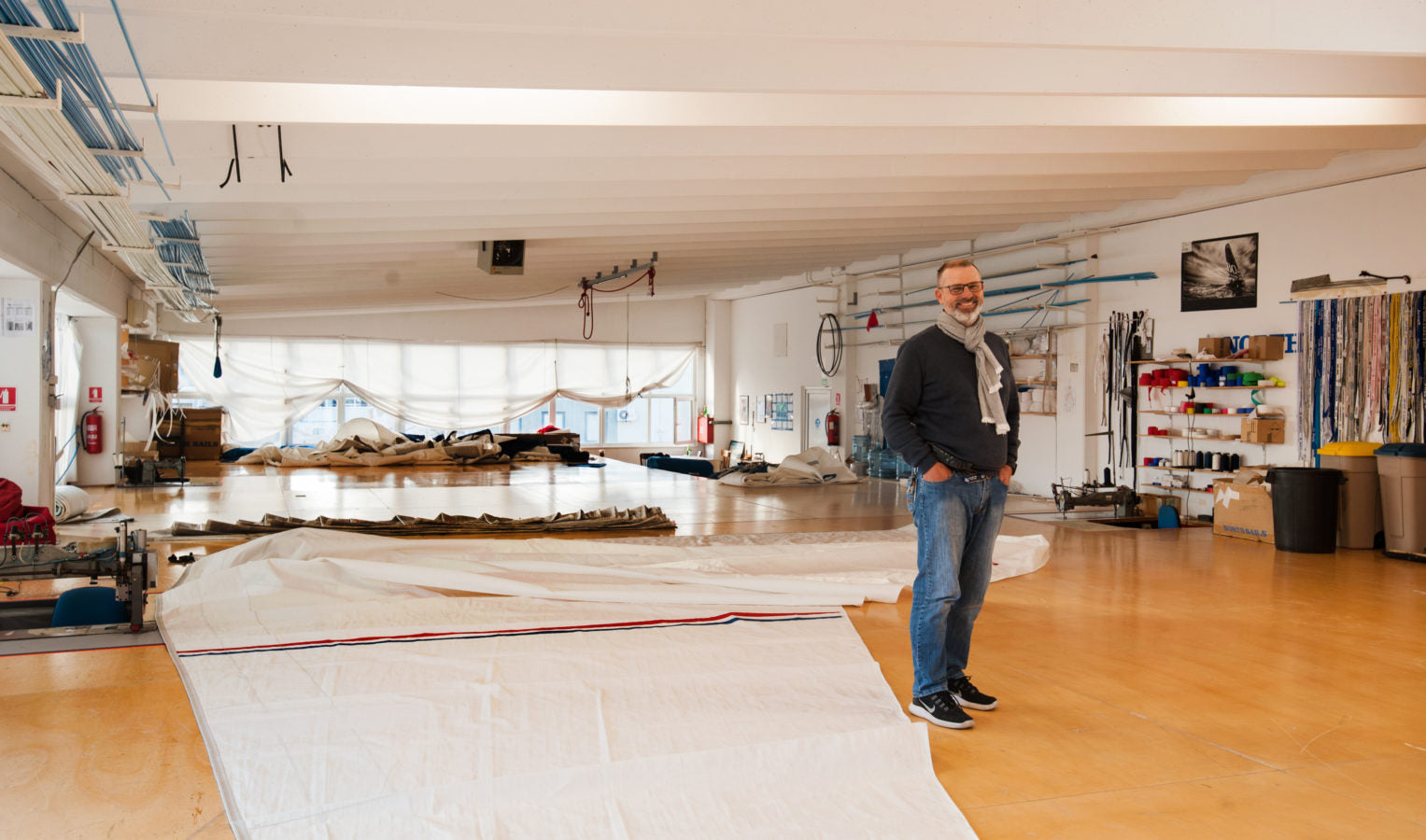
CARRYING ON A FAMILY SAILING TRADITION
CARRYING ON A FAMILY SAILING TRADITION
Stjepan And Marko Marinovic Facilitate Regional Sales And Service In Croatia
With the ORC Worlds coming to Croatia this month, we take a look at North Sails Team who founded and have grown the business there for the past 15 years. Stjepan and Marko Marinovic grew up sailing with their family on a variety of boats. Decades later, they’re still working together; the two founded North Sails in Croatia in 2004.
Stjepan is five years older, which is why there are no stories about the two of them getting into trouble together. “There was too big a difference in the years,” Marko explains, adding that Stjepan was a good brother. “I was the bad brother,” he admits—perhaps joking, or perhaps not.
“Coming from an island as a family,” Stjepan says, “there is a strong maritime tradition in both shipping and sailing.” Their father was a black sheep, “because he first ran a motorship, then a sailboat.” The kids learned to sail on an eight meter wooden cruiser; Stjepan also raced Optimists, while Marko competed in the Laser.
“The natural thing was for me and my brother to go to the nautical academy,” Stjepan continues. After graduation from the University of Split, he went to sea as a master mariner and began to live a double life. “I had my quite serious professional life; all rules have to be obeyed, supervising the loading of ocean-going ships. In the summer, I was completely crazy! Cruising and racing around the Adriatic, in all kinds of funny boats.” First it was a half tonner, then an IMS 35, and then the craziest boat of all; a 40 footer built to sail on Lake Garda, which “against all advice,” they sailed in the open waters of the Adriatic for several years.
When their father refused to finance any more sail purchases, the brothers began working for North Sails Cape Town on commission. “We started selling sails to other people,” Stjepan says. “When we got enough credit, we purchased a sail for our boat. So that is the reason we started working with North.” Ten years later, he continues, “we were doing so well that North Sails Italy started complaining that we should work with them.”
The timing was right for Stjepan to retire from his “serious professional life” and move ashore, so in 2003 he talked Marko—who had just earned his own maritime transport engineering degree from the University of Split—into opening a sail loft instead of going to sea. “We made a joint company between North Sails Italy and me and Marko,” Stjepan explains. Sixteen years later, the pair oversees two lofts, in Dugopolje and Sukošan, and twelve employees.
Marko likes working with North Sails. After taking several years off from racing, he’s recently started competing again in the Snipe and the Star. He also sails with clients, which he thinks is good for everyone. “It's very useful to be inside the company,” he says. “You get really good information and very quick. Nothing more do you need, if you're a sailor.”
Even in the early days, their company never produced any sails; they’ve always specialized in selling and after sales. According to Stjepan, their loft was one of the first in the world to do so. “We are only sellers, like a car dealer,” he explains. There’s enough volume to justify that along the Adriatic coastline, an area renowned for its excellent cruising and racing.
“It is quite rocky, with a lot of islands,” Stjepan continues. “Maybe 1,000? And we have six months of nice weather with very predictable thermals. There’s a huge amount of boats sailing around, and I would say 50% are used in charter. The nautical industry is quite strong in Croatia, and we know all the local guys. But most of our clients are people coming from abroad who have no idea what I'm doing. Maybe now they'll understand that I'm not just another charter skipper!”
Stjepan also races classic yachts. In 2016 he was part of the winning crew on Mariette for the Superyacht Cup in Palma, and he helped Kelpie of Falmouth win the classics cruiser class at Les Voiles de St Tropez.
Both brothers agree that 3Di changed their business—and Stjepan admits he wasn’t certain about it at first. “I delivered my first 3Di Sails to a guy on a Beneteau 40.7 for the ORC World Championship in Italy in 2013,” he says. “It was supposed to be light thermals, but we had thunderstorms. Upwind for thirty-six hours, in 45 knots…”
Two days later, they headed out for another race; there had been no time to inspect the mainsail. Stjepan compares hoisting it to “opening a box of chocolates; I didn’t know if I’d be hoisting garbage. Instead it’s looking like new! That was a huge relief.”
“I’m a really big fan of 3Di,” Stjepan continues. “The good thing is that it’s really fast, long-time fast.”
Marko agrees. “The technology with 3Di is an advantage, so it's easy to convince racing clients to purchase 3Di sails. We have a very easy job to please our clients, which I think is most important.”
"I’m a really big fan of 3Di," Stjepan continues. "The good thing is that it’s really fast, long-time fast.” Marko agrees, "The technology with 3Di is an advantage."
Business-wise, Stjepan admits there is a downside to 3Di. “People are not buying sails so often. From 2006 to 2013, I sold four or five mainsails to this one guy. Since 2013, the boat is still having the same main.” But there is much less fuss, he adds, so “people are really happy. It's a good product, a really good product.”
Both brothers have families of their own, and Marko enjoys winter skiing in the Dolomites with his wife and daughter. In summer, the trio takes a two week cruise onboard a half tonner that used to belong to his father. “He sold it, I buy it back sixteen years later, and I make modifications with the fridge and this kind of stuff. You have much more possibilities to enjoy the Adriatic with a small boat.” When Marko has more time, he’d like to race this boat again.
Stjepan has a son and daughter and no ambitions in any other sport besides sailing. “The pastime in my home town is drinking coffee,” he explains, with that dry humor that makes it hard to know if he’s serious or not. “So when I'm not sailing or messing around with boats, I go and have a quiet coffee seaside.” Asked if it was very competitive, he explains the local approach; “You should drink your coffee for as long as possible. It's called espresso coffee because we like it made the Italian way, but we think it should slow time. An oxymoron…”
When asked for his thoughts about local coffee habits, for once Marko disagrees with his older brother. “We're spending too much time with the coffee machine. I think I will switch to tea… it's much better.”
READ MORE
READ MORE
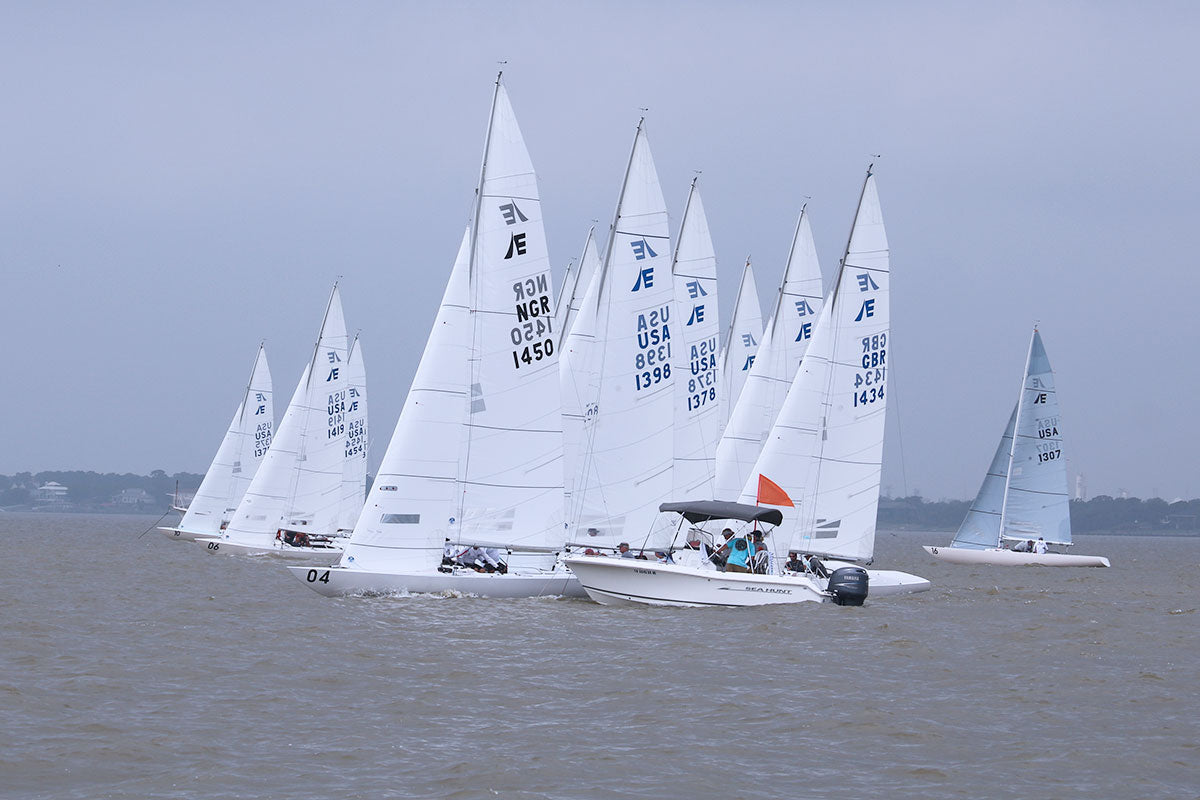
ETCHELLS NORTH AMERICANS - ROAD TO THE WORLDS
BOOGIE BACK TO TEXAS: ETCHELLS NORTH AMERICANS
North Clients Top The Leaderboard On Road To World Championship
A small but uber competitive Etchells fleet gathered last week in Houston, Texas for the 2019 Etchells North Americans. Almost all the participants used this event as a lead up to the Worlds which will be sailed just down the Texas coast in Corpus Christi later in June.
The event, organized at Houston Yacht Club by class stalwart Marvin Beckman and his wife Melodye, saw moonsonal type conditions as a very active front stalled just north of Houston. The night before the first races saw rainfall accumulations as high as 8 inches. Mark Foster, PRO and his team did a great job to get 7 races in over 3 days under pretty difficult and variable conditions. Mark will be the PRO for the upcoming Worlds in Corpus.
North Sails’ Etchells class leader Chris Snow was on site leading up to the event and offered this insight to the event. “While the numbers were low, this was a very high quality fleet, including past World Champions, Olympic medalists and the like on many of the boats. Most of the teams in the top ten are just coming off a winter of racing and training at the Jaguar Series in Florida. A top finish in this fleet is quite an accomplishment!”.
“While the numbers were low, this was a very high quality fleet, including past World Champions, Olympic medalists and the like on many of the boats.”
Once the dust, and rain cleared the top boat, winning on tiebreaker was Scott Kaufman’s Rebel. Scott and his team of Lucas Calabrese, Austen Anderson and Diego Stefani scored a bullet in the last race to tie Marvin Beckman on The Martian and win the event. Marvin and his crew of Bill Hardesty, Pilar Calabese and Keith Swinton sailed a great consistent series to just be pipped in the end. They will be a formidable team in Corpus.
After the event, Kaufman was very complimentary of his team who have been together for just a year. He also explained his philosophy on racing and boat prep (Kaufman is a renowned naval architect).
“Sailboat racing is getting hundreds of little details right. Before the event we spent two days just working on our boat refining and making some of the systems work a little better and more smoothly. We probably worked on twenty different items. One small example is we have taken our pump out of the bow of the boat. The exit for the water now runs aft near where I sit. I think at times this can take up to 20 pounds of weight out of the forward portion of the boat.”
Kaufman was also complimentary of the North Sails tuning guide. “We stick very closely to the numbers in the North guide, it works well for us. We make small adjustments which are sometimes needed for a particular boat (rake for example) but generally we are quite close to the guide.”
“We stick very closely to the numbers in the North guide, it works well for us. We make small adjustments which are sometimes needed for a particular boat (rake for example) but generally we are quite close to the guide.” – Scott Kaufman
Top 10 Powered by North:
1st – Scott Kaufman
2nd – Marvin Beckmann
4th – Bruce Burton
5th – Jim Cunningham
6th – Alex Lacy
7th – Chris Hampton
8th – Donald Mense
9th – Andrew Wills
10th – Jose Fuentes
Kaufman’s team used all North Sails to win the regatta including the PC+ main, LM-2L jib, LM-2HR Jib, Full Radial and Runner Spinnakers. If you are heading to the Worlds or just to your local Etchells event North Sails has sails in stock for immediate delivery.
Browse the Etchells Sails Inventory.
2019 Etchells North Americans winners. Scot Kaufman used the PC+ main, LM2L and LM2HR jibs, and Full Radial and VMG AirX spinnakers. 📸 Beth Gibson
2nd place Marving Beckmann and his team. 📸 Beth Gibson
North Sails is proud to support the Etchells class. 📸 Beth Gibson
READ MORE
READ MORE
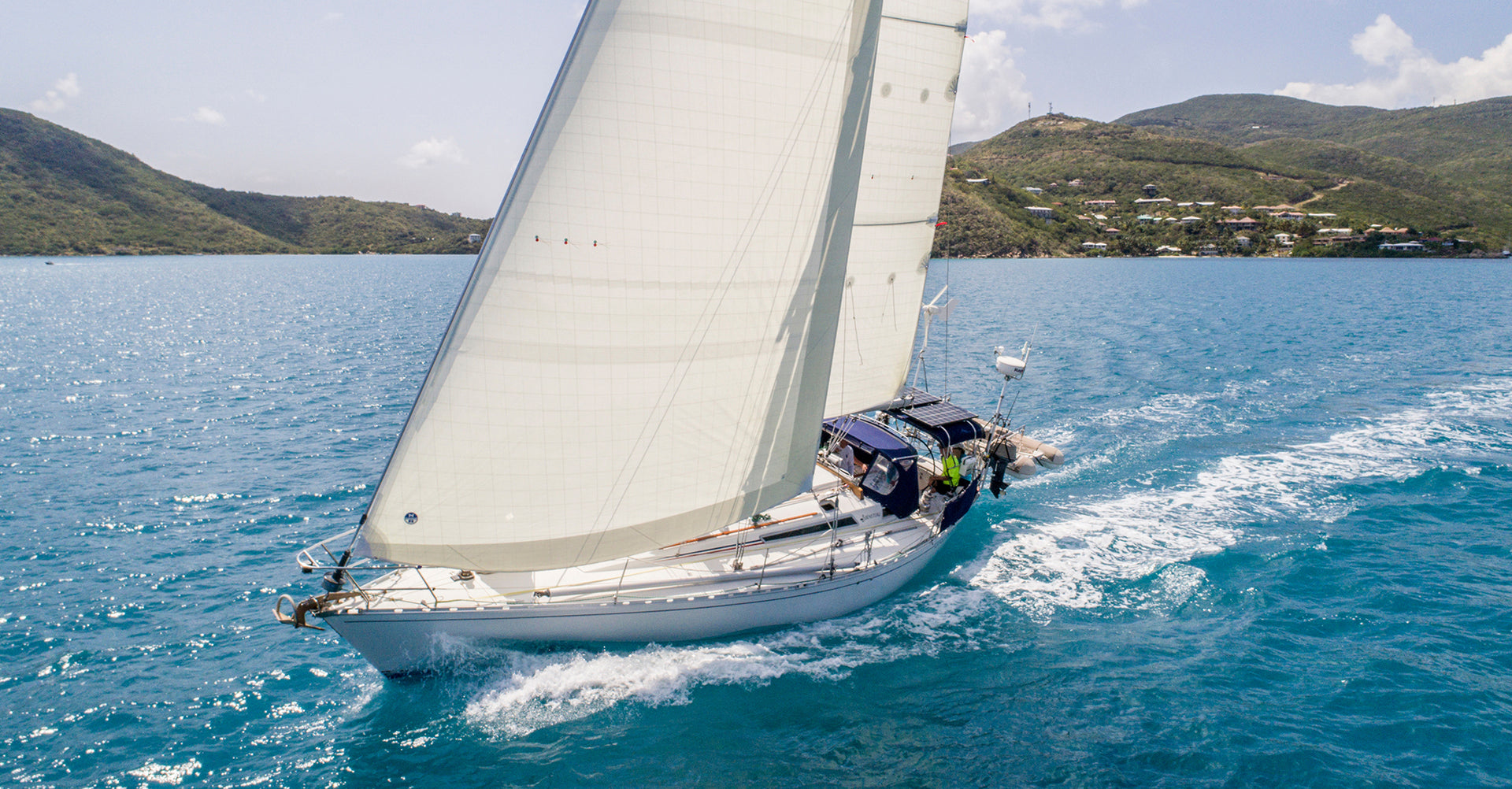
3Di NORDAC FAQ
3Di NORDAC™ FAQ
Hvordan adskiller 3Di NORDAC sig fra mine hvide panelsejl?
Polyesterens kvalitet og egenskaber har været base for mange gode sejl gennem årene. Derfor bruger North Sails netop dette velkendte materiale til sin nye cruising-linje, så den væsentligste forskel er fremstillingen af sejlet. 3Di NORDAC-sejl er støbt af filament-tape, der løber kontinuerligt fra top til bund, så vi undgår syninger og vævede tråde. Resultatet er et sejl, der holder den gennemtænkte facon længe og er nemmere at håndtere.
Jeg har hørt, at laminerede sejl ikke holder længe. Kan 3Di NORDAC delaminere?
Nej! Det helt store gennembrud i vores udvikling i 3D-konstruktionen er, at 3Di ikke er et laminat og derfor ikke har den meget omtalte mylar-film.
Det firkantede mønster i 3Di NORDAC-sejlene. Er det syninger?
Nej. 3Di-sejl er en helstøbt komposit, der konstrueres på specialbyggede forme. På 3Di NORDAC er de yderste lag en speciel type polyester, som vi bruger for at beskytte sejlet mod knæk, slid ,stræk og UV-stråler.
Jeg forstår ikke, hvordan I støber et sejl?
Dit sejl bliver støbt i sin tredimensionelle facon. Alle komponenter bliver lagt ud på en specialbygget form, der er indstillet i netop den facon, som designeren har udtænkt til at dække dine sejlads-behov bedst. Processen er meget langt fra paneler og symaskiner, hvilket sikre dig den perfekte facon og mange gode timer på vandet.
Hvorfor er et støbt sejl bedre, end et panelsejl?
I et 3Di-sejl kan vi udlægge alle komponenter, så de følger belastningsretningen. Gennem vores avancerede designprogrammer kan vi danne os et overblik over, hvor sejlet skal være stærkest og sprede alle filamenterne i lige præcis den vifte, der gør, at sejlet holder sin facon samtidig med, at vægten er optimal. I dugen, der bruges i et panelsejl, kan trådene kun lægges i to retninger og der er mange overlap pga. syningerne.
Hvordan ved I, at et 3Di-sejl vil være det ideelle valg til tursejlads?
3Di-teknologien er blevet brugt siden 2010. Gennem de år har vi lavet tusindvis af sejl, der har sejlet millioner af sømil. Vi har brugt to år på at udvikle 3Di NORDAC med den erfaring, som vi har fået fra de mange sømil, samt de hårdeste og mest udfordrende forhold, som vores racer-serier har stået model til. Vi kan derfor garantere, at dine 3Di NORDAC-sejl vil stå distancen og leve op til dine højeste forventninger.
North Sails laver kun kapsejladssejl, så hvorfor skulle jeg købe tursejl fra jer?
Vi nyder også tursejlads på sundet! Gennem de seneste årtier er North Sails faktisk den sejlmager, der laver flest tursejl. Vi bygger dem på den erfaringer, som vi gør os fra Volvo Ocean Race, Vendée Globe og de moderne superyacht. Både og forhold der kræver sejl, der holder distancen og er lette håndtere.
Hvorfor skal North Sails måle min båd?
Vi vil sikre os, at det sejl, som du investere i, passer perfekt til din båd! Derfor skal vi vide præcis, hvilken beslag båden har, hvor skødevognene sidder og andre detaljer, før vi kan designe dit sejl. Har vi før lavet sejl til din båd, har vi nok målene i systemet, men skal selvfølgelig vide, om noget har ændret sig i mellemtiden.
Hvordan passer jeg bedst på mine nye sejl?
3Di NORDAC-sejl kræver ikke meget vedligeholdelse, men det er altid godt at komme forbi med dem, når sæsonen er slut, så du har vished om, at de er klar til den kommende sæson. North Sails tilbyder et års gratis service på alle 3Di NORDAC-sejl.
READ MORE
READ MORE
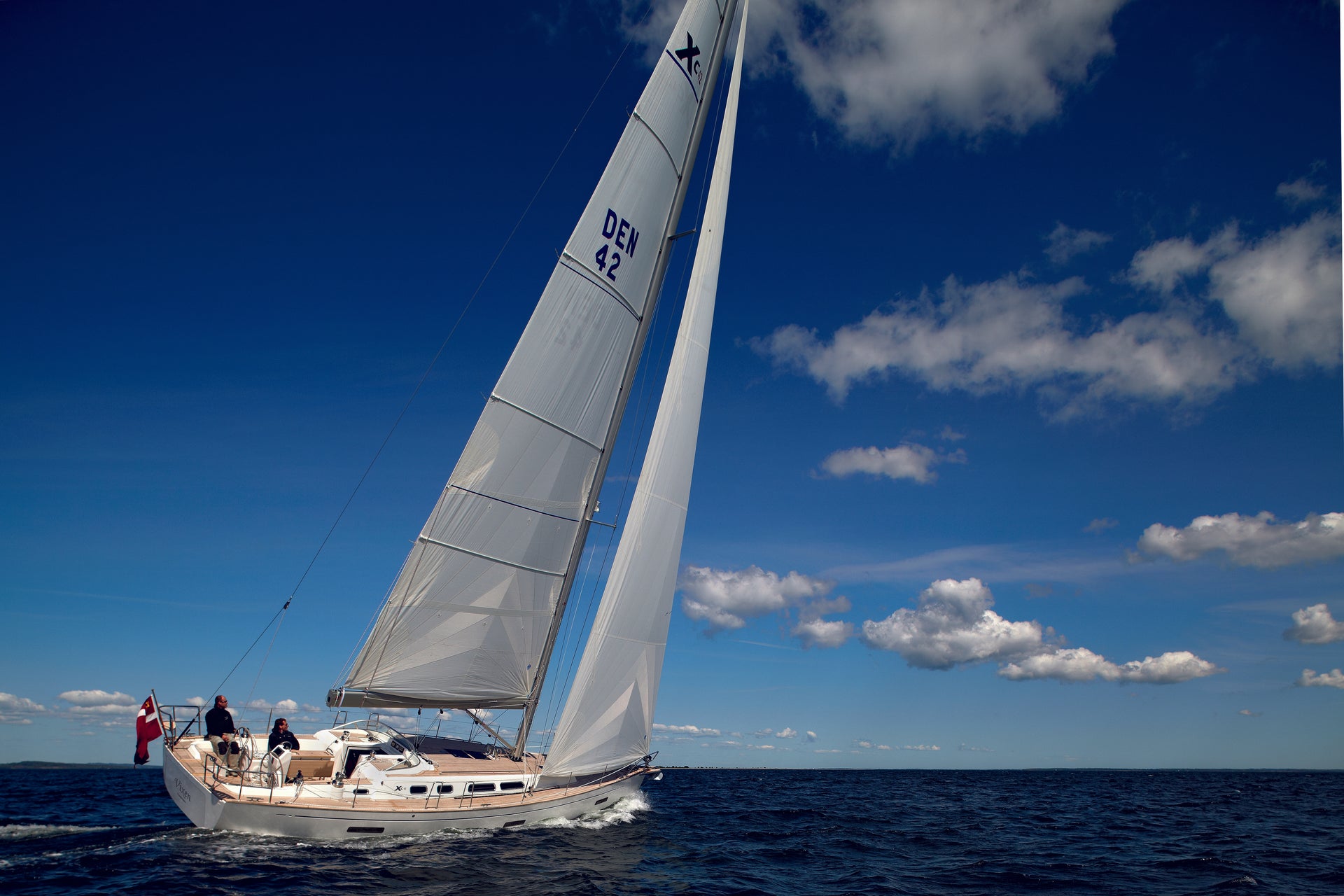
HVOR LÆNGE HOLDER TURSEJL?
HVOR LÆNGE HOLDER TURSEJL?
Det er det vi kan kalde et godt spørgsmål. Det svar enhver tursejler ønsker at høre er “for altid”. Eller i det mindste i rigtig, rigtig lang tid. Men svaret er lidt mere varieret.
Som et stykke trekantet dug, vil sejl holde i overraskende lang tid. Rent strukturelt vil sejlene langsomt ødelægges og miste styrke efterhånden som dug og syninger nedbryde af slid og solens UV stråler. En anden del af svaret har med sejlets facon og dermed ydeevne at gøre. Sejl som bliver belastet hårdt, vil strække sig permanent og dermed miste den oprindeligt designede facon (rund indgang og fladt/lige agterlig). Tabet af den oprindelige facon vil koste på flere områder.
Det første vi må se på er sejlets strukturelle holdbarhed. Der ikke meget ved at have et sejl med den perfekte facon, hvis det falder fra hinanden ved brug.
UV-stråling får gradvis vævede Dacronsejl til at miste rivstyrke. Hvis du kan tage en lille flænge i dit sejl og let
forlænge den, så er det normalt slut med det sejl. Vi kan selvfølgelig reparere sejlet med en lap eller forstærkning, men sejlet vil bare flænge et andet sted eller lige ved siden af lappen.
Mht. til syninger så kan du kontroller dem ved kører en fingernegl henover syningerne. Brister trådene, så er det tid til at få sejlet syet efter. Det er ikke unormalt at syninger slides før sejldugen er nedbrudt. Derfor er det vigtigt at du gennemgår dine syninger jævnligt.
3Di sejl, som er det eneste helstøbte, massive sejl uden bærende syninger, vil selvfølgelig være mindre sårbart for slidtage (i de syninger som ikke findes).
Det er indlysende at nedbrydningen er afhængig af i hvor lang tid og hvor kraftig UV sejlet eksponeres for.
Andre faktorer som kan slide på sejlet, er hvor meget vind det bruges i, hvor meget det får lov at blafre, slidtage mod riggen og anden mishandling, de udsættes for.
En god måde at få en idé om sejlets strukturelle levetid er, hvor mange timer det bruges.
Et godt sejl som bliver behandlet ordenligt og vedligeholdt jævnligt, vil kunne holde 3500-4000 timer.
En typisk weekendsejler som bruger sin båd 2 weekender om måneden og et i par ugers sommerferie vil ende op med omkring 240 timer årligt, lig med 16 års levetid.
I den anden ende af skalaen kan vi tage en sejler som bor ombord på sin båd i Caribien og sejler meget. Han vil måske bruge sejlene 12 timer om dagen, 12 dage om måneden, året rundt, lig med omkring 1728 timer brug. Disse sejl skal erstattes efter 2,5 år.
Prøv at lave beregningen for dit eget sejladsmønster og få en ide om, hvor længe dine sejl holder.
Anden del af svaret har med levetiden på faconen at gøre. Det er lidt mere diffust at svare på, fordi det ikke ses så nemt som slidte syninger og nedbrudt dug. Faconen ændres langsomt ved hver eneste times brug. Agterliget bliver rundere i profilen og sejlet bliver dybere og dybere. Resultatet af den ringere sejlprofil kommer langsomt snigende og stjæler næsten umærkeligt af farten lidt efter lidt.
Man kan selvfølgelig mene at det er af mindre betydning for en tursejler, hvor hurtigt båden sejler. Men når
sejlprofilen bliver mindre optimal, mister du ikke kun fart. Rorpresset øges, krængningen bliver større og lidt af sejlglæden forsvinder.
Dybe sejl kan til nød gå an i let luft, men ved tiltagende vindstyrke bliver det mere kritisk og irriterende.
Om du bevidst søger kurser mod vinden på dine sejlture eller ej, så kommer vi alle til at gå bidevind nu og da og en af glæderne ved at have en god og ordentlig turbåd, er evnen til at kunne sejle bidevind med en fornuftig fart og kontrol over krængningen.
I forhold til meget andet grej på din båd, så holder sejl relativt længe, men uheldigvis ikke for evigt. Når du beslutter at skifte dem, vil du blive glædeligt overrasket over den forandring der sker med din båd. Krængningen forsvinder, den bliver let på roret og at gå bidevind i frisk vind bliver igen en fornøjelse, sejlglæden bliver langt større.
At du som en biting også kommer først til de bedste havnepladser, må du leve med :-)
Her er et par forslag til at forlænge dine sejls levetid:
Beskyt sejlene mod UV-stråling når du ikke sejler. Brug bompresenning og forsejlspose.
Undgå at sejlene blafrer.
Når du går for motor, så bjærg sejlene medmindre vinden kan fylde dem.
Lad aldrig et overlappende forsejl bakke mod sallingen i vendingerne.
Brug den korrekte faldspænding. Husk at den ændrer sig med vindstyrken. Sæt faldet så hårdt at det lige præcis fjerner horisontale folder ved forliget. Husk at slække faldet igen når vinden løjer.
Beskyt mod slidtage. Især ved saling, men også ved prædikestol, motorlanterne mm.
Rig dine sejl af båden, når de ikke skal bruges i lang tid.
Skyl sejlene med ferskvand et par gange i løbet af sæsonen. Få dem gået efter jævnligt hos din sejlmager. En professionel vask tilrådes også hvert 3-4 år.
Når sejlene stuves af vejen for vinteren, skal de være tørre og opbevares tørt. Kulde tager de ikke skade af.
Sørg for at evt. rulleforsejl er sikret forsvarligt når du går fra båden.
Få evt. coatet dine sejl, allerede helt fra nye. Det forlænger levetiden og gør dem smudsafvisende.
READ MORE
READ MORE
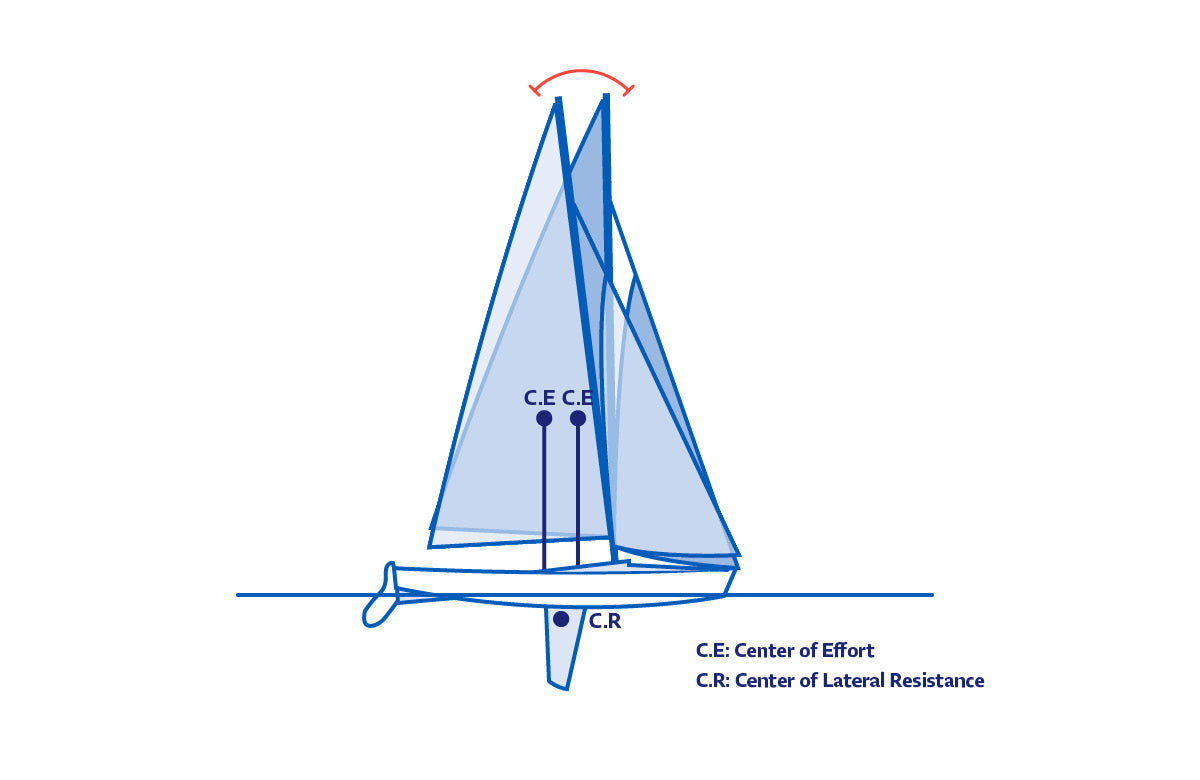
SPEED READING: ACHIEVING BALANCE IN YOUR SAIL PLAN
ACHIEVING BALANCE IN YOUR SAILPLAN
North Expert Skip Dieball Offers Three Ways To Improve Helm Balance From Sails And Foils, And Increase Your Speed Upwind
Racing dinghies and keelboats alike, a key to speed is maintaining a balanced helm upwind.
All sailboats have a different feel when you steer them. Some have a naturally heavy windward helm, and some have very neutral or sometimes even leeward helm. All things being equal, your goal is to sail with little windward helm, which makes the boat more enjoyable to sail and, more importantly faster, through the water. To achieve that balanced state, you have a lot of tools above the rails that you can use.
Most popular one-design boats have a North Sails tuning guide for your particular design. These guides help you get the boat set up correctly to achieve a nice helm balance. Tuning guides give great suggestions on shroud tension, forestay length, mast-butt position, etc. All play into getting the boat in the ballpark for good performance.
To go the next step, let’s explore three key factors: Your mast rake (and centerboard position if you have one); Your sail trim and angle of heel; Your sailing angle of attack relative to the wind direction.
On any sailboat, when the center of effort in the sails (CE) aligns with the center of lateral resistance (CR) of the boat and foils, the helm will balance. If the CE moves aft, windward helm will develop and if it moves forward, leeward helm will be felt.
Balance Mast Rake & Board Position
First, let’s establish what causes helm—the tendency of the rudder to turn toward the wind (weather helm) or away from it (leeward helm). When perfectly balanced, your boat’s Center of Effort (center of the sail plan lift) would be closely aligned with the Center of Resistance (center of the appendage lift). The further the CoE and CoR are from one another, the more helm your boat will naturally have).
As you can see in the illustration, if you have the ability to move the CR or CE, you can get your boat closer to perfect balance. In fact, a little mast rake can go a long way. For example, we’ll lengthen or shorten the forestay on the Etchells as little as 1/4” and the resulting movement aft of the CE will get the boat into a noticeably more balanced helm state. We adjust this for race conditions each day, and make sure we are happy with the adjustment is important before we get to the starting line.
In centerboard boats like the Lightning, Interlake and Finn, you have the ability to adjust your CR through small changes in centerboard position. Generally, you’ll want the centerboard all the way down in light to moderate conditions. This induces necessary helm for the lighter conditions. When you start to get loaded up and have to hike harder to keep the boat tracking, you may consider pulling up the board a little at a time to move the CR more inline with CE, thus reducing the helm. Be sure to create marks or visual indicators of the board position for each condition.
BALANCE TIP #1: Set up your rig to your tuning guide, then create a tuning journal to document settings and correlate to boat feel.
Of these two Etchells, the boat on the left has a firmer main trim, which is causing more heel and thus more helm and creating a tighter angle of attack. The boat on the right has a more twisted look to its sails that yields a flatter boat and less point. 📸 Bill Goldsberry
Sail Trim and Heel Angle
Rig and centerboard adjustments have a big effect on the helm, but if you are stubborn, like me, you’ll want to do everything else you can first. As I prepare for a race, my team and I will sail upwind and focus in on how the boat is set up and going through the water. We’ll talk about helm and boat set-up, but what I like to discuss as well is how the sails are set up and whether we feel we can hike the boat down.
Sail trim has such a huge effect on how the boat feels, and we want to be sure that we have a good range of trim as we go upwind through gusts and lulls. Markings on the spreader, sheets, deck, etc. all give us a quick reference points and let us get the sails set in the ballpark.
If the boat is too powered up, I’ll look to make some adjustments to the sheets to see if easing gives the boat a nice feel, or if in easing, the boat becomes too inefficient going upwind (I.e. if the sheets are too eased and we’re not pointing well enough). If we have to ease too much to get the boat tracking, we’ll depower through backstay, boom vang, traveler or other controls to flatten out the sails. Knowing the range of these controls and trim is super important.
BALANCE TIP #2: Learn the controls to depower and balance the helm—but don’t forget to hike hard first!
Minimizing heel angle is critical to maintaining helm balance, as extra heel increases windward helm, and one thing that rarely fails in getting the boat to track with good helm is hiking. Believe me, I’ve searched for ways to sail fast while not hiking hard—it doesn’t work! Make sure when you are setting your boat up that you and your team give the boat all the force you can in terms of hiking. That, for me, adds to the range of sail trim and control.
Refine Your Angle of Attack
The angle of attack is the angle you sail the boat upwind. As we all know, there’s a range in this angle of attack. It is also referred to as the “groove”. Some boats have a wide groove, meaning that you can steer a wider course upwind to achieve the same helm or feel. Some boats have a very narrow groove.
Ideally, you’ll want a groove that will be forgiving enough to steer around big waves, while sailing a little tighter and higher for short stretches.
How you attack the breeze and the edges of this groove will affect the helm greatly. The lower you sail (fat), the more the boat will likely heel and the more helm you’ll have. The higher you sail (pinchy) the less helm you will have and ultimately you’ll slow down and lose flow over both the sail plan and the keel/centerboard/rudder.
Your goal should be to rein in the range of the angle of attack so that you have a nice groove and sail efficiently upwind at a consistent angle of heel. If the helm/trim are causing you to steer too pinched up, then adjustments have to be made to get you into a part of the groove that is more efficient.
BALANCE TIP #3: Practice early in the season to get a handle on your angle of attack while sailing.
Connect with Skip Dieball for further information.
READ MORE
READ MORE
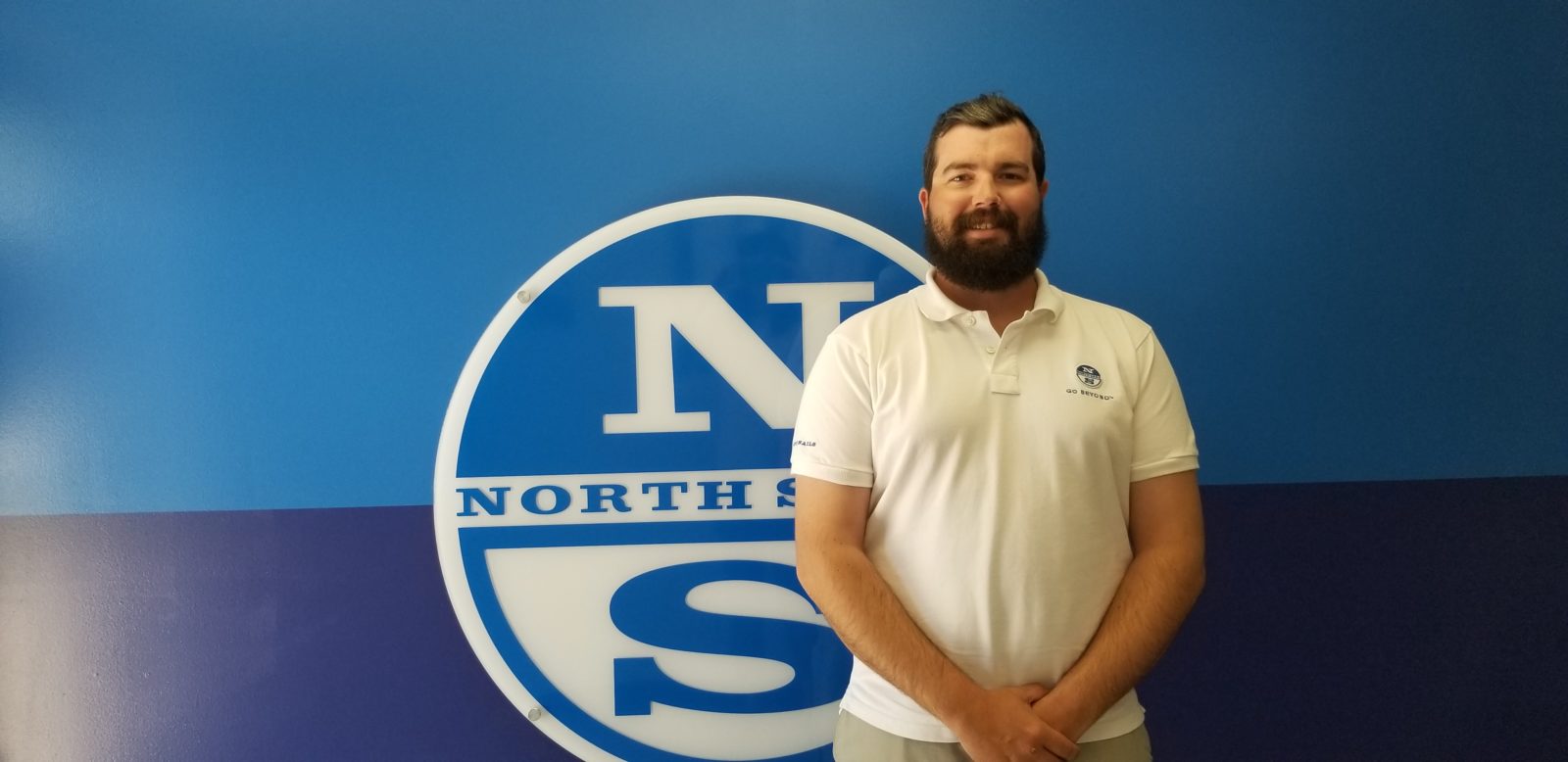
NORTH SAILS IN DETROIT WELCOMES NEW EXPERTISE
NORTH SAILS IN DETROIT WELCOMES NEW EXPERTISE
Spencer Colpaert Joins The Midwest Regional Sales Team
North Sails is pleased to announced that Spencer Colpaert has joined the Detroit team and will work alongside Karl Kuspa and Skip Dieball.
Spencer’s passion for sailing started on the Detroit River and Lake St Clair racing in Bayview Yacht Club’s Jr. Sailing Program on Optis, 420s and Lasers. When Spencer wasn’t sailing dinghies, he was out on the water sailing every evening and weekend race he could, learning valuable skills on a variety of different boats.
He also spent endless hours training on Bayview’s fleet of Ultimate 20s, match racing against some of the top sailors in the world. He now races alongside various match racing teams, including teams that have reached 1st in the US and 16th in the world at World Match Race Tour events. Following his push into match racing, Spencer sailed with top teams in the Beneteau 36.7, Farr 40, Melges 24, 32 and J70 One Design classes as well as larger boats such as TP52’s and the Maxi Z86, Windquest, among many others.
Spencer began his sailmaking career in Detroit working on the loft floor learning the ins and outs of the trade. He trained in Annapolis to further refine his skills, as well as Newport, RI. His years working on the loft floor have provided him with the insight to repair sails, as well as consult customers on sail designs.
After 10 years in the sail making industry, Spencer is very excited to make his move back home to Detroit to help support the sailing community in both Detroit and the entire Great Lakes region with the North Sails Detroit team. Spencer understands the community and knows what it takes to help his customers in any aspect on and off the water.
READ MORE
READ MORE
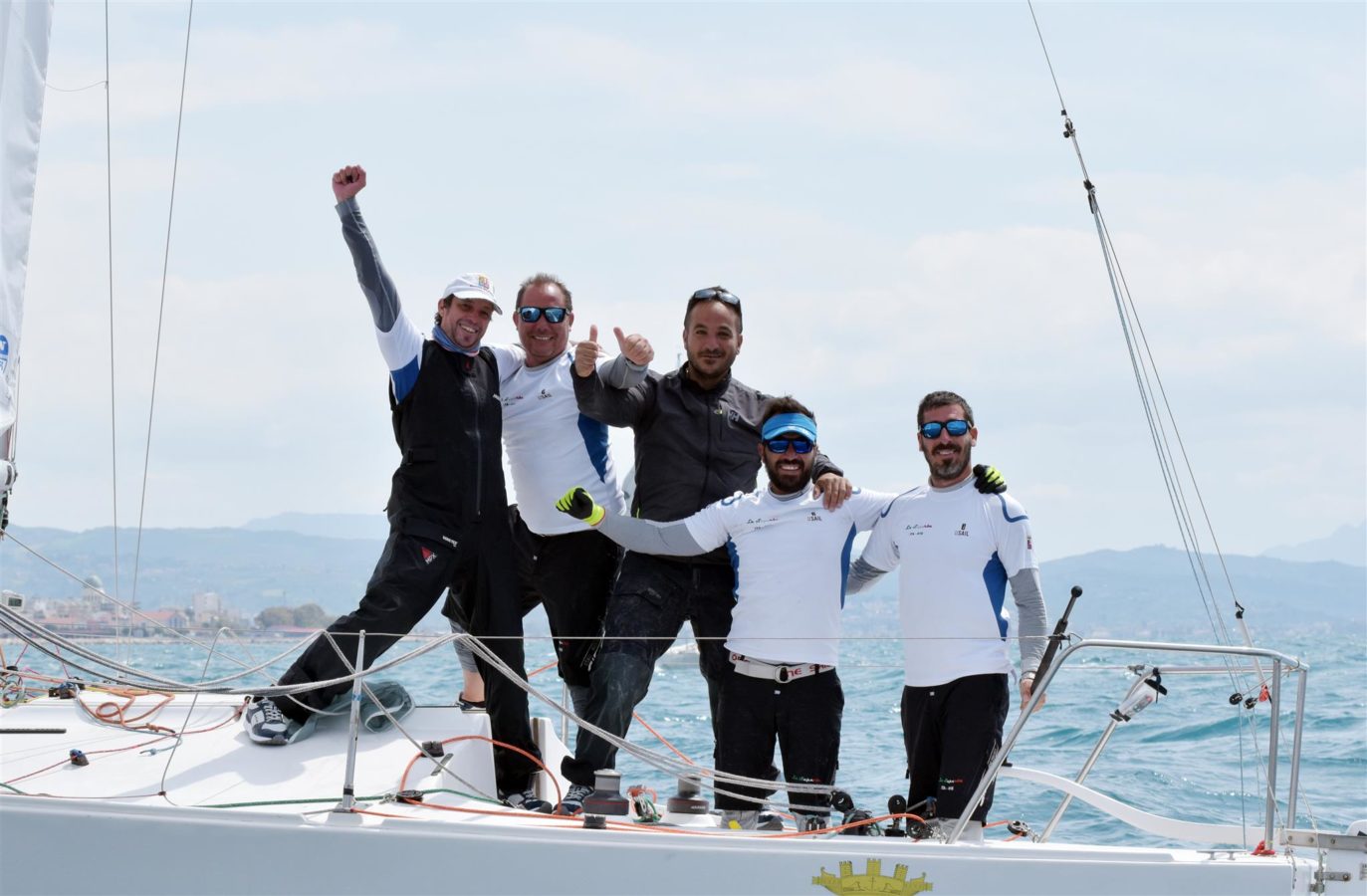
J/24 EUROPEAN TITLE WON BY LA SUPERBA
J/24 EUROPEAN TITLE WON BY LA SUPERBA
Brilliant Start To The Season For North Clients
📸 Christopher Howell
Ignzio Bonanno’s La Superba of Italy, with crew Simone Scontrino, Vincenzo Vano, Francesco Picaro and Alfredo Branciforte, were in the hot seat after racing from the 7th -10th May at the Sailing Club of Patras in Greece. The North Sails powered team took home the J/24 European Champion title for the second time after previously winning in their home country in 2012. Logging consistently impressive scores no worse than a fourth, they were able to stay ashore for Friday’s final duel which determined the runner-up positions. Anthimos Nikolaidis’ Evniki of Greece secured the silver spot with the race win, finishing with 37 net points. Two fellow countrymen followed in third and fourth overall: Panagiotis Kampouridis’ JMania (43 points) and Alexandros Tagaropoulos’ Hellenic Police (46 points). German Stefan Karsunke’s Schwere Jungs completed the top five with 51 points. All top five boats within a fiercely competitive fleet of 30 J/24’s finished with full North Sails inventories.
Day one brought unpredictable conditions, ranging from 8 to 20 knots. On day two and three, the breeze became slightly less variable, ranging between 6 to 13 knots. Ignzio Bonanno of winning boat, La Superba, talks about how the sails responded to these conditions:
”We are a really fast boat, especially in lighter breeze. In Patras for the Europeans, we used the North Fat Head Mainsail, San Diego (SD) Genoa and FR-2 spinnaker. On day two and three, our speed was excellent; the boat pointed really well upwind and was nicely powered downwind. This was highlighted during race eight where we gained nine positions in one downwind leg due to our boat speed. We are really happy to take the European title after three days of great sailing and a well-planned race area. The next event for us is the Italian Nationals in Cervia in two weeks time.”
“We used the North Fat Head Mainsail, San Diego (SD) Genoa and FR-2 spinnaker. Our speed was excellent; the boat pointed really well upwind and was nicely powered downwind.”
Bonanno and the La Superba team from the Italian Navy race together regularly and are working to come to Miami, Florida for the 2019 World Championship in October.
For more information on J/24 Championship winning sails, visit our class page.
📸 Christopher Howell
📸 Christopher Howell
📸 Christopher Howell
READ MORE
READ MORE
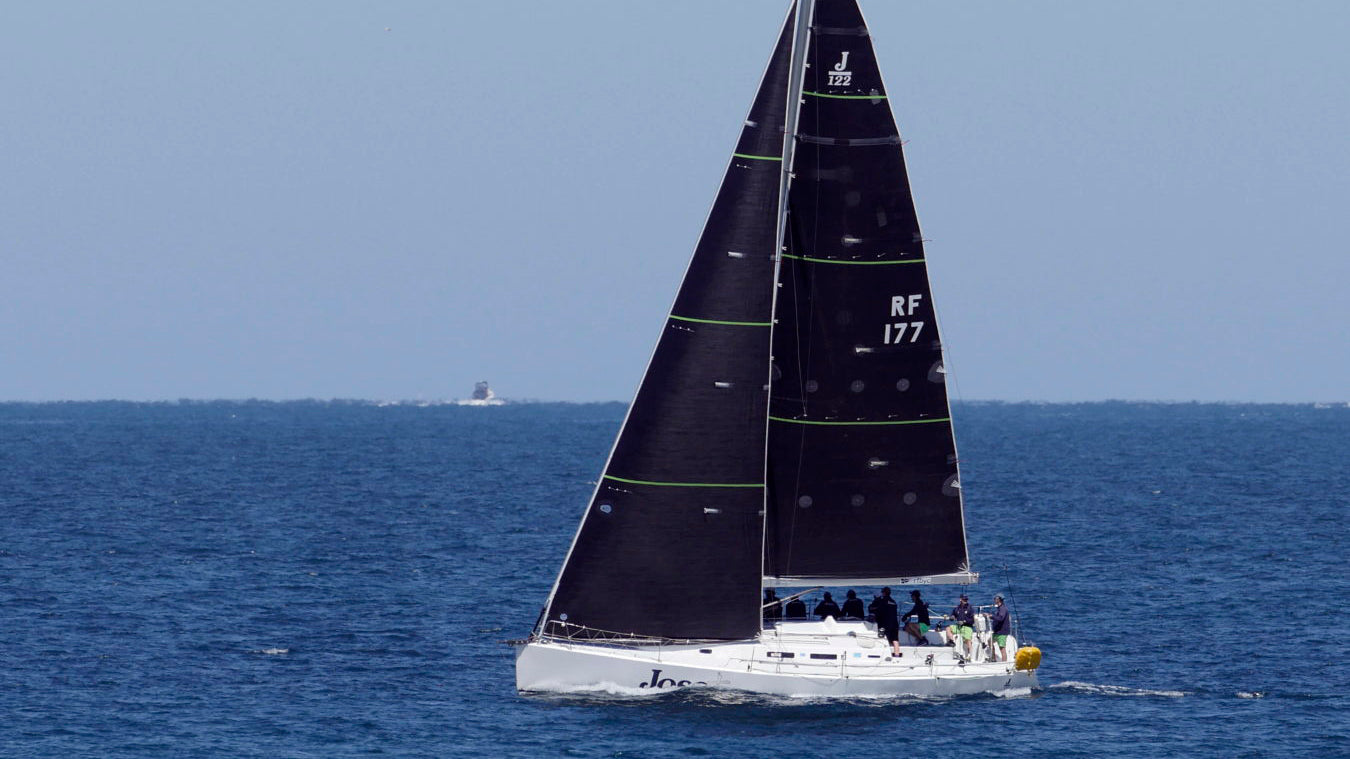
NORTH SAILS CLIENTS EXCEL OFFSHORE IN 19/20 SEASON
NORTH CLIENTS EXCEL OFFSHORE IN 19/20 SEASON
A Busy Year Of Offshore Racing Ends With Success
Joss, Ian Clyne ©Lindsay Preece- Ironbark Photos
After several years as the bridesmaid, Alan Stein in his GP 42 Dirty Deeds has won the coveted Siska Trophy (Overall Winner under IRC for the 6 race Blue Water Championship). Alan also won the Farrawa Cup hosted by Royal Freshwater Bay Yacht Club, a series of shorter offshore races.
Ian Clyne, with his J-122 Joss was 2nd in the Siska Trophy, 2nd in the Farrawa Cup and First in both the Success and Captain Stirling Cups, hosted by Fremantle Sailing Club.
Paul and Ceris Arns with their Mat 1245 Obsession rounded out the podium for the Siska Trophy and 2nd in the Success Cup. Paul and Ceris are also the reigning IRC State IRC Champions.
Mark Nagle with his Fred Barrett 35 Weapon of Choice was third in the Farrawa Cup, 3rd in the Success Cup and 3rd in the Weekend Series. Michael Thorpe with his S&S34 won YAH( performance handicap) in Division 2 of the Success Cup.
A special mention to Todd Giraudo with his SunFast 3600 Kraken for the Overall win in the 340nm Fremantle to Albany Race. Todd sailed double handed, an amazing achievement. Second place overall was another SunFast 3600 Crush owned by David Davenport. David sailed fully crewed, another great result for his first major ocean race.
Next up the IRC State Championship to be sailed in Conjunction with the Valmadre Offshore winter series. Get your team at the front of the pack. Call your local North expert for more information on upgrading your sail inventory to best your competition.
Dirty Deeds, Alan Stein ©Lindsay Preece- Ironbark Photos
Obsession, Paul and Ceris Arns ©Lindsay Preece- Ironbark Photos
Weapon of Choice, Mark Nagle © Lindsay Preece- Ironbark Photos
Soon, Michael Thorpe ©Lindsay Preece- Ironbark Photos
READ MORE
READ MORE

L'ABC, LA SEULE TRANSAT D'OUEST EN EST!
L’ABC, LA SEULE TRANSAT D'OUEST EN EST!
Un Rallye retour en flotte sécurisée des Antilles aux Açores
📸 oasisphoto.fr
Une Transatlantique retour, partant des Antilles vers l’Europe, est le concept derrière l’Atlantic Back Cruising (l’ABC). North Sails est l’un des partenaires de cet événement unique dont le coup d’envoi a été lancé dimanche 12 mai 2019 en Guadeloupe. La traversée s’effectue en flotte depuis Pointe-à-Pitre jusqu’aux Açores. Chaque bateau bénéficie d’une assistance maritime et d’un suivi individualisé (routage, météo, suivi satellite) du départ à l’arrivée à Ponta Delgada, puis jusqu’au port d’attache final.
Pour cette deuxième édition, ils étaient 15 bateaux hauturiers course ou croisière (mono ou multi) à quitter la Marina Bas du Fort (port du Gosier) dans des conditions favorables, salués par le parrain du Rallye, le skipper Guadeloupéen Rodolphe Sepho. Actuellement, les équipages composés de 4 à 5 équipiers, soit près de 75 navigants qui participent à l’aventure, se dirigent vers l’Est et seront attendus vers la fin mai ou début juin à Ponta Delgada aux Açores.
L’Atlantic Back Cruising a l’ambition de devenir un événement incontournable pour les bateaux qui traversent l’Atlantique d’Ouest en Est, et ils sont plus de 2000 à effectuer la traversée chaque année. L’ABC s’adresse aux voiliers désireux de rentrer en France après avoir passé plusieurs mois ou années aux Antilles, mais également aux voiliers de course qui rentrent d’une régate ou d’un Rallye Atlantique (Transquadra, course du Rorc, rallye de l’ARC…).
Depuis la première Route du Rhum en 1978, la Guadeloupe a créé une relation intime avec le monde de la voile. Le port du Gosier à Pointe-à-Pitre, idéalement situé pour partir vers un voyage retour, dispose de toutes les Infrastructures pour préparer son bateau à une longue traversée. Quant aux Açores, le choix s’imposait comme une évidence : cet archipel est l’escale obligatoire sur le parcours du retour vers la Métropole.
📸 oasisphoto.fr
READ MORE
READ MORE
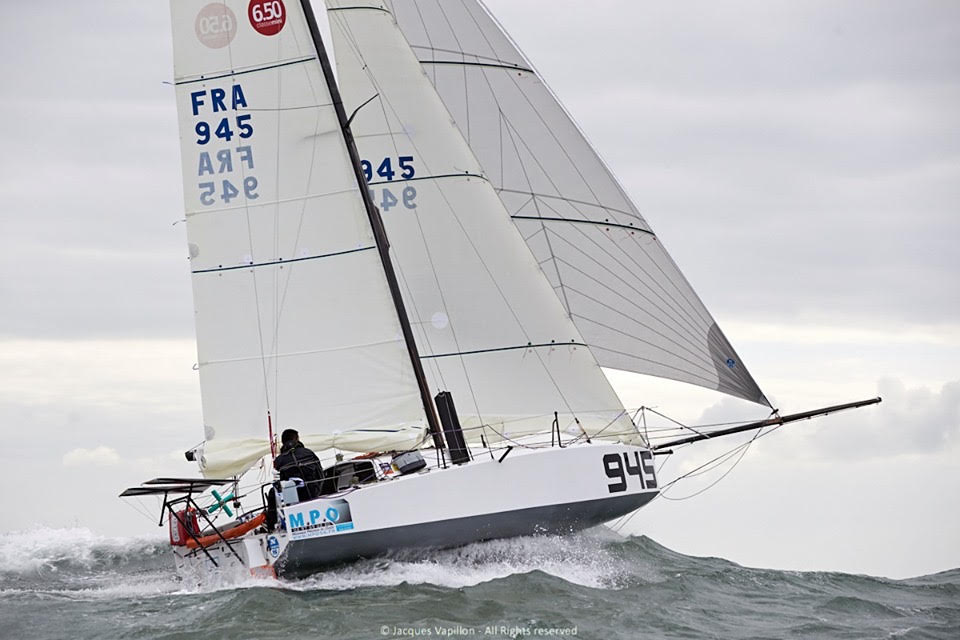
MINI EN MAI 2019
MINI EN MAI 2019
Une édition particulière mais menée de main de maitre par le comité de course
📸 Jacques Vapillon
La mini en mai s’est déroulée du 6 mai au 10 mai.
Un départ avancé pour cause de fort coup de vent, une neutralisation de la course pendant 24h, puis un second départ où les coureurs sont repartis en fonction des temps du premier parcours.
Après une lutte acharnée, Axel Tréhin (FRA 945) signe une très belle 2 ème place en classement proto.
Pour l’occasion, Axel avait reçu ses voiles plates en 3Di.
Prochaine course, le trophée Marie Agnès Péron à Douarnenez, début juin.
READ MORE
READ MORE
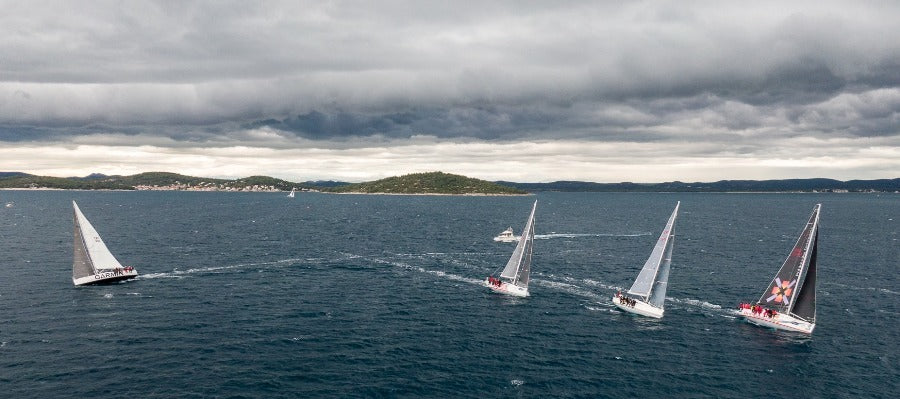
ZAGRIJAVANJE PRED ORC SVJETSKO PRVENSTVO
Zagrijavanje pred ORC Svjetsko prvenstvo
Foto: Hrvoje Duvančić - regate.com.hr
Unatoč očekivanjima da će većina hrvatske flote koja se prijavila za jedrenje na SP doći u Šibenik, to se nažalost nije ostvarilo. Zamišljeno je da se regata jedri tri dana - petak, subotu i nedjelju - i da se izađe na oba regatana polja koja će se koristiti na Prvenstvu. Međutim, par dana pred početak regate i dalje je na startnom popisu bilo samo 8 jedrilica, pa su organizatori u dogovoru s jedriličarima odustali od trodnevne regate i skratili je na samo dva natjecateljska dana.
Kako je prognozom najavljeno dosta jako jugo za cijeli vikend, skoro sve posade su obavile transfere već u četvrtak i nekoliko ih je petak iskoristilo za trening po jakom vjetru. Koliko su bili atraktivni uvjeti za jedrenje govori podatak da je jedrilica Dubrovnik po 25 čvorova juga jedrila brzinom 18 čvorova!
U subotu je flota izašla na more s nadom da će pokušati startati s prvim jedrenjem u podne jer jugo još nije bilo prejako. Ali dok se plovilo prema poziciji između Zlarina, Obonjana i Prvića, vjetar je kontinuirano jačao. Regatni odbor je preventivno savjetovao natjecateljima da se sklone u zavjetrinu Zlarinske uvale, dok su suci izašli na "brisani prostor" potencijalnog regatnog polja. Tamo ih je dočekalo vrlo valovito more, a jugo je s prosječnih dvadeset čvorova u roku od dvadesetak minuta eskaliralo na prosječnih 25 s udarima od preko 30 čvorova.
Po pravilima ORC-a, ne savjetuje se startanje regate po vjetru koji je jači od 22 - 23 čvora, jer tada točnost kalkulacije rezultata dolazi u pitanje. Naime, polarni dijagrami koji se dobivaju iz ORC-ovog VPP-a (Velocity Predicting Program) su između 6 i 20 čvorova stvarnog vjetra (true wind speed - TWS). Ali ako za vrijeme jedrenja plova koji je startao unutar dogovorenih limita dođe do pojačanja vjetra, a uvjeti još nisu tako loši da bi se zbog sigurnosti prekinulo jedrenje, plov se ne prekida i jedri se do kraja.
S obzirom na situaciju na moru RO je proglasio odgodu i pridružio se jedriličarima na Zlarinu, gdje su nakon par sati proglasili kraj čekanja i raspustili natjecatelje.
Kiša između subote i nedjelje je ugušila jugo i nedjeljno jutro je bilo lijepo i sunčano s nekoliko čvorova oštrina. Randezvous na regatnom polju je dogovoren za 11:00, a prvi start je signaliziran u 11:25.
Foto: Hrvoje Duvančić - regate.com.hr
Startalo se po 6-7 čvorova iz 195°. Flota je ugodno jedrila, a u zoni pred privjetrinskom oznakom vjetar je počeo slabiti. Srećom bilo ga je dovoljno da se jedrilice neprekidno kreću i da su jedra napuhana. Regatni odbor ne prekida jedrenje i to se kasnije pokazuje dobrom odlukom, jer se nakon desetak minuta vjetar vraća i sve jedrilice uspješno dolaze do cilja. Čak i posada Blue Chipa može biti zadovoljna ishodom, jer je ova jedrilica imala najviše problema s vjetrom, ne ulazi u cilj u grupi s ostalima, ali nakon korekcije rezultata zauzima 5. mjesto.
U rezultatima se može vidjeti da je i u ovom i u idućem jedrenju uz jedrilicu X-Cite oznaka DNC. Oni su se u subotu vratili u Biograd, a svoju odluku su donijeli na osnovu kombinacije vremenske prognoze po kojoj se u nedjelju nije trebalo održati ni jedno jedrenje i umora posade koja se par dana ranije vratila s Kornati Cupa.
Nakon blage korekcije regatnog polja, jer je vjetar za desetak stupnjeva otišao u lijevo, krenuo se s drugim jedrenjem. Start je bio točno u 13 sati, a vjetar je sad već pojačao na preko deset čvorova.
Koliko brže se jedrilo vidi se u usporedbi realnih vremena ulaska u cilj. Razlike su u prosjeku bile oko 25 minuta!
Ovog puta je vjetar imao ravnomjeran pritisak po cijelom regatnom polju i nije se ponovila situacija kao sat ranije kad je Dehler ostao iza sviju. Ovog puta je ušao kao predzadnji realno, ali nakon korekcije odnosi pobjedu. Odmah iza njega završavaju pobjednici prvog plova, domaća ekipa s Anđele X.
Također je veliku razliku u rezultatima napravila i ekipa jedrilice Dubrovnik. Oni su u prvom plovu nakon korekcije završili na 7. mjestu, dok su u drugom plovu finiširali kao 4. Za razliku od njih posada Mareusa je bila konstantno dobra i knjiži drugo i treće mjesto. Polar iGringo su također dosta oscilirali nakon korekcije, dok je Munjek po matematičkom modelu trebao biti mnogo brži u oba plova.
I pokušan je još jedan plov. U 14:30 se startalo po sad već jakom oštrinu. U međuvremenu su se skupili i oblaci nošeni burom, tako da je bilo za očekivati da će doći do neke značajnije promjene situacije. Do tog preokreta dolazi već za vrijeme završetka jedrenja prve krme, kad vjetar kreće sa značajnim pomakom u lijevo. Do toga dolazi toliko brzo da RO ne stiže reagirati s "Charlijem" i nema drugog izbora do označavanja prekida jedrenja.
Kako se to desilo par minuta prije 15 sati - vremenskog ograničenja - regata se mogla proglasiti završenom!
READ MORE
READ MORE
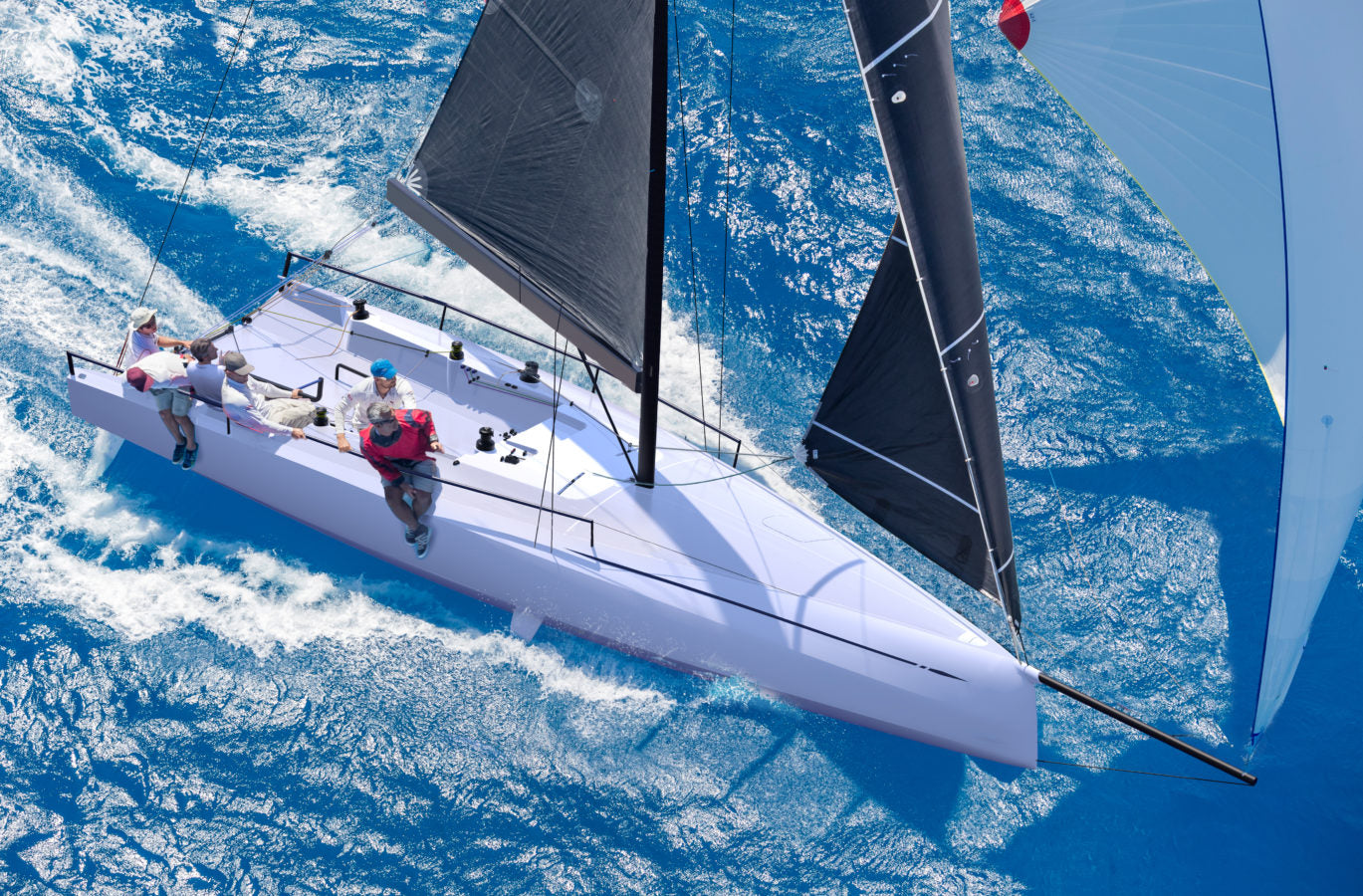
THE NEW CLUBSWAN 36 MAKES ITS DEBUT
THE NEW CLUBSWAN 36 MAKES ITS DEBUT
North Sails Team Collaborates On Class Design Process
On May 3rd Nautor’s Swan unveiled the ClubSwan36 in Scarlino Italy. This foil assisted one design keelboat is the newest addition to the ClubSwan family, a division of Nautor’s with the specific goal of leading the yard’s development of high-performance yachts based upon cutting-edge design principles. North Sails is proud to have played a part in bringing this innovative one design boat to launch by delivering North Design Services and technical analysis to the project.
“All of us at North Sails are looking forward to sea trials and dialing in the performance potential of this exciting new class.”
North Swan expert Arnd Howar and sail designer Juan Meseguer worked with Juan Yacht Design and the Nautor’s team throughout the design process. “You need to have sailmakers involved early on in the design process to help define the loads and flying shape, explains Philippe Oulhen, JYD Project Leader working with Nautor’s. “North Sails supplied models to power the CFD runs, which allowed us to progress onto rig development. The North team and JYD have worked together on many projects throughout the years, and we’re pleased to have Juan collaborate with us as we move through the various design phases.”
A tight one design rule limits the sail inventory to just five sails; one main, two jibs and two asymmetric kites. The ClubSwan 36 upwind inventory is built from North 3Di RAW, known for its shape holding and ability to carry through a wide range of racing conditions.
“The ClubSwan 36 is an exciting project for one design sailors who will experience high-performance sailing in a boat that was designed for ease of handling,” remarked Arnd Howar, who is the North Sails ClubSwan 36 class leader. “All of us at North Sails are looking forward to sea trials and dialing in the performance potential of this exciting new class.”
READ MORE
READ MORE
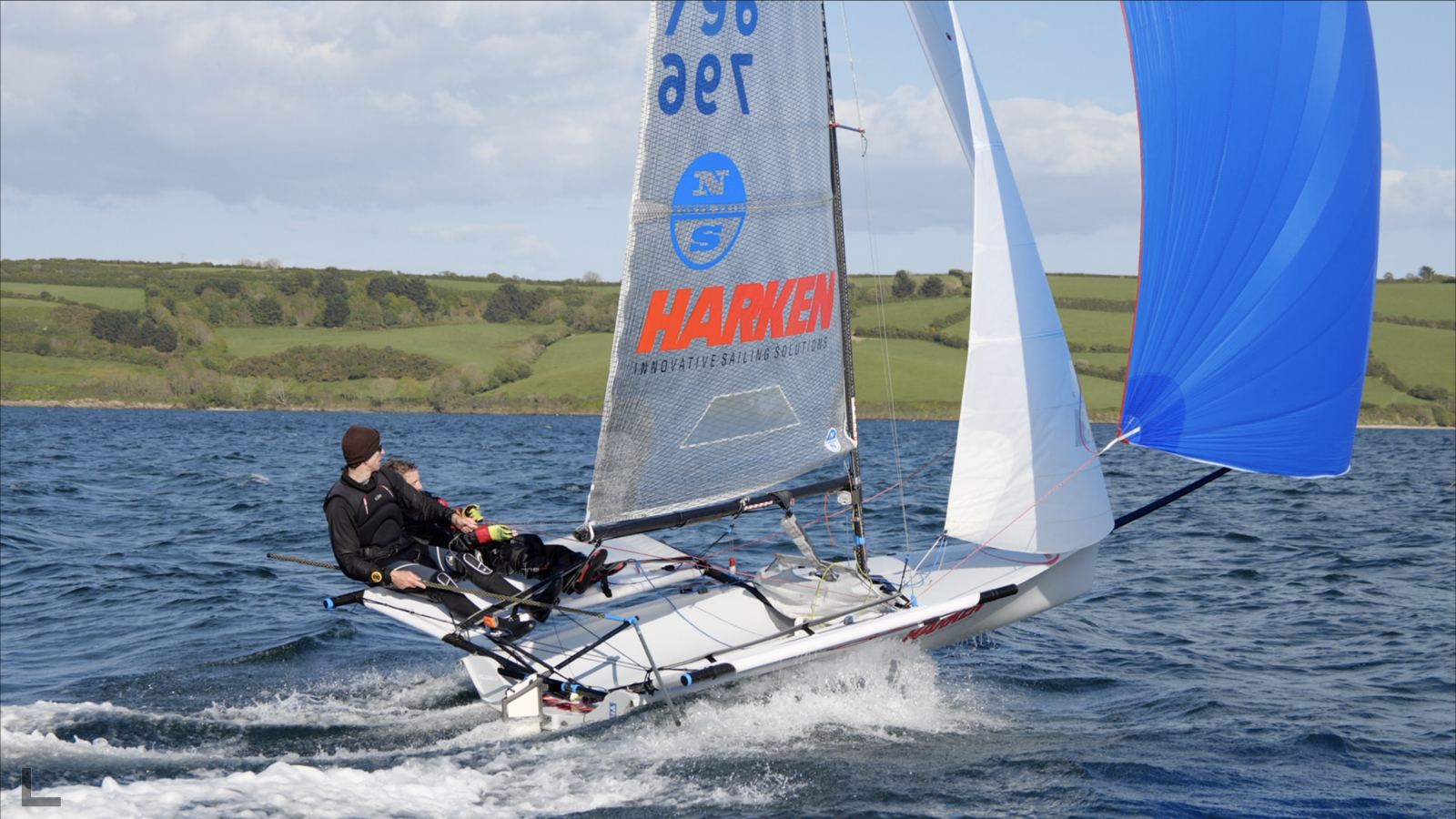
NORTH KNOCKOUT AT B14 UK NATIONALS
NORTH KNOCKOUT AT B14 UK NATIONALS
Top Ten Boats Powered By North Sails
📸 VR Sport
Hosts of the event, Restronguet Sailing Club provided a great mix of conditions for the GUL B14 skiff Championships. Day one brought three very different races. Launching in a force four which soon reduced to a force two by the start of the race, The Anthill Mob (Tim Harrison/Jonny Ratcliffe) showed their light wind prowess to win the first race from Harken (Nick Craig/Tobytastic Lewis).
With the wind becoming shifty and continuing to drop for race two, Team GUL/North Sails (Mark Barnes/Char Horlock) responded well to these shifts, maintaining a healthy lead until Harken found some lucky pressure, turning a five-minute deficit into an impressive win in very little wind. The Anthill Mob recovered to third from choosing the wrong side of the course on an exceptionally hard to call first beat, finishing ahead of Brightmile (Mark Watts/Stig Rogers).
The wind died to nothing in the afternoon of day one, as race officer, Phil Slater, hoisted AP over I. However, after spotting some wind in the estuary, the fleet were greeted by a 15 knot northerly and sunshine – champagne sailing! With all to play for going into day two, Harken had the edge with four teams in close contention. The plan to have four races at the lower end of Carrick Roads off of Falmouth did not look promising as the fleet arrived on the water to sunshine and a dying breeze on day two. Luckily, a force two to three filed in from the south.
Race four had a clean first start with Harken, Demelza (Peter Knight/James Wilkinson), Team GUL/North Sails and The Anthill Mob fighting it out at the front of the fleet. First to pull through and take race one was Harken. Demelza showed her local knowledge finishing in second and Asbo (Crispin Taylor/Ralph Singleton) appeared under the radar taking third from Team GUL/North Sails. Damelza dominated race five and Team GUL/North Sails took their first win in race six.
📸 VR Sport
With one hand on the trophy, Harken were out of race seven after snagging a buoy, leaving the win open to the rest of the fleet. Brightmile took up the challenge, chased by The Anthill Mob and Demelza. An exciting final day was to follow as just 2.5 points separated The Anthill Mob, Demelza and Team GUL/North Sails. With similar conditions, day three brought sun and dying breeze to the racecourse which was set in the upper half of Carrick Roads, off Mylor Harbour. 5-8 knots arrived making local knowledge paramount in such a complex channel.
The Beast (Gary Parks/Chris Webber) set the pace on race eight with the top five scattered across the course. Over two laps they held true, but on the last lap Harken and Team GUL/North Sails were keen to challenge The Beast. On the final run, a kite line wrap released Harken and a split occurred. The Beast headed into pressure and slight adverse current as the other two teams sailed inshore. At the finish, Harken held on, but Team GUL/North Sails could not take second from The Beast, resulting in just a few metres between the three boats at the finish. In fourth came Brightmile. The Anthill Mob took fifth and Demelza slipped into seventh.
The breeze died for race nine, so the fleet returned to Circus Maximus, the arena off of Falmouth at the bottom of Carrick Roads. Breeze steadied at 5-6 knots and the tide turned. Demelza meant business and led the fleet at the windward mark. Harken found a lane and took second place. The Anthill Mob and Team GUL/North Sails chased in third and fourth with Asbo and Brightmile hitting the current forcing them back to fifth and sixth. Numbers were calculated. Harken’s consistency meant they had won, but all else was up for grabs. Time to perform when it mattered most.
Going into the final, deciding race, Team GUL/North Sails got rolled at the Committee Boat on the start line, The Anthill Mob got caught at the pin as a shift came through and Demelza, positioned at the middle of the line, was in her stride. Team GUL/North Sails chose mid-left on the first beat, reaching the windward mark with Better Than Life (Steve Hollingsworth/ Joe Tosh) and Demelza. The downwind leg caused a split between these three boats, with Team GUL/North Sails hooking both boats at the gate. On the last beat, Brightmile came in to play. As the final downwind was so close, Harken, Brightmile and Demelza fought it out with Team GUL/North Sails shadowing ahead. Finishing within seconds, it would be when the sailors got ashore that they discovered their finishing position.
Harken took a worthy win, The Anthill Mob had fallen away to confirm fourth, but second place was decided by the rule book as Team Gul/North Sails and Damelza both finished on 23.5 points. Team GUL/North Sails had just done enough, meaning Dalmelza took a well earned third place. Team GUL/North Sails also took first female crew with Char Horlock onboard.
The fleet now looks forward to the Carnac Europeans and World Championship which looks like they are set to be nail-biting events after such tight results at the UK Nationals.
For more information on B14 Championship winning sails, visit our class page.
📸Patrick Clarke
READ MORE
READ MORE

ERFOLGREICHE NORTH SAILS KUNDEN IM FINN UND STAR AM BODENSEE
ERFOLGREICHE NORTH SAILS KUNDEN IM FINN UND STAR AM BODENSEE
Gleich in zwei One Design Klassen standen nur Segler, die North Sails vertrauen, auf dem Podest! Herzlichen Glückwunsch den Siegern und allen Teilnehmern bei diesen garstigen Bedingungen!
Jollenregatta, Mammern, 27.-28. April 2019
Bericht von der Finn Klasse Schweiz:
In Mammern gabs nichts zum Jammern!
20 Finnsegler gaben sich die Ehre bei der diesjährigen Jollenregatta in Mammern.
Ein französischen Freund liess sich allerdings am Samstag morgen von Horror-Wind-Gerüchten auf Windfinder abschrecken – er zahlte sein Startgeld…. und verschwand, sodass am Ende 19 in die Liste kamen.
Tatsächlich wehten einige Böen am Samstagmittag kräftig mit über 20 Knoten, der konstante Wind hielt sich allerdings stets deutlich unter der 12 Knoten Marke und war angenehm zu segeln.
Einige der Teilnehmer erzählten von Regenschauern ja sogar Graupelschauern und Frostbeulen während der Wettfahrt, dem Autor ist so etwas an unserem schönen, stets sonnenverwöhnten und warmen Bodensee völlig unbekannt und er kann dieses nicht bestätigen. (Zudem würde er natürlich Ärger mit dem hiesigen Tourismusverband bekommen).
Ein stärkerer Westwind ist vor Mammern immer anspruchsvoll zu segeln. Das buchtige Ufer auf der nördlichen Seite scheint immer bevorteilt, lässt aber dann bei Annäherung zur Luvtonne oft seine Jünger im Stich. Sodass diejenigen, die in der Mitte bei 10 bis 15 Grad Drehern eine Wende nach der anderen setzen am häufigsten mit guten Plätzen an der Luvtonne belohnt werden.
Bereits im ersten Lauf am Samstag kamen damit Oliver Wirz und der Autor (also Bollo - also ich) mit dieser Taktik als die ersten beiden oben an. Vorwind konnte sich Oliver Wirz ein „Muckesäckele“ nach vorne schieben und fuhr dann schulbuchmässig immer zwischen Tonne und dem Gegner ( also dem Autor, also Bollo, also mir ) gen Luv, dieser, (also der Gegner also der Autor also ich) dachte sich: "ok Kollege, dann schauen wir mal wie weit Du mit mir in die Grütze fährsts" , war bald überrrascht von der Leidensfähigkeit seines Peinigers und noch überraschter als Thomas Bangerter den vorderen Zweikampf nutzte um sich auf der Kreuz aus einem sichern 100 Meter Abstand vor ihn zu schieben. Also erster Lauf Oliver (mit gutem Abstand) 1. Thomas 2. Ich dritter.
Im zweiten Lauf ähnliches Spiel, allerdings war Thomas dort bereits auf dem ersten Vorwind mit gutem Abstand mit Oliver vorweg. Ich konnte dann auf der kurzen Zielkreuz noch 4 Plätze holen und kam mit 3 Zentimer Abstand als 3. vor Bernd Rimmele ins Ziel.
Das Duo Oliver Wirz (1.) und Thomas Bangerter (2.) konnten auch den 3. Lauf deutlich für sich entscheiden.
Nach 3 Läufen bei bockigem Westwind waren dann alle Finnisti froh, dass die Wettfahrtleitung vom angedrohten 4. Lauf absah und uns in den sicheren aber recht kühlen und nassen Hafen schickte.
Bei Freibier gespendet von der Bootswerft Schenk Yachtbau und der Fireball KV würden dann noch Heldentaten ausgetauscht, bevor es dann traditionell in den Saal des Gasthauses "Hecht" zum Nachtessen ging.
Teuflischer Weise waren die Kinder und Jugendlichen so nett zu den Gästen (beim übrigens sehr guten Essen), dass man Ihnen niemals ausschlagen konnte, wenn Sie nachfragten, ob noch etwas zu Trinken zu bringen sei -Sie hatten einfach sehr viel Spass am Bier zapfen. So saßen also die höflichen Finnsegler bis in die Nacht und ließen sich ein Bier nach dem anderen bringen - natürlich nur um den Kindern die Freude am Zapfen zu ermöglichen.
Ebenso war die recht spät angekündigte Startzeit von 10:30 Uhr nicht allzu motivierend zu früh den Saal zu verlassen ( beim Schreiben dieser Zeilen kommt mir da fast der Verdacht, dass die niedlichen Bedienungen und der späte Start irgendwie zum Plan der Gastgeber gehörten den Getränkeumsatz zu puschen).
Der Sonntag empfing die Segler dann mit etwas weniger aber umso launischerem Westwind, bei "nahezu tropischen Temperaturen und strahlendem Sonnenschein" … (ok ich treff den Chef vom Tourismus Büro regelmäßig also nehmts mir nicht übel).
Oliver Witz hat beide Läufe gewonnen. Er konnte somit einen 1. Platz streichen.
Thomas Bangerter schwächelte etwas und ließ den Autor ( also…bla bla) die 4 Punkte von Samstag aufholen, er und der Autor waren somit Punktgleich und der 3. Lauf am Sonntag wäre die Entscheidung gewesen, leider kam es nicht dazu, denn ein (warmer fast tropischer) Schauer kam diesesmal von Norden, sodass der Wind erst 90 Grad drehte und sich dann zurück an den Nordpol verabschiedete.
Die Wettfahrtleitung reagierte auch hier tadellos, broch den Start für die Finns ab, und die Wettfahrt für die anderen Klassen auch. Nach sehr kurzem abwarten auf dem Wasser schickte sie die Flotte an Land.
Siegerehrung wie immer mir süßem und saurem Most als Teilnehmerpreis und Sekt (oder Apfelsekt ? - habs noch nicht probiert) für die Sieger. Wie immer haben die beteiligten des kleinen Vereins in Mammern wieder alles gegeben um die über 60 angereisten Segler der 3 Klassen zufrieden zu stellen. Die sehr freundschaftliche und bemühte Aufnahme der Gäste ist immer wieder klasse. Auf dem Wasser überzeugt die Wettfahrtleitung mit Regel und Revierkenntnis.
Noch ein Wort zum Wetter: Bei der Heimfahrt kurz vorm Hafen schlief ja der Wind ein, und es schien die Sonne – ein neben mir treibender Contender Segler meint zu mir: "Das ist doch klasse, so können wir wenigstens ohne Regen einpacken!" er sollte recht behalten als wir im Hafen waren... kamen die ersten Graupelschauer.
Oliver Wirz, 5 Pkte
Thomas Bangerter, 11 Pkte.
Andreas Bollongino, 11 Pkte.
Bollo
GER 19 (der als zahlendes Mitglied der Schweizer KV sich den Luxus erkauft hat als 3. Schweizer gezählt zu werden und schreiben zu dürfen – toll gemacht )
Bodenseemeisterschaft der Starboote, Bregenz, 4.-5. Mai 2019
Bericht von der Star Klasse Schweiz:
Mit der Bodenseemeisterschaft wurde am letzten Wochenende die erste Schweizer Star Regatte ausgetragen. Erstmals organisierte der Yacht Club Bregenz und konnte vier Wettfahrten durchführen. Der Sieg ging an das Team Hans Stöckli/Alex Gouda, mit einem Punkt vor Jürg Ryffel/Beat Heinz. Rang 3 geht an Bernhard Seger / Walter Oess.
An der durch den Yacht Club Bregenz hervorragend organisierten Bodenseemeisterschaft konnten am 4. und 5. Mai vier Wettfahrten durchgeführt werden.
Wahrscheinlich verhinderte der angesagte Wintereinbruch oder die fehlenden Winterpneus am Anhänger ein grösseres Teilnehmerfeld. Nur 6 Boote!
Am Samstag kurz nach dem Skippermeeting überquerte eine Westfront mit ca. 5 Windstärke die Bregenzer Bucht. Drei Starboote waren rechtzeitig am Start, der Laufsieg ging an das Team Hans Stöckli/Alex Gouda vor Jürg Ryffel/Beat Heinz.
Am Sonntag knapp unter der Schneefallgrenze bei einem frischen Nordwind konnten drei weitere Wettfahrten durchgeführt werden. Die Ausgangslage vor dem 4. Lauf war spannend, mit zwei 1. und einem 2. Rang führte das Team Hans Stöckli/Alex Gouda vor Jürg Ryffel/Beat Heinz mit den Rängen 2/2/1. Wenn zwei sich streiten freuen sich die dritten, Bernhard Seger mit Walter Oess konnten den 4. Lauf für sich entscheiden.
Somit präsentierte sich folgende Schlussrangliste:
Hans Stöckli / Alex Gouda 4 Punkte
Jürg Ryffel / Beat Heinz 5 Punkte
Bernhard Seger / Walter Oess 7 Punkte
Dorett Hanhart / Dominik Schenk 12 Punkte
Arthur Rebsamen / Beatrice Rebsamen 15 Punkte
Hermann Wegener / Steffi Kern 21 Punkte
READ MORE
READ MORE
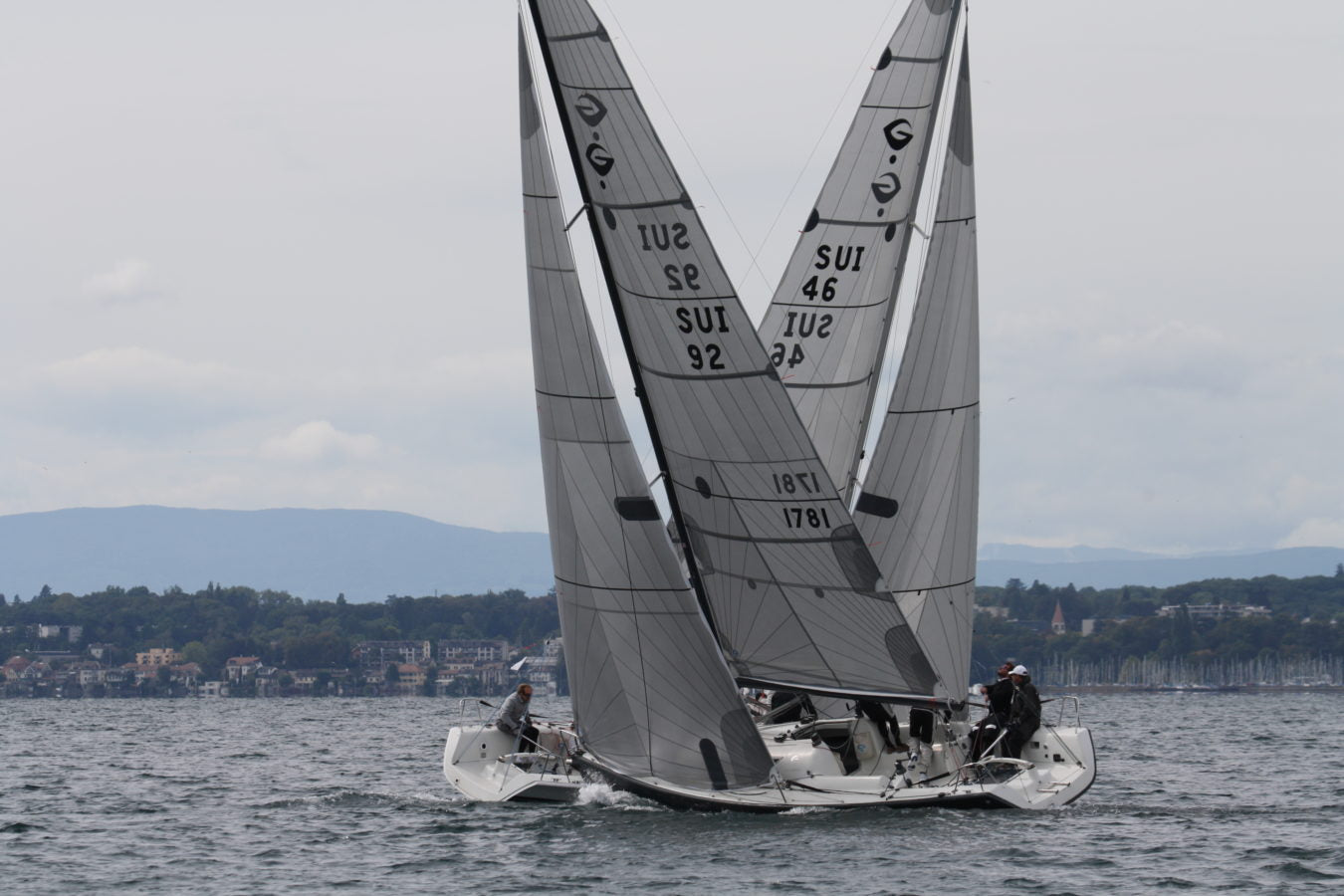
NEWS – COACHINGS PERSONNALISÉS, SUR L’EAU ET À TERRE !
COACHINGS PERSONNALISES, SUR L'EAU ET A TERRE!
Les North Experience sont de retour en 2019 ! Nous vous préparons déjà les prochaines sessions.
Que ce soit en Surprise, Grand Surprise, Luthi, Psaros, Esse ou M2, profitez d’un moment unique afin d’apprendre tous les trucs de nos navigateurs professionnels, autant lors d’une navigation qu’à terre !
Le 26 mai dans le haut-lac et le 18 août à Lausanne/Pully, des sessions d’accompagnement auront lieu pour les Esse 850. N’hésitez pas à contacter Julien Monnier pour vous inscrire.
Pour en savoir plus ou encore demander la création de votre session, prenez contact avec Julien Monnier (079 574 11 15)
Exemple de journée-type de coaching :
10h00 - 12h00 : workshop sur le réglage des voiles et du gréement / questions diverses / mise en application sur les bateaux
13h00 - 16h30 : navigation avec séquences de départ et petits parcours autour de bouées / interventions VHF et à bord
A partir de 17h00 : apéritif-débriefing...
Options de coaching :
- ACCOMPAGNEMENT A BORD ‘in situ’, module de base
Partie théorique puis mise en application avec le réglage du gréement de vos bateaux
Coaching personnalisé en navigation, prise de vues techniques
Débriefing à terre, images photos & vidéos à l'appui, questions/réponses
Happy hour North Sails
- ACCOMPAGNEMENT A BORD ‘in situ’, module de perfectionnement
Partie théorique puis mise en pratique sur l’eau
Travail spécifique sur les départs : mesure du côté favorable, plan alternatif, positionnement et lancement, assistance électronique
Travail spécifique sur les manœuvres : technique de virement & d’empannage, gestion des croisements, passage des marques de parcours, différents types d’envoi et d’affalé de spi
Autres thèmes possibles, à déterminer ensemble !
Débriefing à terre, images photos & vidéos à l’appui, questions/réponses
Happy hour North Sails
- ACCOMPAGNEMENT SPÉCIAL RÉGATE
Analyse Météo
Préparation du bateau
Encadrement de l’équipage
Analyse stratégique
Optimisation et astuces sur les réglages
Happy hour North Sails
- ACCOMPAGNEMENT THÉORIQUE à la voilerie
Sujet à la carte, à définir ensemble : entretien des voiles, réglages de voiles via North-U-Simulator, tactique et stratégie, playbook, etc
Happy hour North Sails
READ MORE
READ MORE
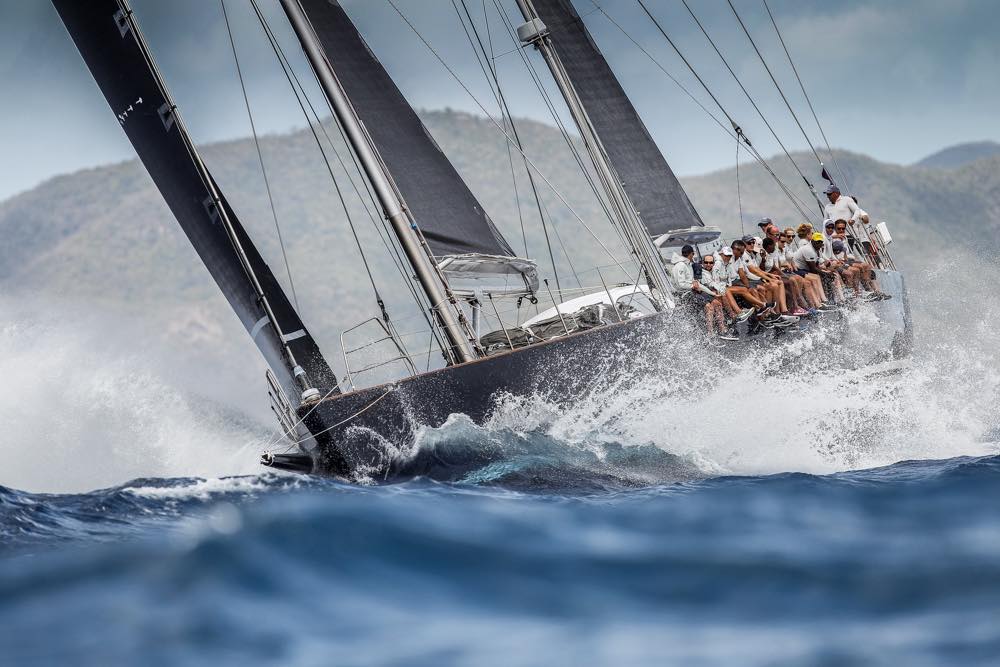
CLIENTS WIN PRESTIGIOUS AWARDS AT SAILING WEEK
CLIENTS WIN PRESTIGIOUS AWARDS AT SAILING WEEK
An Exciting Finale For The Caribbean Series In Antigua
© Paul Wyeth / ASW 2019
92-boats arrived at the scene for the 52nd edition of Antigua Sailing Week, giving sailors from all around the world a chance to race in one of the most beautiful sailing locations in the Caribbean. Bright blue waters and reliable 18-25 knot tradewinds provide pristine racing conditions for boats of all kinds, ranging from 24-115’ in length. Sailors raced on everything from small boat one designs to high-performance speed racers and elegant megayachts. Antigua offers utmost hospitality for sailors during sailing week, with social activities and fun post-racing award ceremonies allowing competitors to meet and make new connections and talk about their fun day on the water. Between the race committee officials, organizers, and onshore teams, the hospitality and event organization at Sailing Week did not disappoint this year.
North Sails clients had a solid showing at sailing week, winning prestigious awards and overall recognition. Sir Peter Harrison’s Sojana* won the honorable Lord Nelson Trophy for the third time. “ “It was a fantastic week,” commented Sir Peter. We won the trophy last year and in 2011, so this is a hat-trick win for us. Sojana* has been powering along and there hasn’t been a day when we haven’t done well. I am absolutely delighted with our team’s success.”
Sojana* won six races total, claiming the overall win for CSA and in CSA 1. Antigua Race Week concludes a successful Caribbean season for Sojana, who adopted 3Di into their inventory in 2018.
© Paul Wyeth
CSA 4 team Liquid, with owner Pamala Baldwin, won the Travellers Trophy this year for outstanding results over the course of the entire Caribbean racing series. The final test was Antigua Sailing Week, where the team showed off their talents and secured the trophy, and second overall in their division.
Pamala Baldwin’s Liquid, winners of the 2019 Travellers Trophy © Paul Wyeth
In CSA 6, Jules Mitchell’s 26-footer NSA Spirit, a dominated in class despite breaking a rudder and retirement in race six. After a quick fix, Mitchell and his all-Antigua youth team were right back at it after a quick fix. NSA Spirit won their division by six points and claimed Henley Cup Trophy for highest placing local team and first place in their division.
“This is my sixth Antigua Sailing Week and the third as skipper of NSA Spirit. It’s been awesome! Antigua served up amazing tradewinds that we capitalized on and the regatta had excellent organization. A true test of sportsmanship and big respect goes to NSA Valiant, for lending us their rudder when ours broke.”
© Paul Wyeth
In the double-handed class, client Philip Asche on American Swan 44 Freebird, won the National Parks Trophy for taking the bullet in the final race of the regatta, and winning overall in class. “We are feeling really good having won our class. It’s strong sailing down here, which we know. The boat was built for these conditions, but we are not quite as built for it as we used to be! It’s been a very good week and we have enjoyed it a lot,” said Philip.
© Ted Martin / ASW 2019
The North Sails loft in Antigua was working in overdrive throughout the week to ensure all teams were race ready. It was a lot of late nights making sure repairs were completed in time to get all sailors back on the water to take on the next day of racing.
“Everything from batten pockets to luff tapes, leech tapes to clew reinforcements,” commented loft manager Andrew Dove. “A lot of these teams have been to the loft multiple times this week with miscellaneous things that needed attention. 3Di is by far the easiest and fastest sail material to repair because it does not have delam issues. We’ve seen many laminate string sails come in each day for repairs.”
A short race day for SHK Scallywag turned into a long overnight for Andrew and his team. Just after the start of the around the island race, Scallywag got tangled upwind, hooking their backstay and part of their mainsail on a TP52. Note to self, a carbon TP52 mast is no match for any sail! The North loft was proud to share they were quick to take on the task of getting the 100’ speed-demon back out on the race course, having their repaired 3Di sail delivered at the dock first thing Monday morning.
Future Fibres pulled off some tricky logistics to get Scallywag a backstay delivered to the island in time for one final day of sailing. The team finished Antigua Sailing Week in high spirits and went out on the final day to take second place in the last race of the regatta.
Congratulations to our clients for an outstanding showing and perseverance throughout the week of windy-blue water sailing.
Scallywag on the final day, giving Sojana some fun competition. © Paul Wyeth
READ MORE
READ MORE
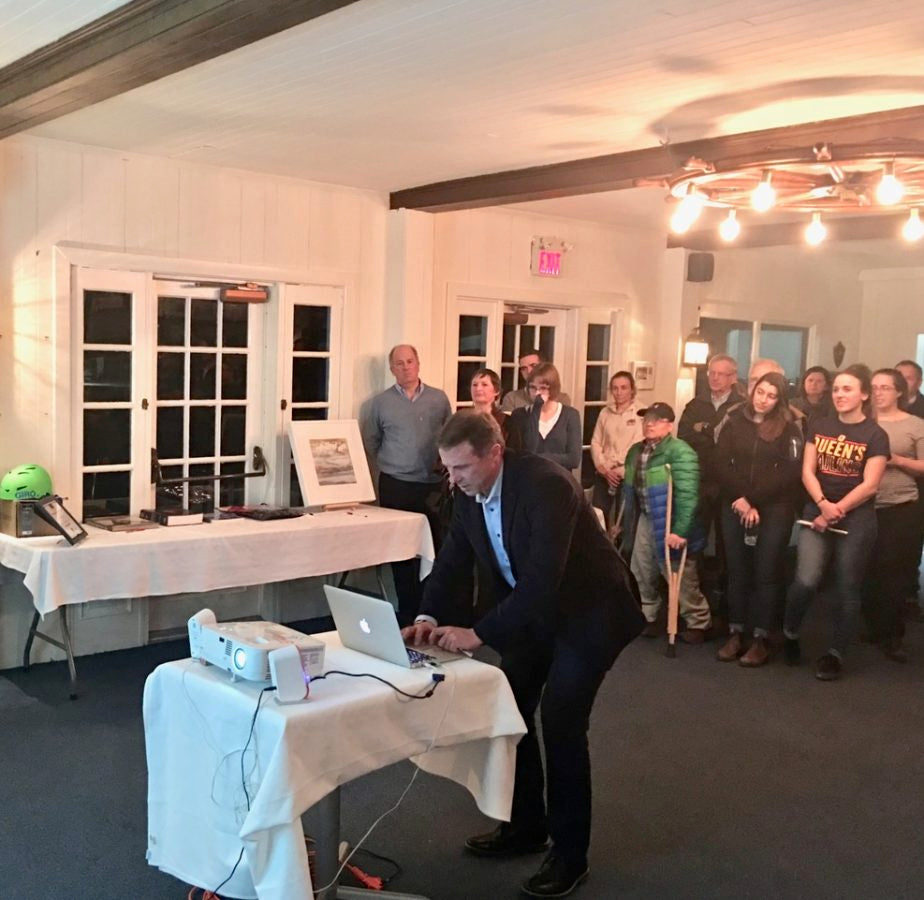
AN EVENING SUPPORTING ABLE SAILING
AN EVENING TO SUPPORT ABLE SAILING
North Sails Supports Sailors Of All Abilities
AbleSail Kingston has been operating an adapted sailing program for people with disabilities out of Kingston Yacht Club since 2002. The Able Sail Program can offer the freedom of sailing to those with even extremely limited mobility using their specially designed and adapted boats, the Martin 16 and the 2.4 Metre for single-handed sailing, and the Sonar for crews of up to six people. The boats are rigged for incredible safety and for those with limited mobility in mind, ensuring maximum stability in all weather or wind conditions. The adapted steering and sail handling controls are welcome modifications to otherwise complicated procedures for those who are unable to scramble about as they would need to in traditionally rigged sailboats.
“The only time I forget I can’t walk is when I’m dreaming or sailing.”
The AbleSail program has recently expanded to welcome those with mental disabilities as well, thanks in large part to the incredible coaches hired to run the program and the many volunteers that offer their time and assistance as well. Every year shortly after March Break, the Kingston sailing community comes together to both raise money for and renew awareness of, AbleSails' mission and programming. The event includes a highly successful silent auction, a baked goods table and more recently, has featured a sailing presentation given by special guest speakers from many different parts of the globe. Last year it was a member of winning America's Cup team from New Zealand. This year's talk was via a skype telecall with Jack Boutell, a team member of the Volvo Ocean Race winner, Dongfeng Racing. Additionally, Jack recently purchased O Canada, the well known Open 60 built by the late Derek Hatfield. Jack intends to sail in the 2020 edition of the Vendee Globe round the world single handed race. Jack regaled the crowd with vivid stories of determination, hardship, leadership and triumph in a very hard fought win. A fitting parallel for so many in the program with day to day challenges getting around on land. North Sail's motto of Going Beyond seems to be so pertinent for those who have participated in the AbleSail program as they need to go above and beyond daily. Beyond their comfort zone. Beyond their usual horizons. Beyond their reality. North Sails is proud to have been able to support AbleSail's mission through auction items.
READ MORE
READ MORE
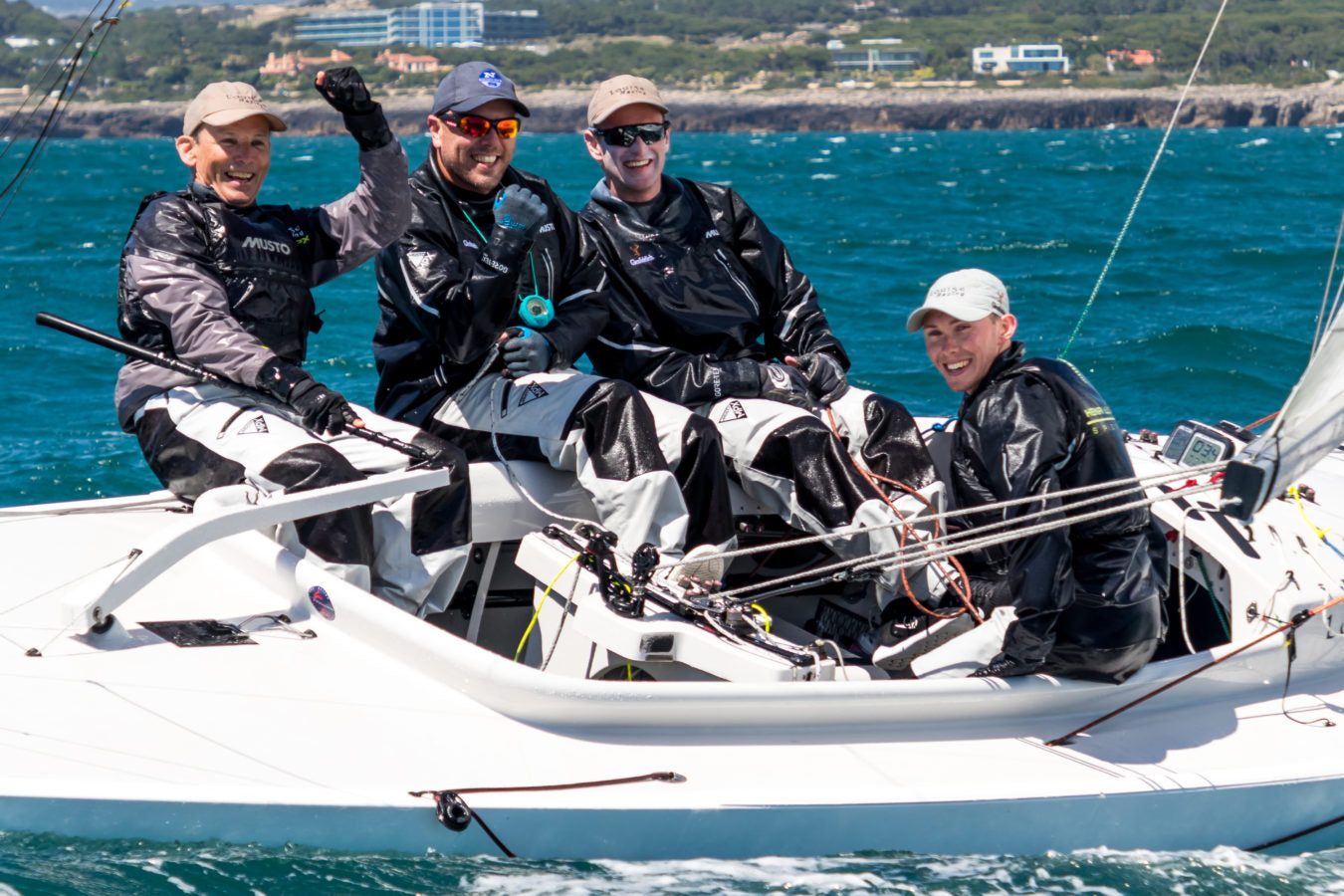
LOUISE RACING WINS KING JUAN CARLOS TROPHY
LOUISE RACING WINS KING JUAN CARLOS TROPHY
North Sails Fuels Grant Gordon To The Overall Win
📸 Luis Fráguas
The 24th King Juan Carlos Trophy was the second leg of the International Dragon European Cup Series 2019. The event saw some tight competition last weekend at Clube Naval de Cascais.
After three days of racing, every one of the top eight boats had a chance to win, meaning the trophy was all to play for going into the fourth and final day. Troika (NED 412) won the opening race with Louise Racing (GBR 820) narrowly beating Sophie Racing (SUI 311) into third. This left three boats tied for the overall lead, with a number of opposing teams dangerously close by.
However, it was Scotland’s Grant Gordon with his team on Louise Racing, and North Sails Dragon expert, Ruairidh Scott, that managed to get the most out of their boat, winning not just the final race, but the overall regatta as well.
Ruairidh Scott explains the team onboard Louise Racing had fantastic speed all week which really helped on the final day when it mattered most. Cascais is a boat speed critical venue as everyone aims for the right of the course, so being quick was important. The North sails proved very versatile in varied condition – often the race would start in 10 knots and end in 20. Our genoas have nice wide crossover so we felt comfortable even when sailing close to or out of range on each sail. Cascais is a boat speed critical venue as everyone aims for the right of the course, so being quick was important.
”Our genoas have nice wide crossover so we felt comfortable even when sailing close to or out of range on each sail. The North sails proved very versatile in varied condition – often the race would start in 10 knots and end in 20.”
Sailing with a full North Sails inventory throughout the regatta (A-7+ mainsail, V-6M and V-6H genoas, R-5 spinnaker), this result, combined with a third place in Cannes earlier this year, sees Louise Racing leading the Grade 1 circuit overall.
📸 Luis Fráguas
📸 Luis Fráguas
📸 Luis Fráguas
📸 Luis Fráguas
READ MORE
READ MORE
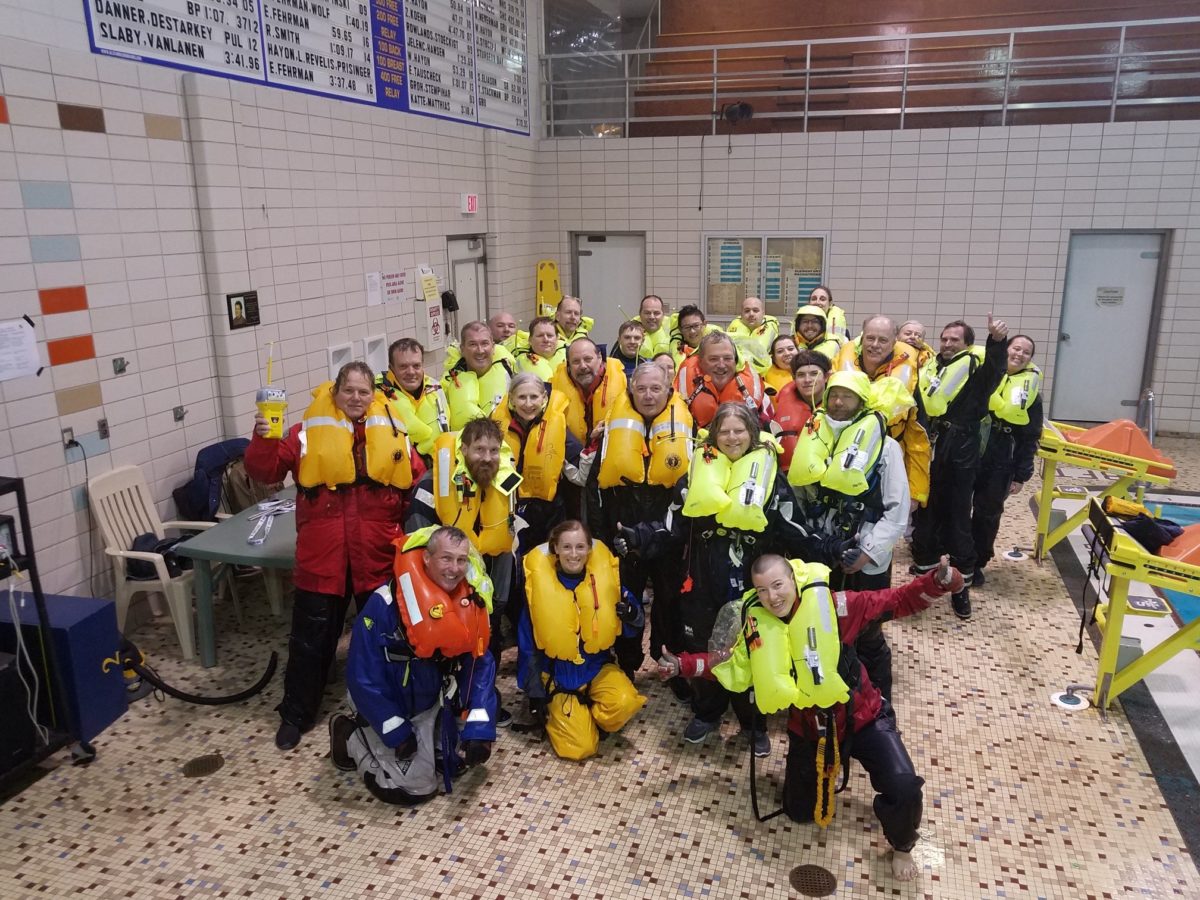
GEARING UP FOR THE 2019 RACE TO MACKINAC
GEARING UP FOR THE 2019 RACE TO MACKINAC
Tom Pease Shares Heavy Weather Tips At The Offshore Safety Sea Training
I attended and presented at the International Offshore Safety at Sea course hosted by Sailing Education Association of Sheboygan (SEAS) with instructors Brian Adams and Mike Bush last weekend. For sailors participating in the 2019 Race to Mackinac Safety at Sea is now required for 50% of every boat’s crew.
As I have in the past, I was offered the opportunity of presenting the Heavy Weather Sailing portion of the seminar. After two years in a row of fairly heavy air upwind work in the Mac I expanded the topic beyond the sails and rules to include more tips and techniques for sail trim and boat handling both upwind and downwind. A special thanks to Bill Gladstone and North U for some of the videos and animations. There’s no question that having the right sails for conditions greatly improves the boats performance and your results. I’ve found that it’s just as important in keeping the boat under control as it is in keeping the crew fresh and functional in trying conditions. When you’re sailing in 25 knots, slamming into 6 to 8-foot waves that feel like they are barely more than a boat length apart, it is most definitely trying conditions for the crew, the boat and the equipment.
We spent a full day in a classroom setting covering numerous topics of safety gear and procedures. It’s a great opportunity to become familiar with the latest technology available for us to both protect ourselves and take advantage of while either racing, cruising or day sailing. I know my shopping list was fairly extensive for both personal gear and boat gear, I suspect others had equally long wish lists. Other presenters on the first day included Whitney Kent doing the Weather module and Adam Grandlic giving us some basic Medical insight, as well as a representative of the US Coast Guard bringing us up to speed on their protocol and what we should expect should we need their assistance.
Day two is optional for the Race to Mackinac but was a great opportunity to get into the pool in full gear, test out our PFD’s and climb into a life raft. It was a challenge in the pool with relatively warm water and a controlled environment; I definitely don’t want to ever experience a real life in the water event of myself or a crew mate. Bottom line, respect the elements, respect your equipment and respect the reality that bad things can happen when you’re in the heat of the moment.
It's always great to get together with a bunch of sailors to talk about sails, boats and equipment. Now I’m even more anxious for the season to start and get back out on the water.
READ MORE
READ MORE
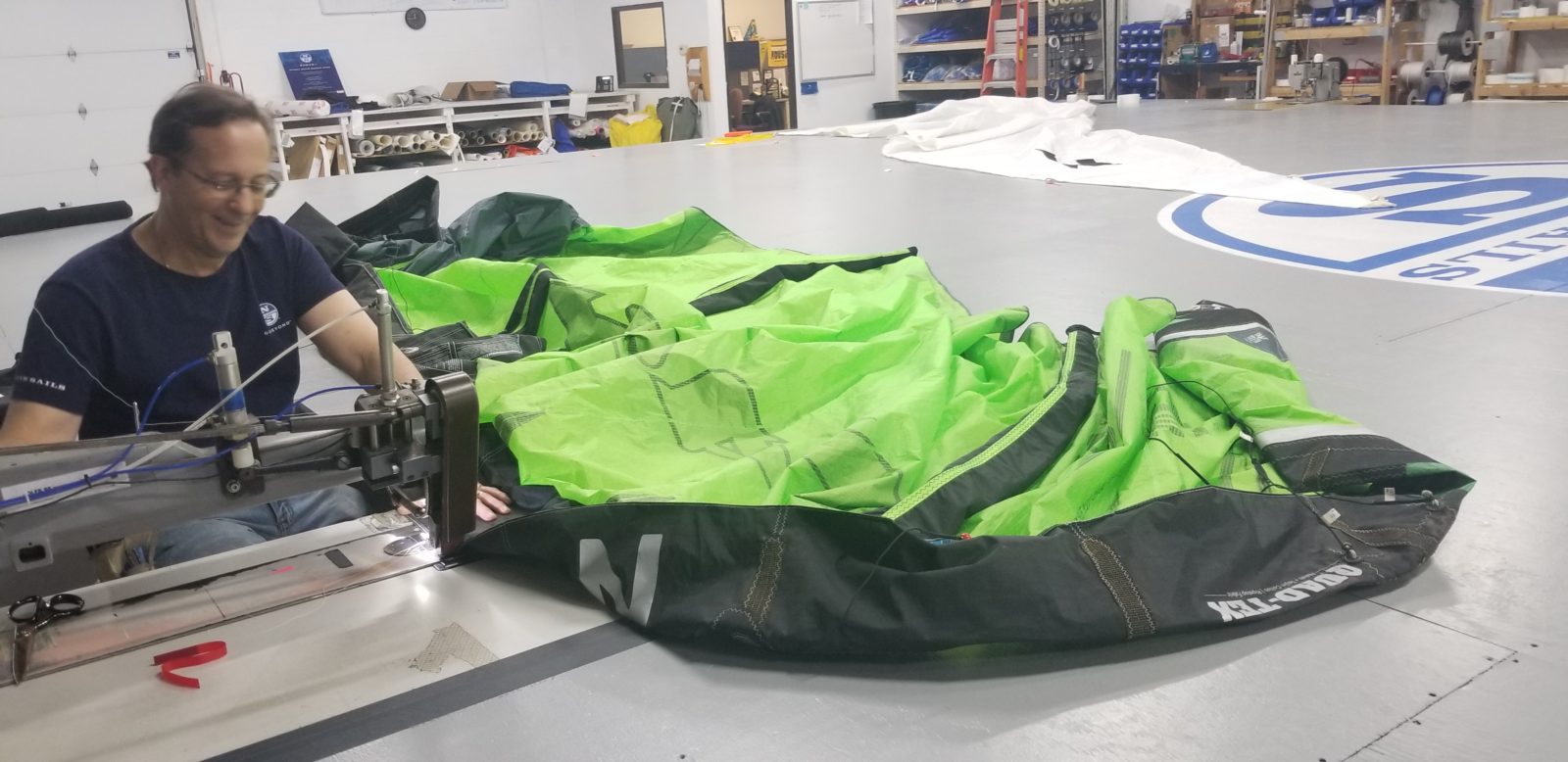
NOTHING BEATS 40 YEARS OF SAILMAKING EXPERIENCE
NOTHING BEATS 40 YEARS OF SAILMAKING EXPERIENCE
Bill Lesnek Reputation For Exceptional Work In Sail and Kite Repairs Has Led To His Cult-Like Following For Service Work
Brian Lefeve has worked with Bill Lesnek over the years in the world of kiteboarding repairs and sailmaking, leading to a friendship filled with fond memories and priceless learning moments. He shares what makes Bill the go to guy for kiteboarding repairs and advice.
Tell Us About Your Journey To Where You Are Today and Great Lakes Surf.
Well when I was 10 years old, my parents drove us to California and I tried surfing for the first time and got hooked. When we got back home I was really ... I didn't know about surfing in Michigan, so I got into wind surfing when I was 11. Wind surfing just became addicted and started teaching wind surfing when I worked for a company called The Wind Surf Company, Keego Harbors. I managed that shop for many years. I taught wind surfing and then in 80, or 98-99, that's when kiting came out and they sent us a kite, we tried it out and we got hooked. I was teaching myself how to kite and then a lot of other people wanted to learn and I pretty much started a school out of that. Out of the necessity of people wanting to try the sport. it just evolved into that and then it got really busy and I started camps and then I rent some space from within North Sails; when we had kite repairs I'd have Billy do the repairs and he did phenomenal job.
I would help prep him a little bit, and then he'd just do the sewing. Then after awhile I had more and more people coming in for repairs and we just gave them to Billy. It was great as that. I mean it worked so well because of course the ripstop materials are all the same, the sewing, everything. It was just such an ideal situation to be in that loft at the start up of kiting because people were learning and ripping their kites.
What Keeps You Coming Back To North Sails?
The quality of the work. Billy does an amazing job and there's a couple other places that you can send your kite out to, which is called Air Time. They have a facility in Florida and then another one in California, but the expensive of shipping it out. They do a good job, but if you have somebody local that can do just as good a job, if not that better, it makes more sense to keep everything local.
What's Your Favourite Aspect Of Working With Billy?
I guess, just the relationship we had. Bill's a really easy going guy, so he's very friendly. It was easy to work in the same facility as him. Now I didn't work for North, I just rented the space from them of course, but just the fact that we could joke around and have fun. At the same time though, he taught me a lot too. Just about the ripstop and the materials and how he does his work too. It was easier for me to really help sell him as a repair guy because I saw his work and he taught me a good portion of it. He showed me how to prep tights in the beginning when he was really busy so I could prep them, he could sew them. Just the fact that he was a great teacher too and mentor.
The best thing is the turnaround time is so fast. That's another thing because if you send your kite out, you're looking at a week and a half to two weeks sometimes. I just try to ensure people, "Hey man, that's why I send everyone to Billy and Mike. You want to get it done, get it done quick and get it done right, that's where you go."
Learn more about the Detroit team & their experience!
READ MORE
READ MORE
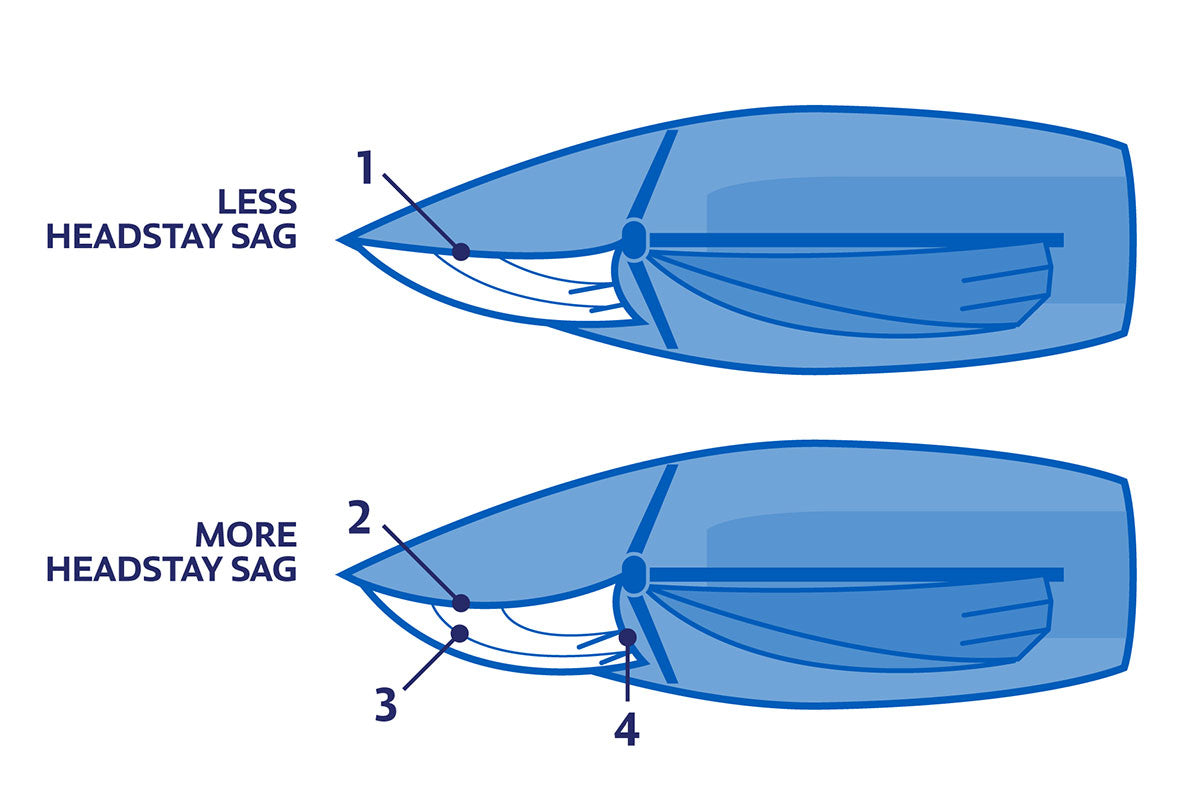
J/70 LIGHT AIR HEADSTAY SAG & JIB TRIM
J/70 LIGHT-AIR HEADSTAY SAG & JIB TRIM
What do we look for in headstay sag to optimize jib trim for a variety of light-air conditions? One Design expert Tim Healy explains.
1. The boat at top has a tighter headstay, which gives the jib a finer entry, less power and less drag. 2) The boat below has a sagged headstay, which gives the jib more depth and power. 3) Watch for a “knuckle” in the front of the sail if the headstay sags too much, which can make it hard to point. 4) The jib leech is tighter on this boat; too much headstay sag will close the slot between jib and main.
A couple of years ago, I sailed the Bayview One Design Regatta (BOD) in Detroit with Skip Dieball, the Etchells World champion that year. Skip knows a thing or two about making sailboats go fast and it was fun to interact with him and get his input and feedback on the J/70. I wrote an earlier version of this article after that regatta, and then reread the story last summer while we were preparing for the J/70 Worlds in Marblehead. The Worlds turned out to be windy, but we sailed two light-air regattas in Newport, RI, beforehand, and this reinforced and refined some of my ideas. I hope some of these notes can help you understand your J/70 setup better and help you go faster.
The regatta conditions that year in Detroit were largely light with occasional moderate chop, so rig tension, headstay sag, and jib trim were especially important factors in setting up the boat. Skip and I regularly discussed the synergy between these three variables to answer the question what should we look for in headstay sag on the J/70 to optimize jib trim through a variety of conditions? Afterwards, I gathered my thoughts on how one affects the other and how to tune and trim for maximum performance with a focus on light air, and I have augmented those with insights gained during 2018 summer racing.
How J/70 headstay sag improves pointing:
The shrouds should be tensioned so that we have 2-4 inches of headstay sag at the mid-stripe of the jib and 1/2 to 3/4 inch of mid-mast side sag. The basic idea is that headstay sag adds depth to the jib.
Adequate headstay sag in light to moderate wind reduces the need for weather sheeting the jib. Sagging the headstay powers up the middle of sail, but fine tuning the lower section is important. Tension the weather sheet so that the clew is just above the edge of the cabinhouse to 2” off the cabinhouse. In flat water, you can trim 1” inside the cabin house edge, maximum.
The mast side sag is an indicator that the mast is free to move/flex with little restriction by the lowers. This will allow the mast to be more flexible and dynamic in light air and increase headstay sag.
The middle of the jib luff sags not only aft but also to leeward, which changes your angle of attack to the wind.
At the same time, the mid-leech “rotates” slightly to weather, reducing the need for windward sheeting referred to above.
The net result of the headstay sag is that the boat can point higher. So how do we get there consistently?
Light Air & Flat Water
In light air and flat water, it is important to create the power in the sail plan that the J/70 wants, while keeping flow across the sails. In lighter conditions and flat water, the jib needs depth for added power and sagging the headstay is the easiest and most direct method to create depth in the jib.
When the headstay sags, it not only sags to leeward but also sags aft, towards the jib tracks, which puts the luff closer to the leech, thereby adding depth to the jib. What we find is at the middle section of the jib, when it is sagging 4-6″, the luff of the jib is actually falling off to leeward slightly and the leech, by default, “rotates” to windward just a bit. This creates a scenario where the middle of the jib luff has a better angle of attack to the wind and, because of this better angle of attack, you will be able to point slightly higher without luffing or losing flow over the front of the jib.
In this scenario, when the mid -leech “rotates” to windward, the effect reduces the need to windward sheet as aggressively because the leech has, effectively, moved inboard already because of the sag.
When you have this setup correctly, it is still important to make sure the jib leech tell tales are flowing 90%-100% of the time so that the airflow stays attached to the jib, and the sailplan does not have any “breaks” or “stalls” in the airflow. That said, it is OK (and actually encouraged) to test to make certain you are at maximum trim by sheeting in periodically until you see the jib leech telltales stall slightly, then ease out till they are full streaming. This is your jib sheet trim range which may be as little as 1” of sheet.
It is important to stay on top of your rig tensions in these conditions and find the settings that work best for your rig and driving style. In general, rig tensions that are loose enough to create 4″ of sag are good for light air and flat water. As you can see in the tuning guide, the “base” setting is 16/10 minus 2 turns on the lowers for 10 knots so when the breeze is quite light (0-6 knots), I will loosen 1-2 turns on the uppers and between 1-2 turns on the lowers. This gets my uppers closer to 14 and the lowers are very loose (they do not register on the gauge). The mast side sag at the spreaders should be about a 1/2 inch when the lowers are loose enough. This side sag is also a signal that the mast is free to bend forward as well as off to the side. This forward bend is good in light air to create a flatter main that can be sheeted tighter without stalling the leech. This will also help pointing ability.
Light Air & Choppy Water
When chop is introduced into the picture, a loose rig is still good, but you may find that the rig will pump too much in heavy chop. This is normal, but in order to temporarily stabilize the rig, pull on enough backstay to take the deflection out of the backstay flicker at the top of the mast and put a small amount of tension to pull back on the mast. This should minimize the pumping of the rig and headstay and keep a more consistent sail shape through the chop. As soon as the patch of chop is over, release the backstay to get slightly more sag back in the headstay.
Final Thoughts
The J/70 is one of the few boats where weather sheeting is effective, but it has to be done with an eye on the headstay sag. With a saggy headstay, you will tend to use less weather sheet. With a tight headstay, in general, you can use more weather sheet. Keep in mind that the angle of attack and leech position will change with the headstay sag, and adjust your weather sheet accordingly.
These are tips that can make a big difference in light air speed. Feel free to contact Tim Healy or any member of the North Sails One Design Team if you have other questions on how to make your J/70 boat GO BEYOND.
For more on this subject, read “Why is Headstay Sag Fast Upwind?”
For more on the J/70, read “J/70 Speed Guide.”
READ MORE
READ MORE
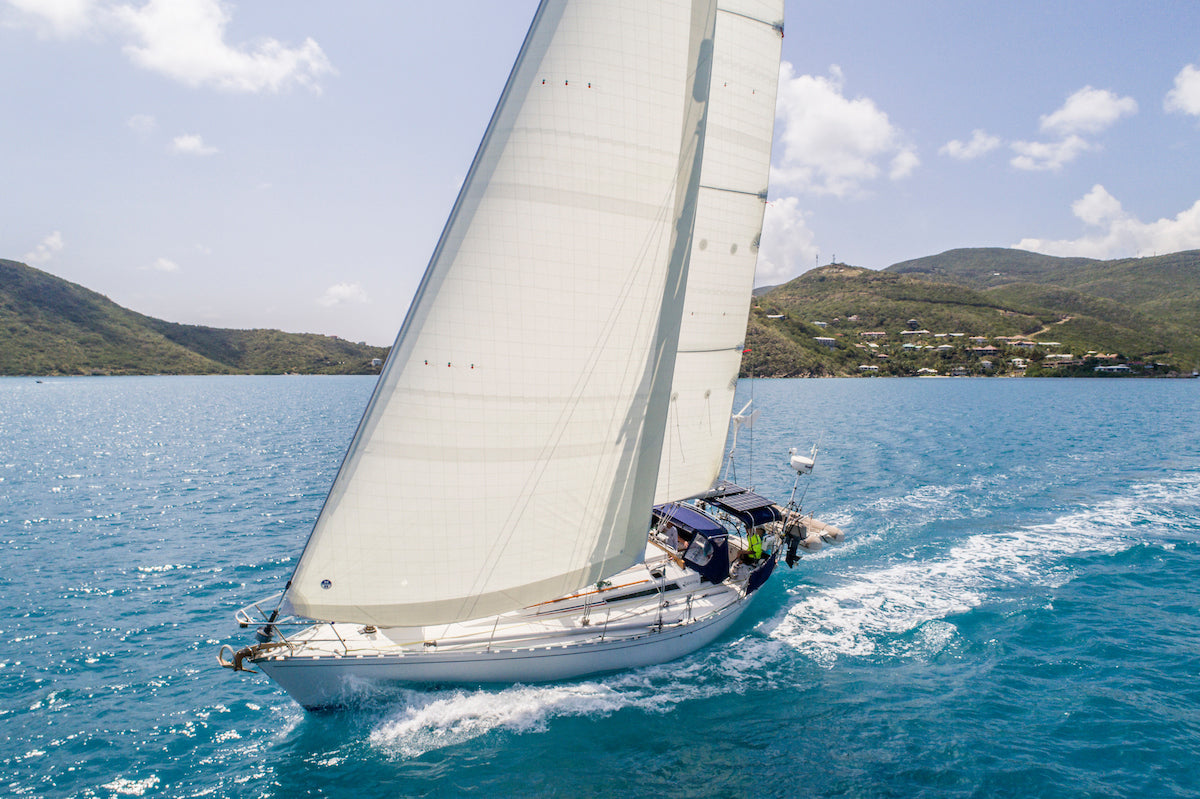
CRUISING SAIL PERFORMANCE - 3Di NORDAC
CRUISING PERFORMANCE: 3Di NORDAC Q&A
What To Know About This Innovative Cruising Sail
Q: How is 3Di NORDAC different than my old cross-cut dacron sails?
A: 3Di NORDAC transforms the same trusted polyester materials of a traditional dacron cruising sail into a unified composite structure. Instead of seaming and stitching together panels of woven sailcloth, 3Di NORDAC sails are molded into a one-piece seamless sail. Like woven polyester, 3Di NORDAC sails are durable – but have better shape holding and shape longevity. If you like sailing your boat sail to its full potential, you will love 3Di NORDAC.
Q: I don’t understand how you “Mold” a sail? What’s the deal?
A: Your sail is built in its three-dimensional flying shape. All of the component materials are laid up and then fused on a full-size “mold” custom-shaped to your sail design. This process is different than cutting panels of sailcloth with curved edges and sewing them together, which is how traditional cruising sails are made.
Q: Why is a Molded sail better than a paneled sail?
A: All of the material is assembled in a precise 3D form, which means the sail will have a smoother sail shape. Also, a molded 3Di sail is better at resisting stretch and distortion because all the filaments are aligned with both strain and compressive loads. All of these materials are laid up in a multi-axis array and variable density. In panel cloth, you only have two directions that the fiber can be aligned. With 3D molded sails, there is an infinite number of alignments available to achieve the perfect shape and strength for the intended use. By better utilizing materials properties, 3Di NORDAC sails will go farther and faster.
Q: 3Di seems cool, but how do you know it will be right for cruising sails?
A: 3Di technology has sailed millions of miles over the past ten years, and over 3000 3Di NORDAC sails are in use around the world in the harshest sailing environments. We spent over two years developing 3Di NORDAC, using a scientific approach that enables predictable results. We stand behind our products and guarantee you will have great durability and great performance.
Q: I have heard Cruising Laminates don’t last long. Will 3Di NORDAC delaminate?
A: No. One of the key attributes of 3Di construction is that it is not a laminate and there is no mylar film. 3Di NORDAC is made much like a fiberglass sailboat, with a solid core of fused polyester. These spread filament tapes are bonded with thermoset polyester resin into a single structure that is heat, humidity, and UV resistant.
Q: What is the square pattern on 3Di NORDAC sails? Are these seams?
A: No, they are not seams. The outer layer of 3Di NORDAC is a special protective surface of spread filament polyester tapes. This layer resists damage from UV, chafe, abrasion, and flex. One side is oriented vertically, the other horizontally, creating the cross pattern. We think it looks cool, too.
Q: How can I trust North Sails to build a great cruising sail? Aren’t you guys are all about racing and superyacht sails?
A: It may surprise you to learn North Sails has also been the world’s largest cruising sailmaker for many decades. While we occasionally brag about our racing success, many of our North Sails team grew up cruising just like you. We like to cruise and we know how to make great cruising sails. Also, one of the benefits of building sails for around-the-world racers and superyachts is that lessons we learn about durability are directly transferred to ALL of our cruising sails.
Q: If 3Di NORDAC is such a great sail, how can North Sails offer them at affordable prices?
A: A few reasons. 3Di NORDAC is a smarter way to build sails. From a manufacturing perspective, it is like a “farm to table” approach. The materials are made into a complete sail within a single North Sails factory, with less processing. Woven polyester undergoes many manufacturing steps in a long supply chain and passes through different factories to become finished sailcloth. There are numerous embedded process and transport costs in woven dacron sailcloth. Since we are using the same base polyester fiber and making a sail in fewer steps, we can offer an affordable price and exceptional value. Also, we want to spread the word about what good cruising sail performance means. Get in touch today and Request A Quote.
Q: I love my new 3Di NORDAC sail. What should I do at the end of the season?
A: 3Di NORDAC sails require minimal maintenance, but it is always a good idea to take them into our service sites for an annual checkup. We will make sure there are no wear points, and repair any minor damage that may occur. Every 3Di NORDAC sail comes with 1-year free sail care, so bring it in at the end of the season.
READ MORE
READ MORE
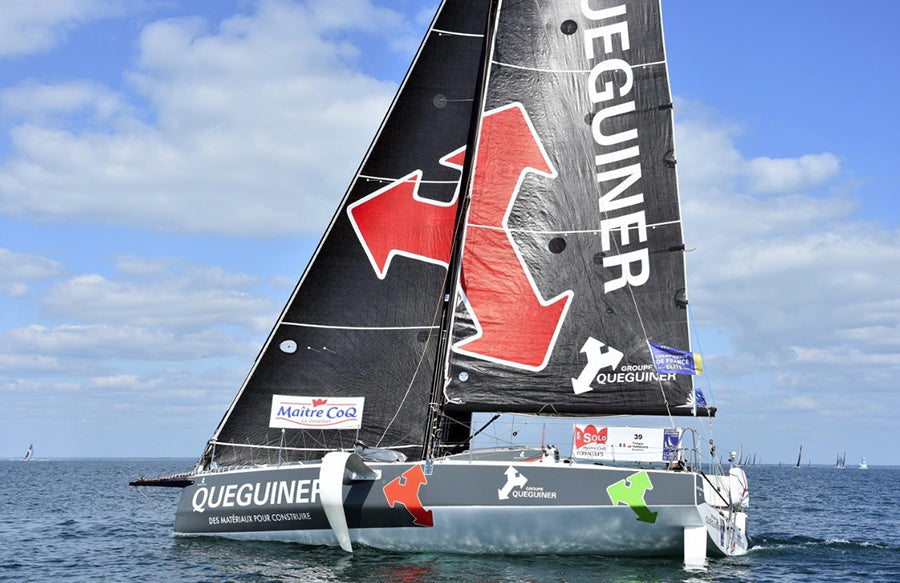
ET DE TROIS SUR LE FIGARO 3
ET DE TROIS SUR LE FIGARO 3
North Sails aux premières loges
Solo Maître Coq 2019 📸 B. Gergaud
47 navigants en lice, une jolie palette de marins chevronnés et 3 premières places au podium pour les coureurs North Sails (même palmarès que sur l’épreuve précédente durant la Sardinha Cup). La 16e édition de la Solo Maître Coq s’est achevée samedi 2 mai après de belles batailles et de riches rebondissements entre différents leaders. Les conditions étaient variées sur cette première épreuve en solitaire du circuit Figaro Beneteau qui a mené les concurrents de l’île de Ré à Belle-Ile en passant par le plateau de Rochebonne et la bouée Houlographe, dans l’ouest d’Oléron.
Après deux jours de courses côtières et une grande course au large de 340 milles, c’est finalement Xavier Macaire sur SNEF qui l’emporte au classement général. Tanguy Le Turquais (Quéguiner) prend la deuxième place et Morgan Lagravière (Avec vous sur la Solitaire) termine troisième. Ces 3 bateaux Figaro 3 sont tous dotés de voiles North Sails. Le prochain rendez-vous sera la Solo Concarneau qui se déroulera du 10 au 15 mai 2019, dernière opportunité de se distinguer avant le coup d’envoi de l’épreuve reine de la saison, la Solitaire Urgo - Le Figaro qui aura lieu le 2 juin 2019. Affaire à suivre…
READ MORE
READ MORE
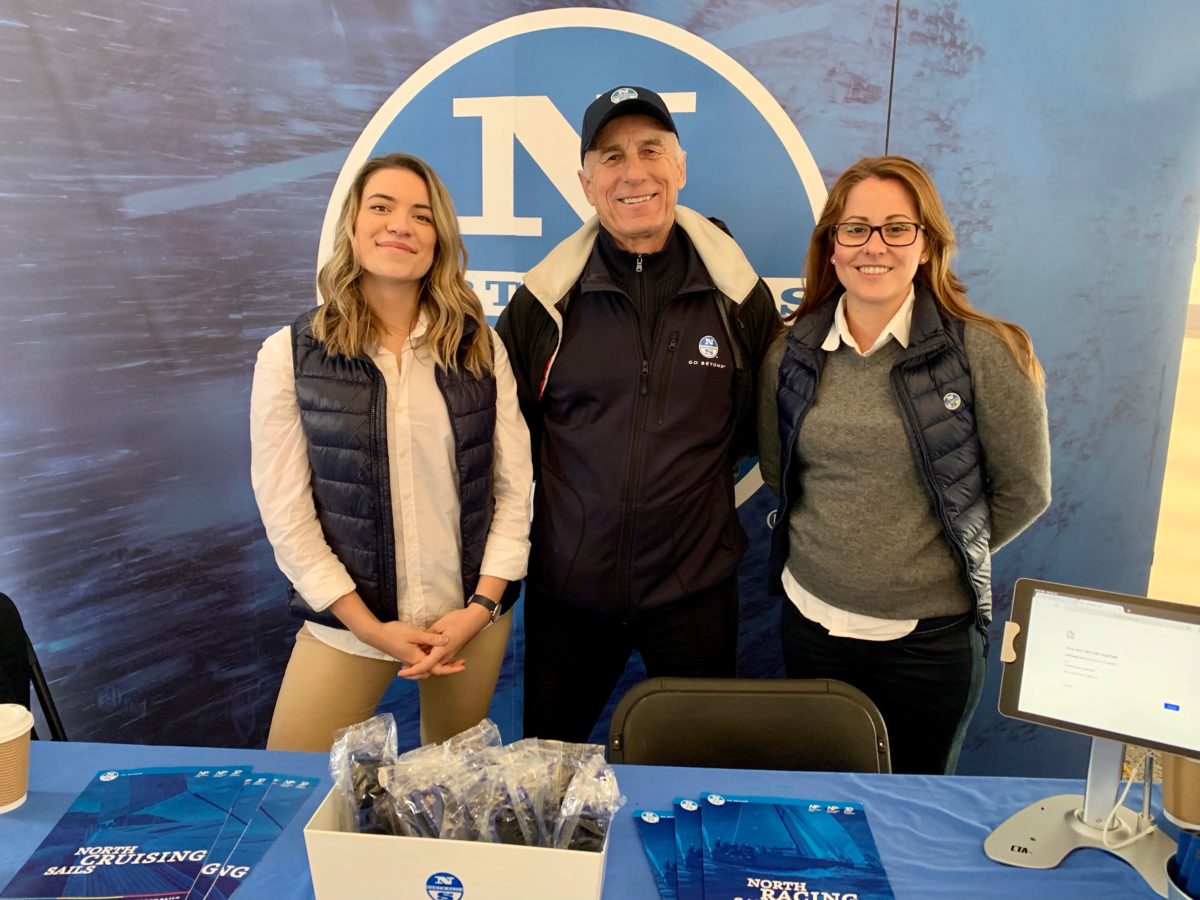
GROWING STRONG AT EXPO VOILE
GROWING STRONG AT EXPO VOILE
North Sails Toronto Joins Marina Gosselin
A weekend of cold temperatures, rain and FUN at Marina Gosselin with North Sails Toronto. Louisa and Kyann joined local North Sails rep Miro Balcar for the annual Expo Voile in Quebec to connect with sailor and celebrate the season ahead. Located an hour south of Montreal, Marina Gosselin is a sailing hub for local sailors who have a passion for sailing and quality time on their boats with loved ones and friends. North Sails Toronto's Louisa Sonosky commented; "Connecting face to face with our Quebec customers is always a joy! Their enthusiasm for cruising, their boats and passion for sailing is infectious - you can't help but get excited about sailing when you're with them." It was fantastic to see so many new and familiar faces and discuss new sail options with customers, especially 3Di technology. With cruising as the primary focus for sailors, 3Di NORDAC was a hot topic amongst the team, as well as 3Di Raw and 3Di Endurance for those who interested in sailing south with their boats. Those with their sails in hand are waiting for mother nature to cooperate so they can go sailing! Long time customer Marc Deslauriers, owner of a Beneteau First 38, can't wait to get out to try his new NPL Tour Xi Furling Genoa and Tour Xi Full Batten Mainsail this summer. 3Di NORDAC owner Jean-Sebastien was also sharing the same sentiments.
"Connecting face to face with our Quebec customers is always a joy! Their enthusiasm for cruising, their boats and passion for sailing is infectious - you can't help but get excited about sailing when you're with them."
The team was also able to deliver the Solo Valcour flags (below) for the upcoming 2019 race, started by Miro Balcar years ago to help promote single handed distance cruising in the area. North Sails Toronto is proud to keep their sponsorship of the event going with the custom flags for the event; a staple in the local community.
READ MORE
READ MORE
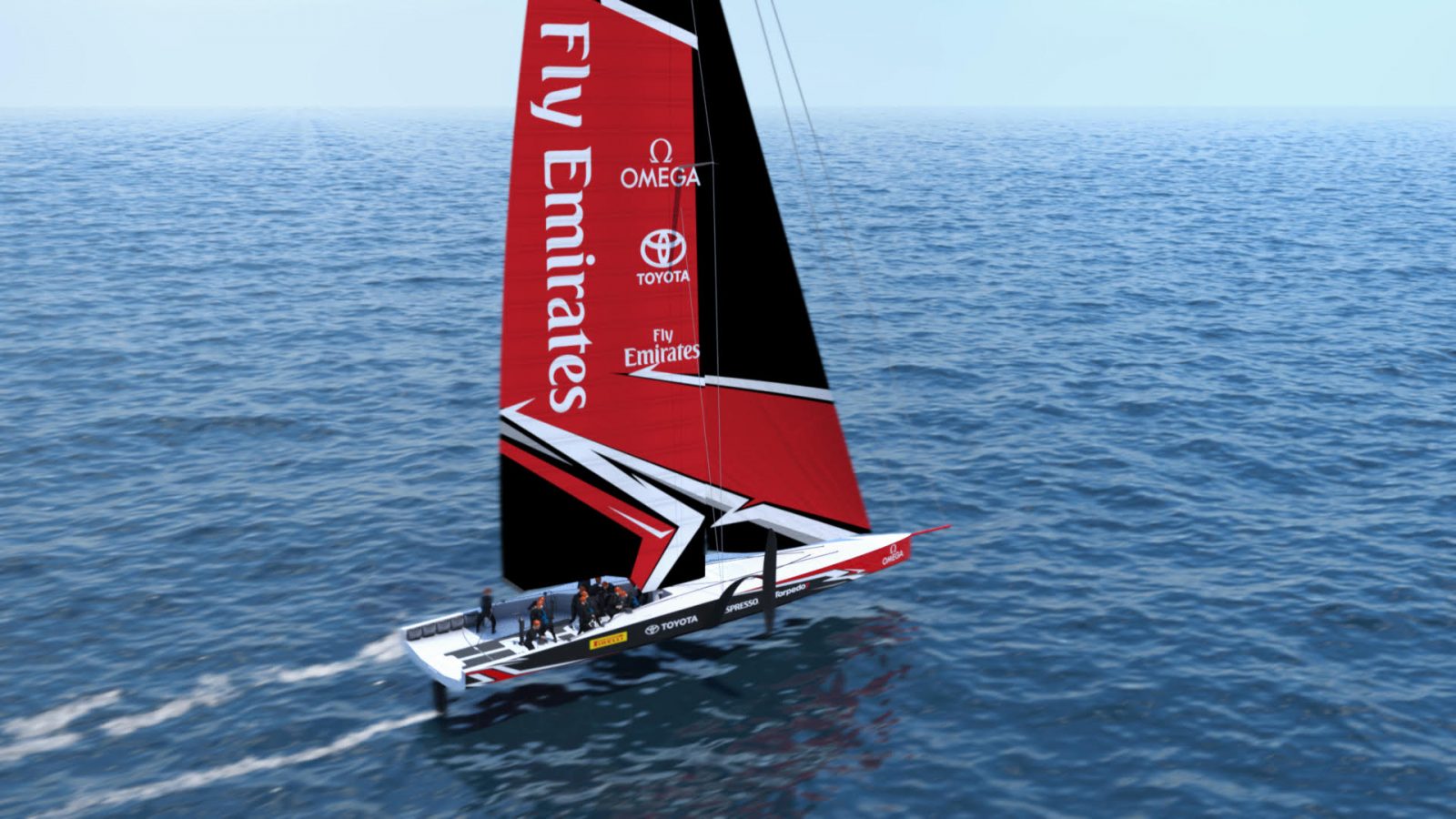
BRINGING POWERFUL TOOLS AND EXPERIENCE TO THE 36TH AMERICA'S CUP
BRINGING POWERFUL TOOLS AND UNPARALLELED EXPERIENCE TO THE 36th AMERICA’S CUP
North Technology Group Companies Deliver an Engine above the Deck
The year 2019 will be a historic one for the America’s Cup, the competition for the oldest trophy in international sport, and the North Technology Group, with a particular focus on North Sails, Southern Spars and Future Fibres, will play an integral role.
Later this year, teams are scheduled to launch their first AC75 race boats, incredible foiling monohulls capable of reaching speeds around the track that have never been seen before in the America’s Cup – or anywhere else in a sailing competition, for that matter.
Providing the power to push these boats into the red zone – speeds are expected to be approaching 50 knots by the time racing starts in the America’s Cup in 2021 – is a revolutionary rig and sail design, the result of years of investment in engineering and research and design. North Sail Designer Gautier Sergent commented;
“Emirates Team New Zealand came to North Sails right after they won the America’s Cup in Bermuda. The Kiwis recognized we were the only ones advanced far enough down the track to accurately model a new concept like this.”
While the last two editions of the America’s Cup utilized a rigid wing sail, the logistical challenge of handling the rigid wing is prohibitive in larger boats, where cranes and a shore crew is needed before and after sailing to handle the wing operation.
So the 2021 America’s Cup will use a more traditional style mast with a twin skin sail that can be raised and lowered by the sailors at sea, more like a traditional sloop. Importantly, due to the ease in logistics and cost, this allows for a trickle-down effect of the technology to everyday sailors.
The performance goal is to be as close to as aerodynamically efficient as the rigid wing of the past while keeping the power consumption on board at a reasonable level and ensuring the loads on the rig and through the control systems are manageable.
This is far from an easy problem to solve, so best-in-class software modeling and design experience are critical to coming up with a winning design.
To date, North Sails has been selected as the supplier of choice by the majority of teams currently training for the 36th America’s Cup. This is no coincidence – North Sails has supplied every challenger and defender in the famed competition since 1988.
“North Sails has taken a leading role in the America’s Cup because the company has always strived to be the technological leader,” said company President and former America’s Cup skipper Ken Read.
“We have a huge depth of talent within our company and some very smart people that are world-leading in what they do. The America’s Cup is an event that continues to challenge even the greatest of minds and forces us all to look at things in new ways – the next cycle will be no different and we are really excited that North Sails will be right at the cutting edge.”
For the upcoming 36th America’s Cup, North Sails, Southern Spars and Future Fibres are combining their talents and know-how to provide the ‘Engine Above Deck’, which will produce the power to generate speeds that lift the AC75 monohull up out of the water and onto hydrofoils, which greatly reduces drag in the water and dramatically increases the speed of the boat.
“Southern Spars and North Sails have developed software tools together for a long time and it’s a very powerful asset for us. If you looked back and compared it to how we worked even 10 or 15 years ago, it’s been a massive evolution.”
But the three companies are acting as more than just suppliers to the teams. In fact, their engineers and designers helped the defending champion, Emirates Team New Zealand, and Challenger of Record, Luna Rossa, by contributing expertise to the design rule for the AC75. And now, several North Sails designers are integrated into the America’s Cup design teams.
“Emirates Team New Zealand came to North Sails right after they won the America’s Cup in Bermuda in June 2017 to use our software tools to help model the new AC75 concept to determine things like the rig size and how the twin skin system could work, for example. The Kiwis recognized we were the only ones advanced far enough down the track with not just the software tools, but the right people as well, to accurately model a new concept like this,” said North Sails designer Gautier Sergent.
“We worked on the aero package for the rule for about eight months, so a lot of the development for the tools that we use in the North Design Suite was done prior to the AC75 design rule being released.”
From that advanced but generic starting point, the North Sails designers who have since become integrated into different America’s Cup teams now work independently of the mothership, putting all of their efforts into designing the fastest package for their team.
Sergent, for example, is a member of the INEOS Team UK, the British challenger, working as the lead on Sail Design and Aerodynamics.
“The development we do from now on is proprietary to each team, so when we have the team hat on, we are still designers for North Sails, but we are competing with each other. There are no friends until after the last race!”
It’s a similar story at Southern Spars and Future Fibres where years of expertise and experience were drafted in to help with the design rule.
“We started off by building some smaller rigs to test the twin skin concept, which worked out pretty well and then we got into developing the rig for the boat. That’s a process that’s gone on for the better part of a year,” said Mark Hauser from Southern Spars.
“We’ve had a long-term relationship with Emirates Team New Zealand that is probably second to none, so it’s a natural evolution for us to step in and contribute.”
And just as with North Sails, there are Southern Spars designers and engineers embedded with the teams. Jarrad Wallace is a design engineer who has moved across to join the rig programme with INEOS Team UK.
“The rig on the AC75 is doing more than just holding the sails up,” Wallace says. “It’s actually part of the wing, so the interface is extremely important, especially with the control systems. The key difference is being able to control the head position of the sail, which is quite revolutionary in terms of soft sails, and that has a massive effect on the loadings on the rig. So our software lets us model that and then we can use that information to engineer the mast to do its job.”
“Southern Spars and North Sails have developed software tools together for a long time and it’s a very powerful asset for us. We’ve had to take that a step further for these rigs to improve the way we model this aero package and I don’t think anyone else in the world could do that at this level,” Hauser added.
“The level of detail in how we interact with North Sails over the years has increased dramatically,” Wallace explains. “It’s at the point now where we are sharing a common model, each having input in our own areas of expertise, and we make iterations in the software during the design phase so that by the time we go to build, we’re already at a very advanced level of refinement. If you looked back and compared it to how we worked even 10 or 15 years ago, it’s been a massive evolution.”
Burns Fallow is a North Sails design expert who is embedded with Emirates Team New Zealand for this Cup cycle.
Testing the soft wing concept sail in Auckland 📸 Emirates Team New Zealand
“I’ve been here for a year now, and we spent the first six months or so working on this new rig project with Southern Spars, Emirates Team New Zealand and Luna Rossa” Fallow said. “The question we were trying to answer was, what can we do that isn’t a wing but that has as many of the characteristics of a wing that we’ve had in the last two America’s Cups? One of the key things that North Technology Group could bring to the table was that we were really the only people who could bring any simulation software and adapt it quickly so it could be a tool to evaluate our ideas to see what would work practically.”
Here, it was the North Sails Membrain™ software, which balances wind pressure, sail shape, and rig forces, within the design suite. Fallow worked with fellow North senior design expert Michael Richelsen to simulate how the twin-skin wing might work at the scale needed for the AC75.
“I briefed Michael on what we were trying to achieve and after some intense software development, we had a working version of Membrain that helped us answer those big questions within weeks,” Fallow said. “Since that time we have been adding more and more features to make even more refined models. Overall, this is one the most exciting and progressive projects I have been involved with in my 30 years at North Sails.”
Membrain uses data from the wider suite of North design software to simulate what happens to the rig/sail combination as a unified structure when it is subjected to different loads. As the structure is deformed under load, the shape of the sail changes and Membrain pushes the data back through the other North software programs, most notably Flow™ (which applies wind pressure to sail surface and calculates the forces created), to acquire updated pressure field data. The process revises the sail shape in Membrain in a circular feedback loop until a stable balance is achieved.
“The question we were trying to answer was, what can we do that isn’t a wing but that has as many of the characteristics of a wing that we’ve had in the last two America’s Cups?
Since the AC75 design rule was published, Richelson has joined Luna Rossa Challenge, while Fallow has bunkered down with Emirates Team New Zealand, where he works with the Aero Design team. But he says the project isn’t simply a case of looking at what happens above the deck. All the systems, from the rig to the soft wing sail and its control system, to the foils under the water need to be designed to work in harmony.
“What’s critical to any America’s Cup design team now is the VPP (Velocity Prediction Program) and simulation modeling,” he notes. “We need to be sure that the input we provide into that model, which is about half the equation – the aero side as opposed to the hydro side – is as accurate and realistic and versatile as it can possibly be. That alone involves hundreds and hundreds of simulations to build up a realistic model.
“One thing that has changed over the past 10-12 years or so is that in the past, developments needed to be verified with two-boat testing on the water. That gets hugely expensive in terms of time and people. But with the software becoming so much more sophisticated, the developments we make in the virtual world are now accepted as being ‘real’ and so the concept of two-boat testing is essentially over. So the development cycle is much, much quicker now.”
For all of the designers and engineers in this America’s Cup, the work won’t stop until the final race of the event is over. The quest for speed continues all the way across the finish line in the last race.
“The cool thing about the whole process is that it’s not just a tool for designers, it’s ultimately for the benefit of the sailing team as well. Remember the concept for the AC75 is only about a year old and looking back, what we had then was pretty rudimentary. When the first boats launch this summer we’ll get some real world validation and that will help us figure out where we were right and where we can improve in our simulation and the net result is that it will continue to get better,” Fallow concluded.
And when the 36th America’s Cup is over in 2021 the designers and engineers from the North Technology Group will get together for a debrief to advance the tools that help the companies design sails and rigs for dozens and dozens of classes.
“When you get involved in new projects you share the experiences and knowledge that you have. You don’t just sit in your own little bubble,” Fallow says. “That’s the way we all get better. That’s how the companies get stronger.”
READ MORE
READ MORE
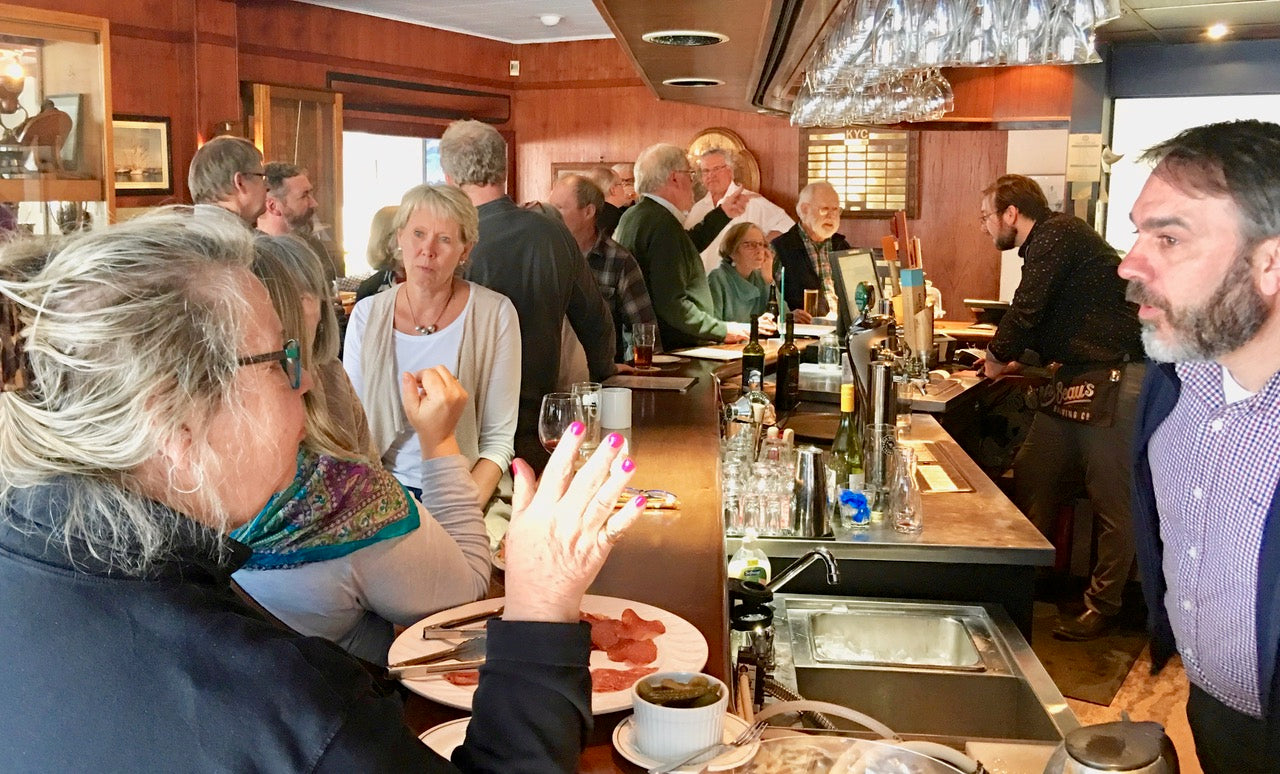
MUSTERING FOR CRUISERS
MUSTERING FOR CRUISERS
Kingston Yacht Club Cruiser's Spring Muster
Despite an ice-locked harbour as winter turned to spring cruisers from Kingston's oldest yacht club gathered to celebrate the coming of a new sailing season.
Organized by past Commodore Rosemary Wilson and board member Bob Story, the muster is a chance to mix, mingle, and share plans for the upcoming season. Story and Wilson thought it essential for the Kingston Yacht Club, and its members to make cruising a point of emphasis. Racing at many clubs is the focal point because it's so visual and prominent. The activity of race nights and weekend regattas draws a lot of attention. It is almost the opposite when cruisers go cruising. North Sails is proud to support such initiatives that help cruisers get out on the water more and celebrate their adventures on the water!
Of course, the Club, situated in one of the most beautiful sailing venues in the world, has its share of summertime event cruises. The club even has property down the river to sail and visit. But for many sailing couples and families, these events are just a little too organized, not on a convenient date or not adventurous enough. Story and Wilson wondered if there shouldn't be more recognition of members' wanderlust and sense of adventure. To throw off the lines. Leave a safe harbour to go out to explore, challenge oneself. To see new places and meet new friends. With the support of the Club, these two independent cruisers created a series of purposeful awards.
Multiple trophies are awarded each year; ranging from making the longest continuous cruise in a single season on KYC’s Home Waters (St. Lawrence River) to the highest number of miles in KYC’s Home Waters. Additionally, distance flags are also awarded to sailors sailing a minimal number of miles in KYC’s Home Waters : 250-mile flags; 500-mile flags; 1000-mile flags.
An additional aim of the Musters is to create an atmosphere for collecting and sharing knowledge gained by members who have ventured far and wide. This bolsters the collective expertise of the membership while identifying members with expertise and insight to share with others.
The spring muster was purposely designed to be held a few hours before the Club's Nautical Night speakers series. This was a win win win for all. North Sails was happy to support such a fantastic initiative on the Great Lakes and within KYC. North Sails Toronto donated three prizes that were raffled off to cruisers in attendance!
Explore North Sails line of cruising products today!
READ MORE
READ MORE
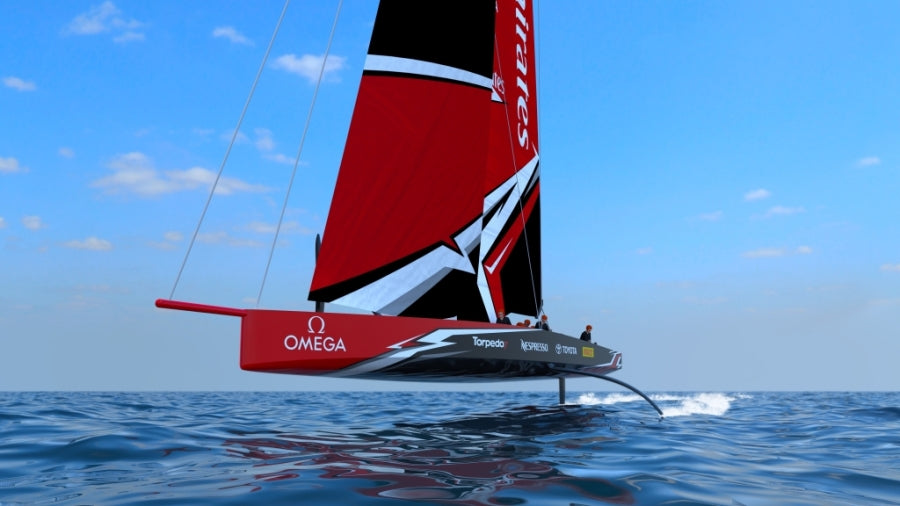
NORTH TECHNOLOGY GROUP KAO VRLO VAŽNA KARIKA NA 36. AMERICA'S CUPU
North Technology Group kao vrlo važna karika na 36. America's Cupu
Foto: America's Cup
2019. će biti povijesna godina za America's Cup, natjecanje za najstariji trofej na međunarodnoj sportskoj sceni kao i za North Technology Group s posebnim fokusom na North Sails, Southern Spars i Future Fibres, koji će imat vrlo važnu ulogu.
Kasnije ove godine, predviđeno je da timovi porinu svoje prve jedrilice tipa AC75, nevjerojatne foiling monotrupce sposobne postizati brzine kakve do sada nisu viđene na America's Cupu na regatnim poljima, kao i na bilo kojim drugim jedriličarskim natjecanjima ovog tipa.
Razvijanje snage koja gura ove jedrilice u „crveno“, a očekuje se da će se razvijati brzine od oko 50 čvorova do 2021. kad treba početi America's Cup, omogućavati će revolucionarni dizajni snasti i jedrilja koji su rezultat dugogodišnjeg ulaganja u razvoj i dizajn.
Na dva posljednja izdanja America's Cupa koristila su se kruta jedra, a ona predstavljaju izniman logistički izazov u rukovanju na većim jedrilicama. Kod njih je nužna pomoć kopnenog tima s dizalicama i prije i poslije jedrenja. I da bi se izbjegnuli logistički zahtjevi tog tipa na America's Cupu 2021. će se koristiti jarboli tradicionalnijeg stila s „twin skin“ jedrima koje će posade moći podizati i spuštati na moru, slično na klasičnim jedrilicama. Osim smanjenja logističkih zahtjeva i troškova, ovo omogućava lakše prenošenje tehnoloških dostignuća svim ostalim jedriličarima.
Tehnološki cilj je da se aerodinamička učinkovitost približi krutom krilu s prošlih izdanja dok bi se u razumnim granicama nastojala zadržati potreba za snagom koju treba koristiti za upravljanje jedriljem i kontrolnim sustavima.
Ovo nije jedan od lako rješivih problema, stoga je ključno da se uz upotrebu najboljih softverskih alata dođe do pobjedničkog dizajna.
Do danas su North Sails kao dobavljača izabrala četiri od pet timova koji trenutno treniraju za 36. America's Cup. Ovo nije slučajnost – Nort Sails je opskrbljivao sve izazivače i branitelje ovog natjecanja još od 1988. godine.
„North Sails je preuzeo vodeću ulogu u America's Cupu jer je tvrtka uvijek nastojala biti tehnološki lider“, izjavio je predsjednik tvrtke i jedriličar s iskustvom jedrenja na America's Cupu, Ken Read. „U tvrtci imamo velik broj talentiranih ljudi, a neki od njih su vodeći u svijetu u tome što rade. America's Cup je događaj koji nastavlja izazivati najveće umove i koji nas tjera gledati u novim smjerovima – tako će biti i u ovom ciklusu i mi u North Sailsu smo stvarno uzbuđeni što ćemo biti u samoj prethodnici.“
Foto: North Sails
Za predstojeći 36. America's Cup, North Sails, Sauthern Spars i Future Fibres kombinirat će svoje talente i know-how za razvoj „motora iznad palube“, koji će stvarati dovoljno snage da se generiraju brzine koje će AC75 monotrupce podizati iznad mora na hidrofoilove i tako reducirati otpor prolaska kroz more i dramatično povećati brzine jedrilica.
Ove tri tvrtke neće samo djelovati kao opskrbljivači timova. U stvari, njihovi inžinjeri i dizajneri pomogli su branitelju naslova Emirates Team New Zealand i službenom izazivaču Luna Rossi sa svojim stručnim savjetima prilikom kreiranja pravila za AC75. Također i sada, nekoliko dizajnera iz North Sailsa je integrirano u dizajnerske timove.
„Emirates Team New Zealand pristupio je North Sailsu neposredno nakon osvajanja America's Cupa na otočju Bermuda u lipnju 2017. s molbom da uz upotrebu naših softverskih alata pomognemo u modeliranju novog AC75 koncepta, da se definiraju stvari poput veličine snasti i npr. kako „twin skin“ sustav treba raditi. Kiwiji su prepoznali da smo jedini dovoljno napredni ne samo po pitanju softverskih alata, već i po pitanju ljudi koji koji su sposobni koncept dovesti do upotrebljivosti“, istaknuo je dizajner iz Nort Sailsa, Gautier Sergent.
Foto: Emirates Team New Zealand
„Radili smo na pravilima za aero paket oko osam mjeseci, tako da je dosta razvoja alata koja koristimo u North Sails Suite moralo biti napravljeno prije objavljivanja pravila za AC75.“
Od te napredne, ali generičke polazne točke, dizajneri North Sailsa koji su se od tada integrirali u različite timove America's Cupa sada rade neovisno o matičnoj tvrtci, ulažući sve svoje napore u izradu najbržeg paketa za svoj tim.
Tako je npr. Gautier Sergent član INEOS Team UK, Britanskog izazivača, gdje radi kao voditelj odjela razvoja jedara i aerodinamike.
„Razvoj na kojem sad radimo je vlasništvo timova, iako imamo timove za koje radimo i dalje smo dizajneri North Sailsa, ali koji se nadmeću međusobno. Nema prijateljstava dok ne završi regata!“
Slična priča je kod Southern Sparsa i Future Fibresa gdje su godine i godine iskustva iskorištene prilikom kreiranja dizajnerskih pravila.
„Krenuli smo tako što smo izradili manje snasti da testiramo „twin skin“ koncept, koji se pokazao prilično dobrim i tada smo krenuli s razvojem snasti u pravoj veličini. I taj proces će trajati nešto dulje“, rekao je Mark Hauser iz Southern Sparsa.
„Imamo dosta dugu suradnju s Emirates Team New Zealand koja je stvarno bez premca, tako da je bilo prirodno da pristupimo i sudjelujemo u ovoj suradnji.“
Jednako kao dizajneri i inženjeri North Sailsa, tako su i dizajneri Southern Sparsa uključeni u timove. Jarrad Wallace je dizajn inženjer koji se priključio u program razvoja snasti za INEOS Team UK.
„Snast na AC75 radi mnogo više od samog držanja jedrilja,“ kaže Wallace. „To je u stvari dio krila, tako da je sučelje iznimno važno, posebno u kontrolnom sustavu. Ključna razlika je mogućnost kontroliranja položaja vrha jedra, što je u stvari prilično revolucionarno kad su u pitanju mekana jedra i to ima ogroman utjecaj na opterećenje snasti. Naš softver koristimo za modeliranje jarbola tako da jarbol odradi svoj posao.“
„Southern Spars i North Sails su dugo vremena zajedno razvijali softverske alate i to nam je vrlo jak zajednički adut. Morali smo napraviti taj korak naprijed da bi unaprijedili način modeliranja aero paketa i mislim da trenutno nitko na svijetu to ne može napraviti na ovom nivou,“ dodao je Hauser.
„Razina na kojoj obrađujemo detalje u radu s North Sailsom tijekom ovih godina je dramatično narasla,“ objasnio je Wallace. „Trenutno dijelimo zajednički model, u koji svatko može ubacivati parametre iz svog područja i softverski analiziramo interakciju tijekom modeliranja, tako da dok dođemo u fazu izrade funkcionalnog proizvoda već smo na vrlo visokoj razini finalizacije. Kad pogledate unatrag 10 – 15 godina i usporedite s ovim danas, desila se vrlo velika evolucija.“
Burns Fallow je North Sails dizajner koji se priključio Emirates Team New Zealand u ovom ciklusu.
„Ovdje sam oko godinu dana i prvih šest mjeseci proveli smo projektirajući novu snast za Southern Spars, Emirates Team New Zealand i za Luna Rossu“ rekao je Fallow. „Nastojimo pružiti odgovor na pitanje što to možemo napraviti a da nije krilo, ali da ima mnogo karakteristika krila poput onih na dva posljednja America's Cupa. Jedna od ključnih stvari koje North Sails Technology Group ima u ponudi je ta što smo stvarno jedini koji mogu ponuditi simulacijski softver i vrlo brzo ga prilagoditi tako da postane alat koji služi da se naše ideje razvijaju i da vidimo kako će se ponašati u praksi.“
Za to je zadužen softver imena North Sails Membrain™, on balansira s podacim o pritisku vjetra, obliku jedra i snage u snasti s kompletnim dizajnom. Burns Fallow radio je s kolegom Michaelom Richelsenom na simulaciji o ponašanju „twin-skin“ na AC75.
Foto: North Sails
„Izvjestio sam Michaela o tome što želimo postići i nakon intezivnog razvoja softvera dobili smo radnu verziju Membraina koja nam je dala odgovore na velika pitanja koja su se skupila tih tjedana,“ kaže Fallow. „Od tada samo dodajemo sve više mogućnosti da možemo simulirati sve preciznije i složenije modele. Ovo je jedan od najuzbudljivijih i naprednijih projekata u koje sam uključen tijekom mojih 30 godina u North Sailsu.“
Membrain koristi podatke iz široke lepeze Northovih dizajna da simulira ponašanje u snast/jedro kombinaciji kao jedinstvenoj strukturi kad se koriste različita opterećenja. Kako se struktura deformira pod opterećenjem tako se mijenja i oblik jedra i Membrain generira podatke i vraća ih ostalim North softverskim alatima, posebno u Flow™ (koji simulira pritisak vjetra na površinu jedra i proračunava dobivenu silu), za dobivanje preciznih podataka o tlakovima. Proces revidira oblik jedra u Membrainu u kružnoj povratnoj vezi sve dok se ne postigne ravnoteža.
Od kada su objavljena pravila za dizajn AC75, Michael Richonson se pridružio timu Luna Rossa Challenge, dok se Burns Fallow pridružio Emirates Team New Zealand gdje radi u Aero Design timu. Ali kaže da projekt nije jednostavno analizaranje situacija koje se dešavaju iznad palube. Svi sustavi, krenuvši od snasti, pa prema mekanom jedru u obliku krila i njegovog kontrolnog sustava, pa do foilova ispod mora moraju se dizajnirati da rade u harmoniji.
„Ono što je u ovom trenutku kritično za svaki America's Cup tim je VPP (Velocity Prediction Program) i simulacijsko modeliranje. Moramo biti sigurni da su ulazni podaci u tom modelu, što je otprilike pola jednadžbe – aero strana nasuprot hidro strani – točni, realistični i da je pokriveno što je više moguće. Samo ovo obuhvaća stotine i stotine simulacija da bi se dobio realističan model. Ono što se posebno promijenilo u posljednjih 10-12 godina je to što je u prošlosti za ispitivanja trebalo imati dvije testne jedrilice u moru. A to je iznimno poskupljivalo postupak i po pitanju vremena i ljudi. Međutim kako softver postaje sve sofisticiraniji, razvoj koji vršimo u virtualnom svijetu je prihvaćen kao pravi test pa se koncept testiranja s dvije jedrilice polako gasi. Tako da je ravojni ciklus sad mnogo brži. Za sve dizajnere i inžinjere na America's Cupu posao neće završiti dok ne završe sve finalne regate. Zahtjev za brzinama bit će stalan sve dok se ne presiječe ciljna ravnina u poljednjem plovu. Super stvar u simulatoru procesa je što to nije samo alat za dizajnere, na kraju krajeva to je jedna velika prednost za tim kao cjelinu. Treba zapamtiti da je koncept AC75 star samo godinu dana i što smo na početku imali bilo je prilično šturo. Kad se ovog ljeta porine prva jedrilica dobit ćemo priliku da potvrdimo u stvarnosti ono što smo proizveli, a jednako tako ćemo dobiti i priliku da shvatimo gdje smo bili u pravu i gdje možemo unaprijediti naš simulator i da u konačnici postanemo još bolji,“ zaključio je Fallow.
I kada 36. America's Cup bude gotov u 2021. dizajneri i inženjeri iz North Technology Group okupit će se i zajedno napraviti zaključni sastanak s ciljem da unaprijede alate svoje tvrtke za dizajn jedara i snasti za mnoge druge klase.
„Kad ste uključeni u novi projekt dijelite iskustva i znanja koja imate, Ne sjedite samo u svom malenom mjehuru,“ kaže Fallows. „To je način da budete bolji. Tako tvrtka postaje sve jača.“
READ MORE
READ MORE
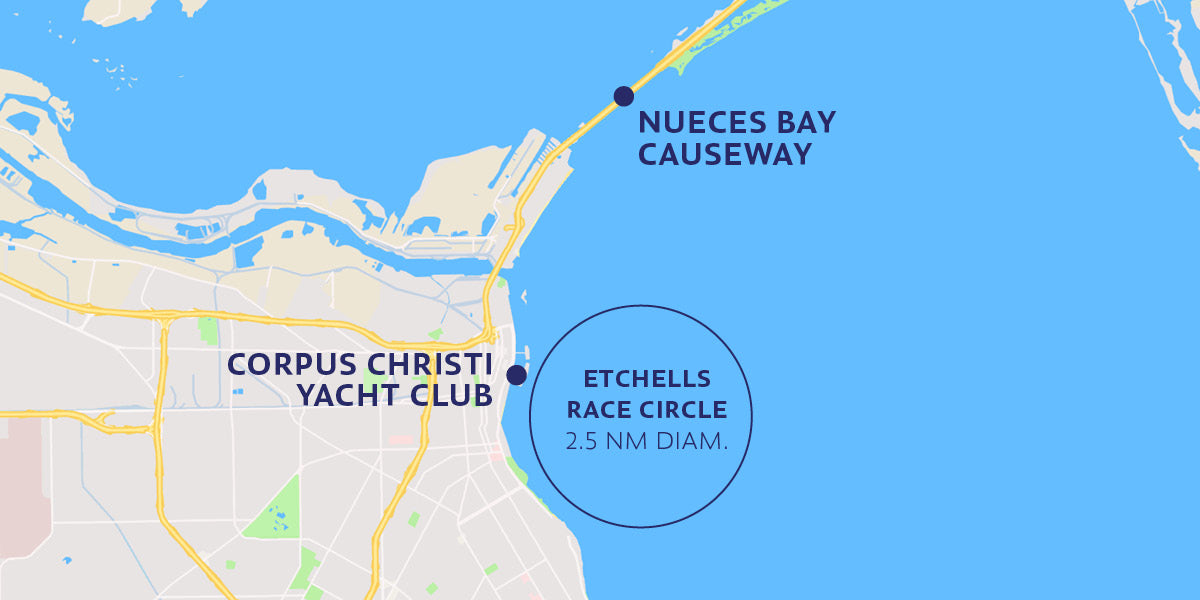
CORPUS CHRISTI BAY IN LATE MAY
CORPUS CHRISTI BAY IN LATE JUNE
Local Knowledge by Mark Foster
For the past 50 years, Mark Foster has raced and sailed in Corpus Christi, the location of the 2019 Etchells World Championship. Here are some of his experiences with the wind, waves and current patterns that normally occur during a June afternoon.
The sea breeze will be fairly consistent with small shifts. The pressure will build from the left side of the course. The normal SE sea breeze develops with the heating of the land and takes about 10 degrees of temperature differential to develop. Bay water in late June should be in the mid 80s. The sea breeze can start as far left as 90 degrees and as far right as 170 degrees, but it usually settles in around 125 to 140 and then builds to 15 to 18 knots, gusting to 20.
Pull out a bay chart and locate the Nueces Bay Causeway, the long low bridge with a small hump in it that you’ll see when sailing out of the gap. Looking upwind, the wind will build faster on the left side of the course, because it can blow over the causeway rather than into the downtown buildings. So, while the general consensus is to go right, it can pay to work the left side of the course as the winds builds from 8 to 15.
The wave pattern is consistent across the course. The bay averages 10 to 14 feet deep. With the SE breeze, the waves have 8 to 10 miles of fetch before they reach the race course. Big waves come in sets of three, and you are advised to try and avoid them at all cost. Going upwind, starboard tack is more into the waves and port tack is more across the waves. Set your sail trim for each tack. In general, you will find that port tack is faster than starboard.
What is the best way to sail around the waves upwind? My advice is to steer “downhill” by keeping the bow pointing to the next low spot, so that the boat is going downhill as often as possible.
The sea breeze will set up a wind-driven current that flows northwest towards the Harbor Bridge and returns up the bay inside Alta Vista reef. The current is consistent across the course and usually does not exceed ½ knot; it should not be a factor in the racing. The Alta Vista reef runs parallel to the shore, approximately ½ mile off the bay front, with two markers noted on the bay chart: Number 1 is a buoy on the north end and Number 3 is a piling with a day marker on the south end. The race course will be set outside the reef.
Hopefully this gives you some insight to the local sailing conditions in Corpus Christi.
READ MORE
READ MORE
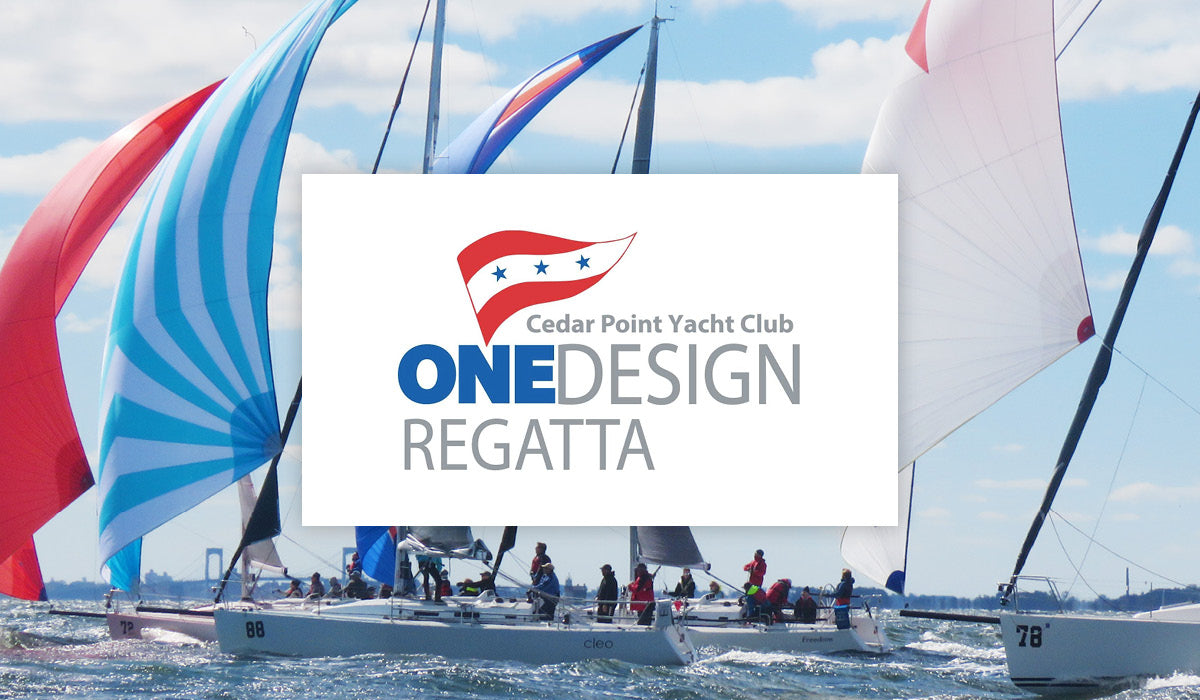
2019 CEDAR POINT ONE DESIGN REGATTA
CEDAR POINT ONE DESIGN REGATTA 2019
Coffee With North | Weather Tips | Sail Care
North Sails is excited to continue supporting the prestigious Cedar Point One Design Regatta, kicking off the sailing season in the New York, Connecticut area. Our North experts will be there to offer your team full support, both on and off the water, daily weather debriefs, tip of the day, raffles, overnight repair service and a lot more.
Coffee With North
Join the North Sails experts Brian Hayes, Jack Orr, Tom Castiglione, Zeke Horowitz, Allan Terhune, Pal Van Dyke every morning at the North tent for a cup of fresh brewed Joe and some morning snacks. Make sure to check weather debriefs and tips for the day from our local experts.
Regatta Repair
Our Certified Service Expert Bill Walker will be on site picking up sails after racing on Saturday and returning them on Sunday morning. Open to all boats for overnight sail repair, we will be there to offer every crew the peace of mind when it comes to sail care matched with expert service.
READ MORE
READ MORE

MINI 6.50
MINI 6.50
Pornichet Select
📸Bruno Bouvry
La première course en solitaire de la saison s’est déroulée le week-end dernier sur un parcours de 230 milles. 84 bateaux sur la ligne avec un départ décalé à cause d’une météo difficile et de l’état de la mer chaotique.
En classement proto, Axel Tréhin (945) et François Jambou (865) se sont livrés un combat exceptionnel, 5 minutes les séparant sur la ligne d’arrivée après 1 jour et 19 heures de courses.
Axel signe une très belle 2ème place. Pour l’occasion, il testait son nouveau grand spi North Sails.
En classement série, Ambrogio Beccaria (943) a dominé cette épreuve du début à la fin, et s’adjuge une magnifique victoire. Félix De Navacelle (voile plate) et Matthieu Vincent (2 voiles de portant) terminent respectivement 2ème et 3ème. Quel beau podium pour les voiles North Sails.
Prochaine épreuve, la Mini en Mai dans une semaine à La Trinité sur Mer.
READ MORE
READ MORE
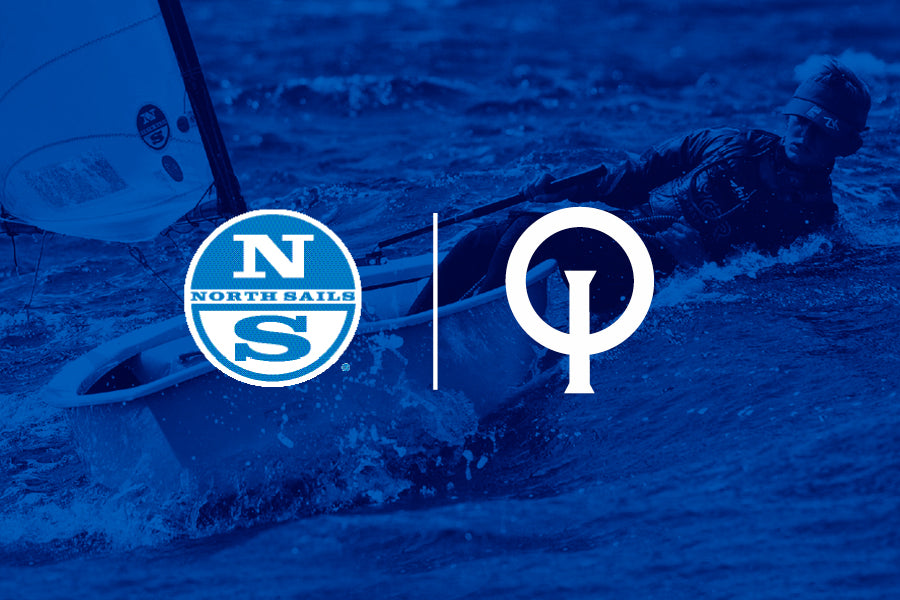
NORTH SAILS GANA EL NACIONAL DE OPTIMIST
NORTH SAILS GANA EL NACIONAL DE OPTIMIST
Los más pequeños continúan agrandando el palmarés de North Sails en competición.
Los cuatro campeones del recién disputado campeonato de España de Optimist (Valencia, 14 a 19 de abril) lograron sus victorias equipando velas North Sails R2, y desde aquí queremos felicitarles por su hazaña y agradecerles su confianza en nuestros productos. Felicitamos a los nuevo campeones de España de Optimist: Javier Ojeda (campeón de Sub16 masculino y ganador absoluto del certamen), María Perelló (Sub16 femenino), Pol Nuñez Vía-Dufresne (Sub13 masculino) y Nicola Sadler (Sub13 femenino).
¡Gracias, campeones!
READ MORE
READ MORE
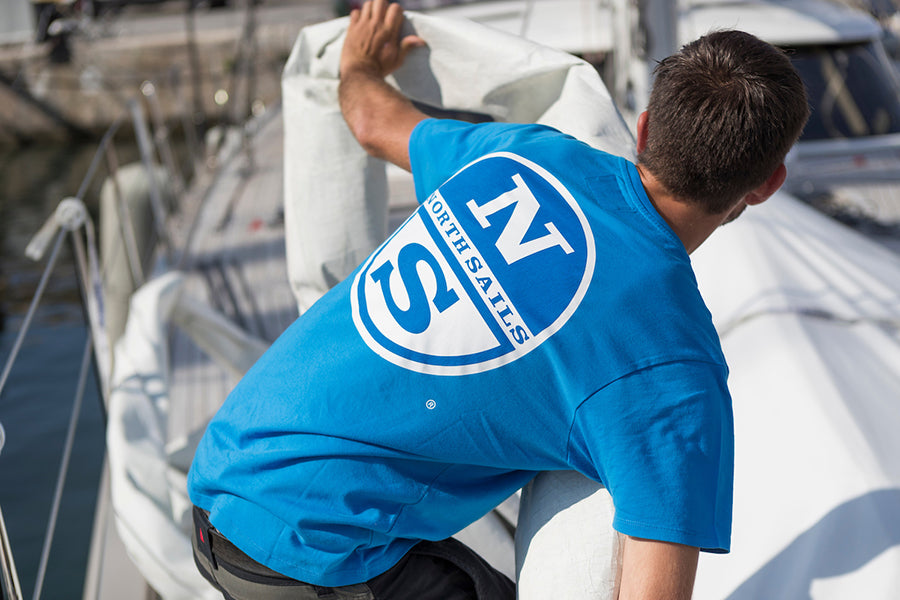
Consejo North Sails
CONSEJO NORTH SAILS
El calendario de regatas comienza a alcanzar velocidad de crucero, y desde North Sails queremos recordarte unas pautas básicas para que disfrutes de tu tiempo de navegación.
📸 Ian Roman
La anticipación resulta vital a la hora de garantizar que tenemos el barco listo para cuando suene la señal de salida, por lo que se impone una revisión completa con el mayor margen posible: mástil, cabuyería, electrónica, motor,... y, por supuesto, las velas. Para garantizar que se encuentran en estado óptimo, os recomendamos poneros en contacto con cualquier experto North Sails o directamente con nuestro equipo a través del email info@es.northsails.com. Estaremos encantados de resolver vuestras dudas y facilitaros el acceso a nuestro Servicio Certificado North Sails, el único que garantiza la puesta a punto más exhaustiva realizada por los mejores profesionales. ¡Recordad que disponemos de servicio de recogida y entrega en cualquier punto de la geografía española!
Para más información, contacta con tu agente North Sails, visita www.northsails.com o escríbenos a info@es.northsails.com
READ MORE
READ MORE
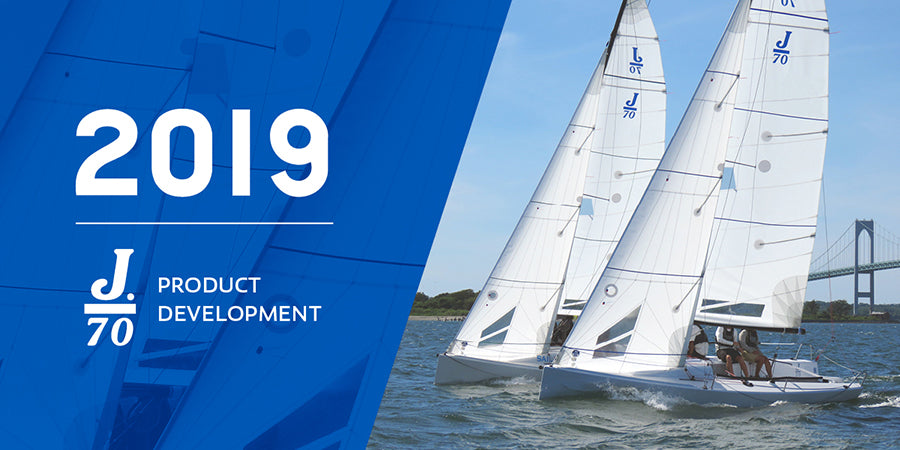
NUEVA MAYOR PARA LOS J70
Desarrollada específicamente para palos Selden o Southern Spars, ofrece un diseño más plano y equilibrado para adaptarse a la flexión del palo en todas las condiciones.
READ MORE
READ MORE
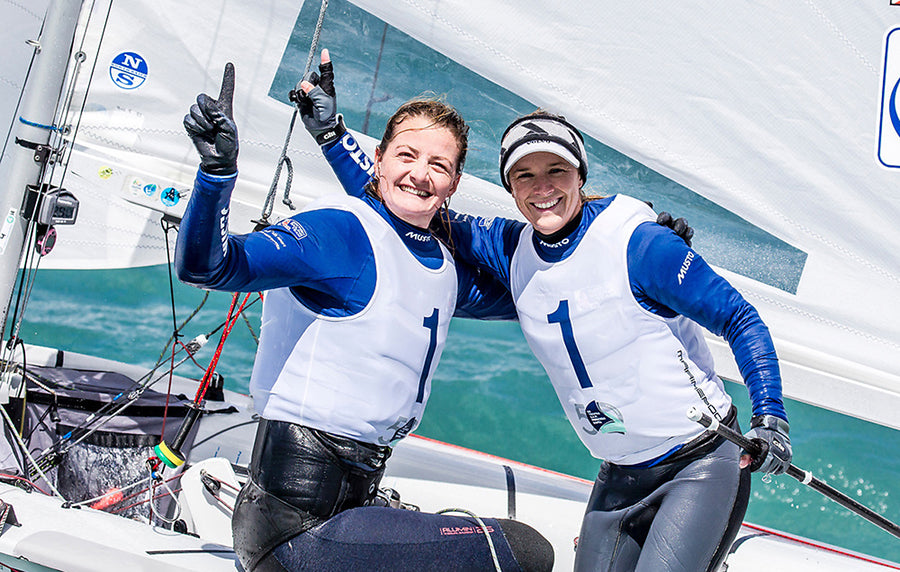
ÉXITO EN EL PRINCESA SOFÍA
ÉXITO EN EL PRINCESA SOFÍA
El Trofeo S.A.R. Princesa Sofía celebró sus bodas de oro con excelentes noticias para los clientes North Sails.
📸 Sailing Energy / Trofeo Sofía Iberostar
El podio de clase 470 femenino estuvo copado por nuestras velas, con victoria absoluta del combinado británico (Hannah Mills y Eilidh McIntyre). En 470 masculino, North Sails propulsó a los dos primeros clasificados: el campeón sueco (Anton Dahlberg y Fredrik Bergström) y el subcampeón español (Jordi Xammar y Nicolás Rodríguez). Podio completo también para la marca en clase Finn, con victoria final del neozelandés Andrew Maloney. Desde North Sails España felicitamos a los ganadores y agradecemos su confianza a todos nuestros clientes.
READ MORE
READ MORE
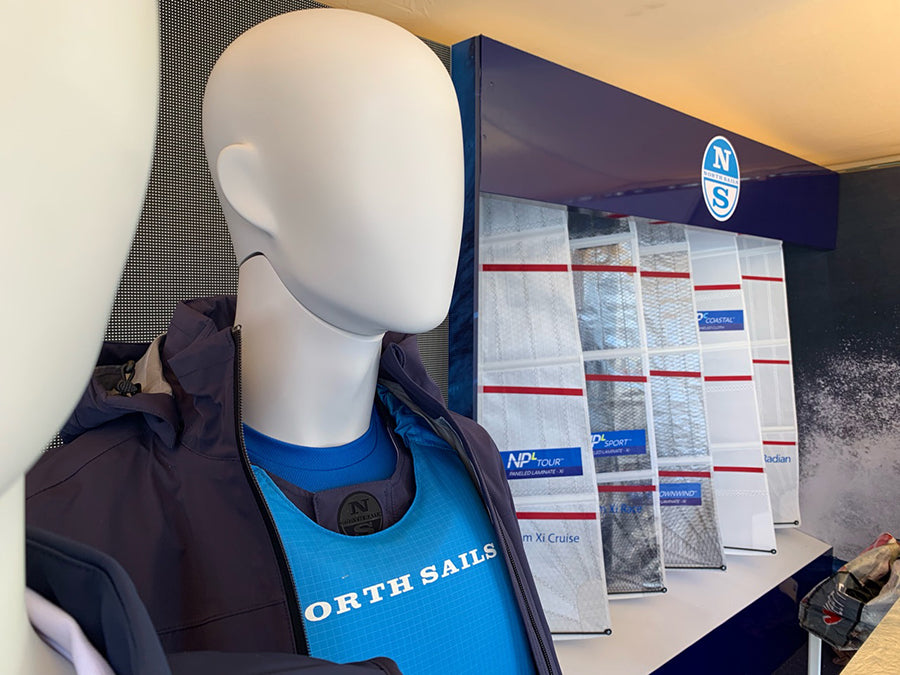
NUEVA 3Di OCEAN EN SALON NAUTICO DE PALMA
NUEVA 3Di OCEAN, NOVEDAD NORTH SAILS EN EL SALÓN NÁUTICO DE PALMA
North Sails repitió presencia en Palma International Boat Show desplegando su extensa gama de productos, en la que destacaba como novedad absoluta la nueva 3Di Ocean, lo último en velas para superyates de crucero oceánico.
Palma International Boat Show supone una cita ineludible para el sector náutico, tanto por su posición estratégica en el corazón del Mediterráneo como por las fechas de su celebración (27 de abril a 1 de mayo), justo antes del comienzo de la temporada de grandes regatas del Mediterráneo. En su 36ª edición, Palma Superyacht Show, su zona temática para superyates, acogió la mayor reunión de Europa de veleros con esloras superiores a los 24 metros, un nicho dominado por North Sails y en el que sus dos velerías de Mallorca componen el mayor centro de servicio especializado del mundo.
Luis Martínez Doreste, director comercial de North Sails España explica:
"El salón náutico de Palma es un evento de referencia para nosotros. Se celebra a escasos kilómetros de nuestras dos velerías especializadas en superyates (Palma y Llucmajor), por lo que supone una ocasión excepcional para encontrarnos con nuestros clientes y realizar nuevos contactos prácticamente sin salir de casa."
La vela ideal para crucero oceánico
La gran novedad North Sails en el 36th Palma International Boat Show fue la nueva 3Di Ocean,
"Un producto ideal para armadores de cruceros oceánicos de gran eslora que valoran especialmente el compromiso entre durabilidad y prestaciones", explica Martínez Doreste.
Su composición con alto contenido de UltraPE proporciona un equilibrio inédito entre durabilidad y facilidad de uso al reducir volumen, peso y rigidez al tiempo que conserva los mejores niveles de dureza y fiabilidad asociados a la tecnología 3Di. Disponible en una gama de tres colores, llega al dossier North Sails para completar la familia 3Di junto a las ya conocidas RAW, ENDURANCE, NORDAC y DOWNWIND.
Pero en el Salón de Palma no todo fueron grandes esloras. Marc Patiño, responsable comercial de North Sails en Mallorca, recuerda que los superyates suponen un segmento clave para la firma, pero no la única razón de su presencia en el salón.
"Aunque nuestro principal mercado en la isla es el de los superyates, prestamos servicio de velería a todo tipo de embarcaciones. Por el salón de Palma pasa todo el sector, así que sin duda es una cita ineludible para nosotros."
Para más información sobre North Sails, visita https://www.northsails.com o contacta con nosotros en info@es.northsails.com
READ MORE
READ MORE
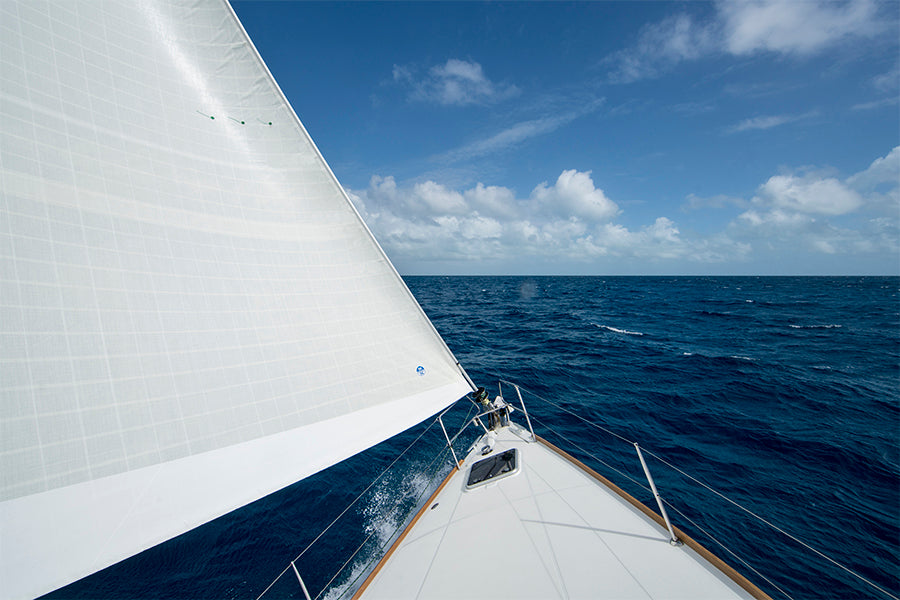
FREMTIDENS TURSEJL
FREMTIDENS TURSEJL
3Di NORDAC tursejl skal holde den vigtige vingeform i mange år. Det er hvad der forventes i forhold til almindeluge vævede dacron-sejl, som på få år bliver for dybe, hvilket resulterer i mere krængning og lavere fart.
minbaad.dk tester i Caribien
3Di NORDAC-sejlet er utroligt strækstabilt og let at trimme. Det viste en fem timers test på en Beneteau 45, som vi sejlede ved British Virgin Island, imellem fem og ni meter pr. sekund. Hele sejladsen foregik på kryds. Bølgerne var krappe, og den friske vind gjorde, at vi måtte rebe det hvide storsejl med gennemgående sejlpinde. Sejlet var let at rebe, selv om dugen er noget mere hård end en traditionel dacron-dug. Det første, man lægger mærke til, er, at 3Di-dugen har et specielt udseende, som ikke ses lignende hos andre sejlfabrikanter. Det ser karakteristisk ud og er North Sails 3Di-signatur.
Stærkt og fladt 3DiNORDAC-dugen er stærk og sejlet er dejligt fladt, men stadig med power i. Det gav sig ikke en tomme undervejs, selv ikke når større pust ramte os. En regnskylle kom også ind over os, da vi krydsede i British Virgin Island fra Tortola mod Gorda i 25 graders varme. Regnen perlede straks af sejlet. Faktisk er det umuligt for fugt at trænge ind i North Sails 3Di NORDAC-sejlet, da sejlet i polyester er mættet med lim og samtidig ikke er lamineret med film og taffeta. Det erfarede vi få uger før sejlturen, da vi besøgte fabrikken i Minden i USA. Her så vi, at 3Di-sejlene lå til hærdning i syv dage under den 22 dage lange proces, hvor sejlene bliver produceret. 108 procents fokken stod også, som den skulle, tilpas flad, men med power i. Sejlet gav sig ikke. 3Di er et komposit, hvor der anvendes mere avanceret lim og ingen mylarfilm, som det ellers ses hos de fleste sejlproducenter. Det betyder med andre ord, at 3Di NORDAC-sejlene kun anvender udspredt filament-tape, hvilket så udgør hele sejlet. Et 3Di-sejl kan derfor ikke delaminere.
Enkel at trimme og mindre krængning Jesper Feldt, sælger og daglig leder af North Sails Danmark, tror på, at 3Di-sejlet kan blive det foretrukne sejl for fremtidens tursejlere i Danmark og fortæller om den positive feedback fra kunderne på 3Di NORDAC-sejlet:
"3Di NORDAC er meget enkelt at trimme og holder formen længere end de hidtidige vævede dacron-sejl. Med den rigtige facon får du mere ud af sejlet og kan enkelt balancere din båd og kontrollere krængningen. Hele North Sails’ dna er, at sejlerne skal kunne sejle stærkere og mere sikkert, og sjovt nok er hurtige sejl enkle at trimme og holder faconen."
"Vi har alene i Danmark solgt over 250 3Di NORDAC-sejl det første år, så det ser ud til at blive tursejlernes foretrukne sejl. Danskerne vælger nu et sejl, der er bygget med den nyeste teknologi og som holder i mange år. De fleste tursejl, der i dag produceres med polyester, begynder at miste deres facon efter to-tre år, hvor 3Di NORDAC holder faconen år efter år."
Mere værdi for pengene Leveringstiden for det nye 3Di NORDAC ligger på mellem fem til otte uger. North Sails’ CEO Dan Neri, der holder til på hovedkontoret i New Port, Rhode Island i USA, var med om bord til testen i Caribien. Han fortæller, at North Sails nu satser stort på 3Di NORDAC til tursejlermarkedet. Vi tror på, at 3Di NORDAC vil dominere fremtidens tursejl, fordi det er et sejl, hvor man får stor værdi for pengene. I dag er vi verdens største producent af tursejl med 4.500 solgte tursejl årligt ud af de 33.000 sejl, vi sælger årligt (10.000 one design-sejl, red.), forklarer Dan Neri fra North Sails. Firmaet blev startet i 1957 af Lowell North i San Diego, USA, og har i dag 1.500 ansatte, fordelt på 150 sejllofter i 29 lande. Heraf arbejder de 15 i Danmark. North Sails har udviklet 3Di NORDAC gennem længere tid på 3Di-fabrikken i Nevadaørkenen i Minden, hvorefter man har ladet 45 kunder teste sejlene i over et år under alle vind- og vejrforhold.
North Sails 3Di NORDAC har vægt som et almindeligt tursejl i dacron-dug og er bygget med North Sails patenterede 3Di-teknologi. Materialet er polyester, et fleksibelt materiale, der er 17 gange mere fleksibelt end et 3Di-sejl med kulfiber. Det nye 3Di NORDAC-sejl er dermed mere tilgivende og kan bedre absorbere chokeffekt, hvis man fx rammer en stor bølge, og båden går i stå. Produktionsmetoden sikrer samtidig, at sejlet ikke kan delaminere, da der anvendes termoset-lim og ikke en film på sejlet, hvilket ellers ses på alle laminatsejl.
Sejlet bygges i Minden i USA og på Sri Lanka og er stærkt, hvor der er behov for det - fx ved skødebarmene. Dugen til fx en 30 fods båd består af fire lag ultra tynd polyestertape midt i sejlet og 20 lag polyestertape i skødebarmen, hvor der er stor belastning. Sejlet bygges til både op til 45 fod, og her vil der typisk være mellem seks, otte eller 10 lag polyestertape. Der er op til 50 lag ultra tynd polyestertape i skødebarmen på sejl til både op til 45 fod. Dugen er vandafvisende på grund af limen i sejlet, der fuldstændig afviser vandet, modsat almindelig dacron-dug, der suger vand. North Sails gør dermed op med den vævede dug, der har fyldt det meste af markedet i mere end 60 år.
READ MORE
READ MORE
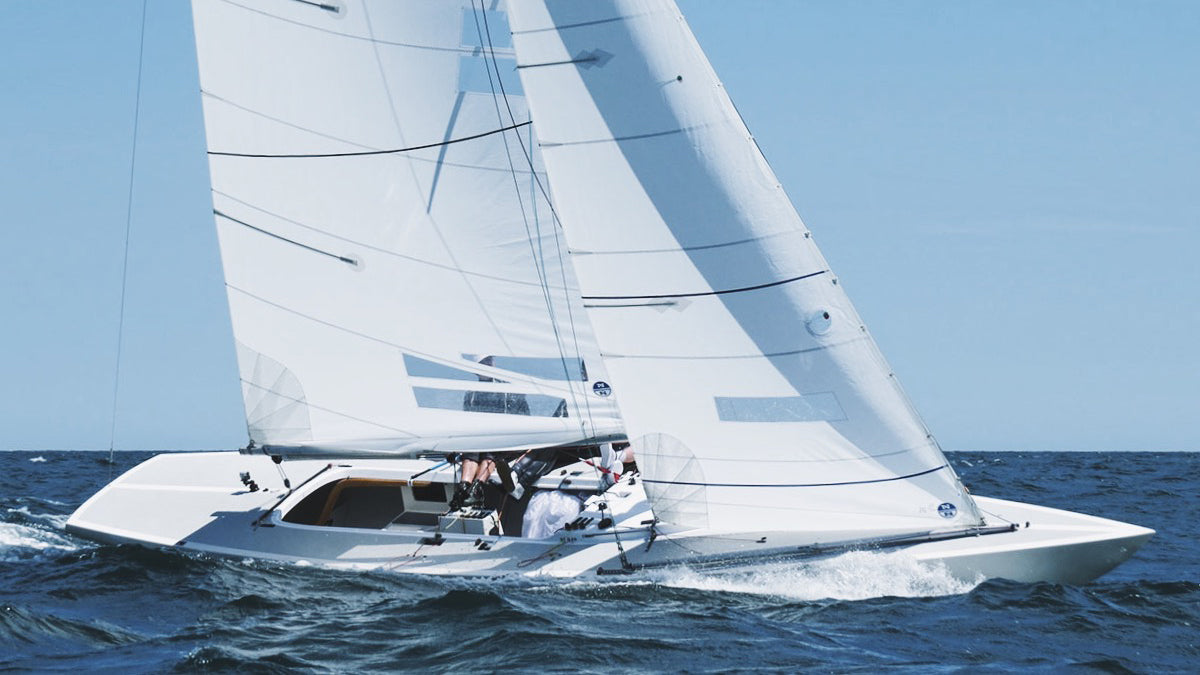
ETCHELLS SPEEDY TIPS
ETCHELLS SPEEDY TIPS
Quick Tips That Make All The Difference
Whether you are preparing for the Worlds, a local regatta, your country’s nationals or your club’s summer series, we have compiled a series of speedy tips from North Sails Etchells experts that will help you step up your results.
Don’t forget the jib trim setup. We spend a lot of our time focusing on the mainsail when the headsail is usually 67% of the total drive force.
Light Air Jib Setup Under 8 knots
Use the soft full length batten.
Add forestay sag by easing the backstay.
Add prebend in the mast by easing the mast lever or reducing mast blocks.
Trim the sheet to have the upper leech tell tale flying 90 to 100% of the time.
Jib Trim
Use the tuning guide’s spreader marks as your trim guide for consistency.
Battens For Light Air
Use the soft full length top batten combined with the shorter length lower leech battens. They make a big difference.
Getting A Good Start Is Critical
The more you can practice starting, the better. Work on your line sights before each start and work to get a “movie” line sight for the bow person, watching to leeward as you approach the line so they can be calling accurate distance to the line as you approach. That, plus a good clear call on time is invaluable.
Straight Starting
The Etchells is a heavy keelboat with the rudder attached to the skeg and does not turn that well. Try not to bear off too much on starboard in the last 45 seconds to the start. Keep the jib trimmed in, or luffing about halfway if necessary, to help the helmsperson find the right angle to build speed in the last 15 seconds or so.
Watch The Layline
Unless you are in the top 3-5 boats at the first windward mark, NEVER EVER get to the layline more than 10 lengths from the mark because you’ll spend too much time in bad air from the boats ahead. Instead, find a clear lane back to the middle, and then work to get up to the layline inside ten lengths from the mark. Bad things happen to good people who get to the layline too early!
Do Your Homework
Arrive a few days before each event to get reacquainted with the boat and your teamwork. A day or so of practice really helps shake the cobwebs, and, if you are working with a coach, is a chance for some good analysis of setup and general trim. Having a good training partner helps a bunch, especially if both teams are keen to learn and share.
Never Stop Practicing Time/Distance Drills for Starting
Good starts typically yield good finishes. In the uber-competitive Etchells fleet, getting off the line is essential as the fleet thins out very fast and lanes are at a premium. Try to get proper line sights (safe ones!) and practice accelerating and decelerating as you approach the line. The goals are always the same: cross the starting line as close as you can, on your best exit angle, and at top speed!
Don’t Wait Too Long To Take Down The Spinnaker
The Etchells will keep its momentum into the bottom mark and any loss you think you give up with an early drop is overshadowed by a clean rounding in a good lane with speed and everyone hiking. Speaking of hiking, it works every time, so don’t take long breaks in the breeze. The Etchells responds nicely to a hard hiking crew, even though it hurts!
Tuning Evolution
It is amazing to see how this great boat continues to evolve. The addition of the mast lever and intricate in-haul systems have really helped make the boat so much more adjustable from the rail. You can adjust your sailing mode to the racing situation: maybe a high mode to live in a lane, or a more open bow-down mode to capitalize on a shift. I have been sailing these boats since the 1980s and I am still learning every time I race them.
Smooth Versus Bumpy Water Set Up
I have found that fast settings for smooth water often do not work as well in bumpy water and vice versa. Bumpy water versus a big sea swell also changes what set up works best. In general terms, fuller sails with more twist seem to work well when the water is rough, while flatter sails with harder sheeted leeches seem to be better when the water is flat.
Spreader Angle and its Effect on Mainsail Luff Curve
Each Etchells mast is a little different in bending characteristics. The mast ram can have a big effect on getting the mast to match the sail’s luff curve, but spreader angle also has a part to play here. A more forward or straight-out spreader angle makes the mast stiffer. A more aft-sweep spreader angle lets the mast bend more easily, particularly in the middle section. A fair curve that matches the sail best is the ticket.
In Miami, Consistency Pays
Miami continues to be venue where consistency pays. Taking chances usually produces a high scoring race. I try to be conservative on the line, starting in the middle third. From there, I work my way to the favored side as I progress up the first leg.
New Sails are Better Than Old Sails!
We used unbuttoned sails for the first 3 winter series events to save our buttoned sails for the Midwinters, a sanctioned event. Fresh sails do make a difference, especially with jibs.
Flat Water Tuning
Biscayne Bay is very specific with its flat water conditions. Most other venues tend to have more chop or swell, so you’ll have to revert back to settings with a little less rake and slight fuller flying shapes.
Find A Clear Lane
Find a clear lane free from boats too close to leeward, so you can put the bow down and reach max speed.
Put The Keel To Work
It often takes as long as a minute to reach max speed with the bow down. After you do, you start to sail higher as the keel begins to work.
Crowded Leeward Mark
At the leeward mark, if you are in a group of boats with only a marginal chance of gaining an inside overlap, hold back and round behind to allow a high lane exit. This allows you to sail to the side for longer. Tacking back into the middle too soon after rounding is usually a loser.
READ MORE
READ MORE


